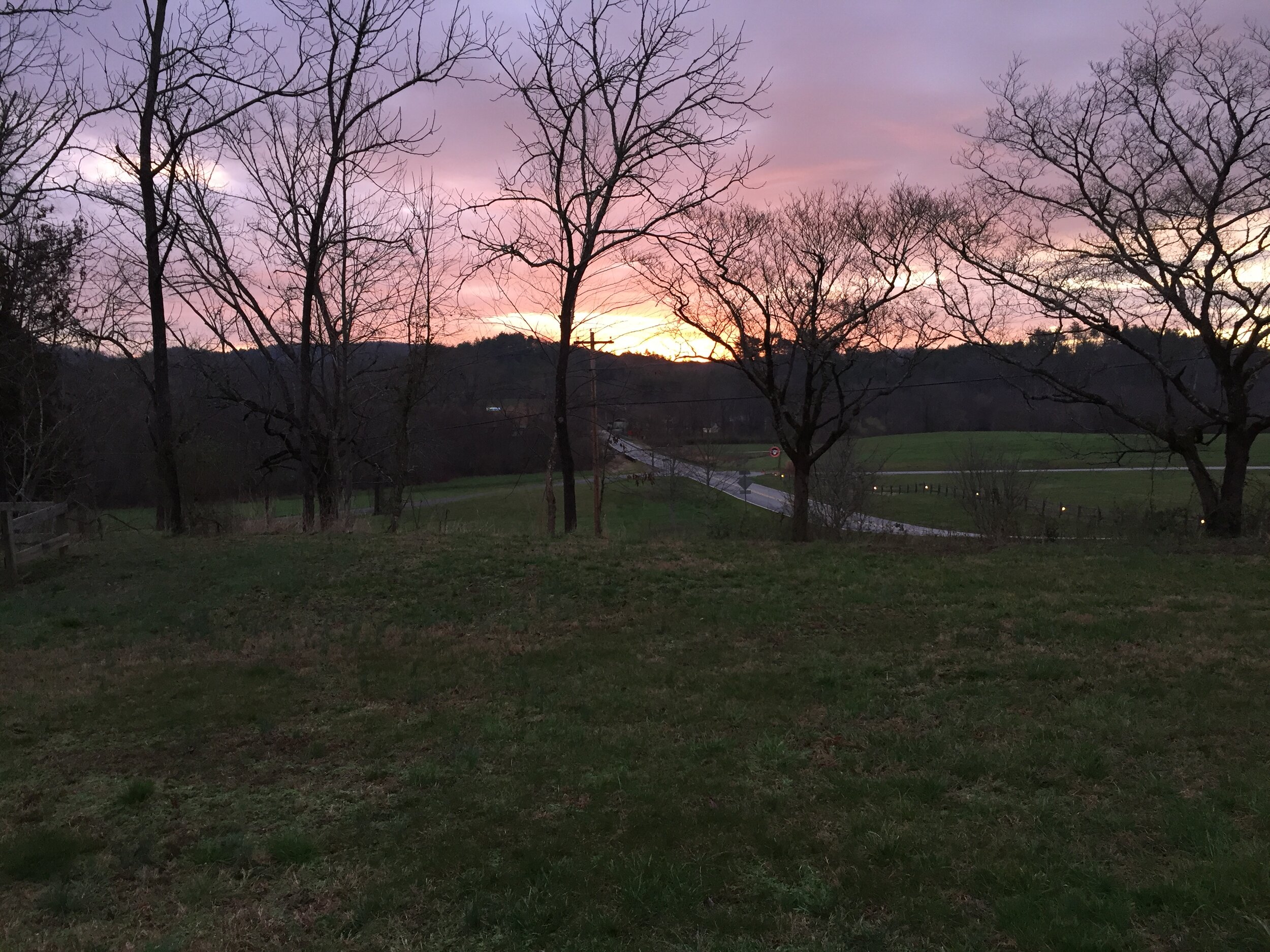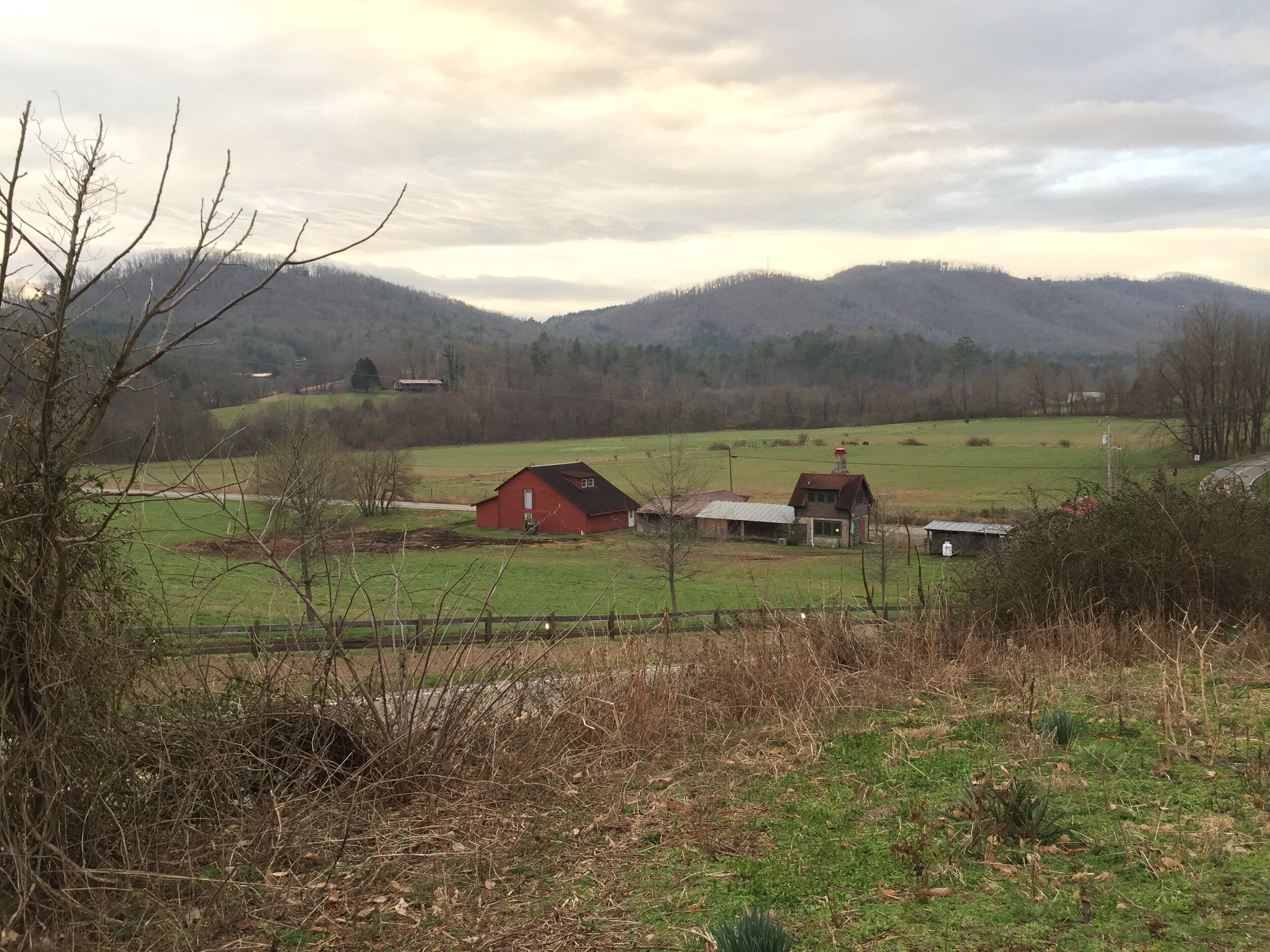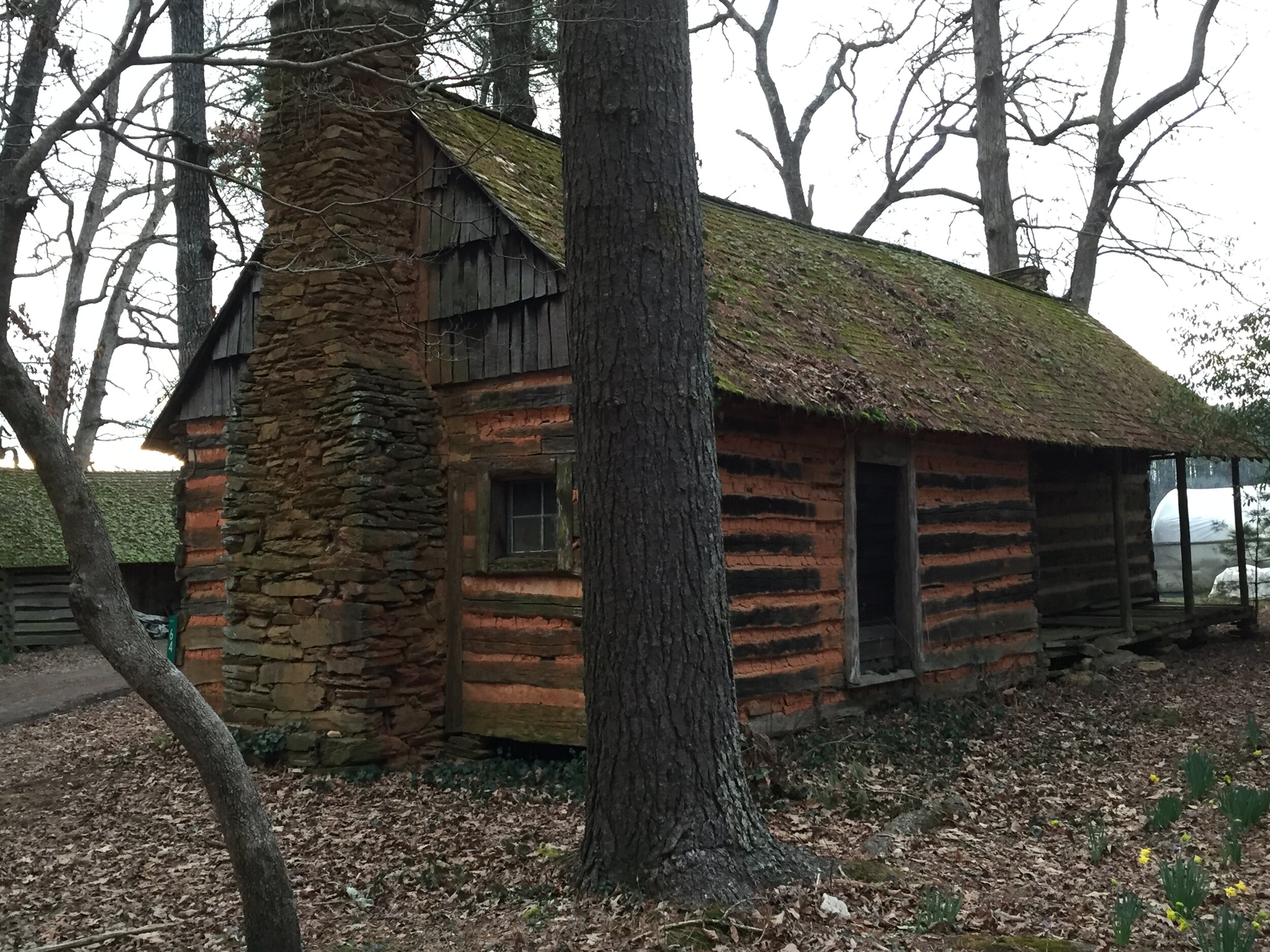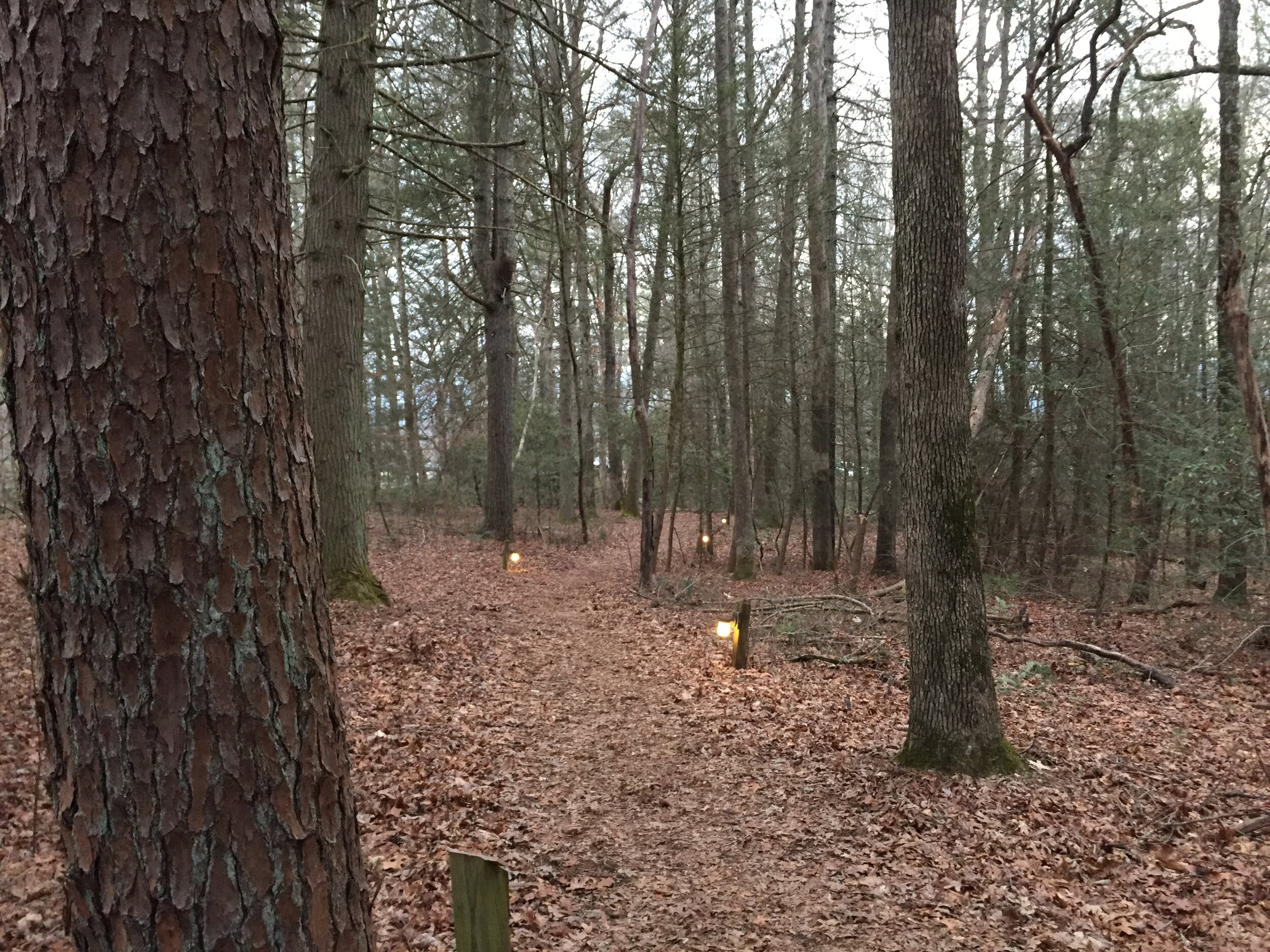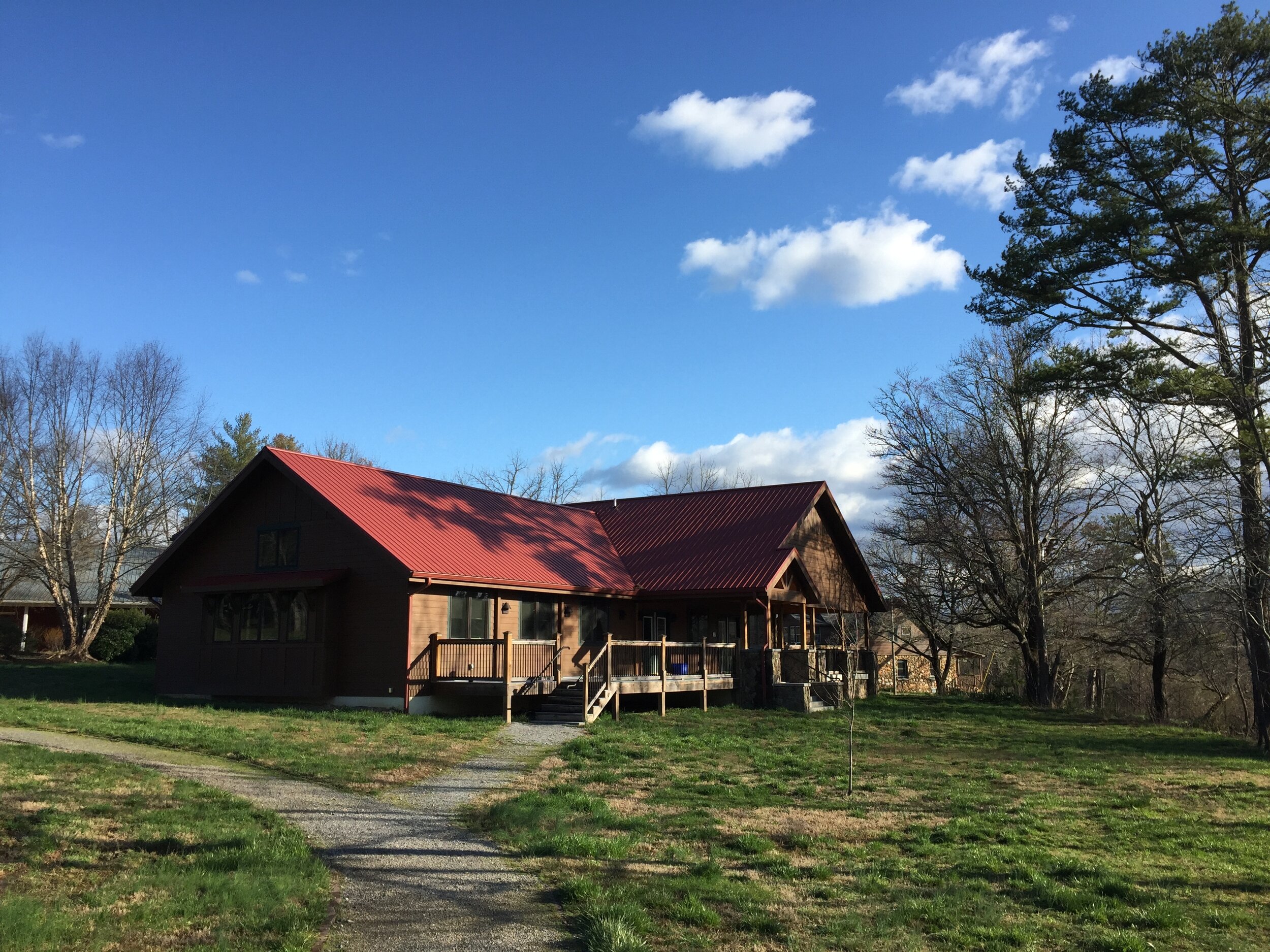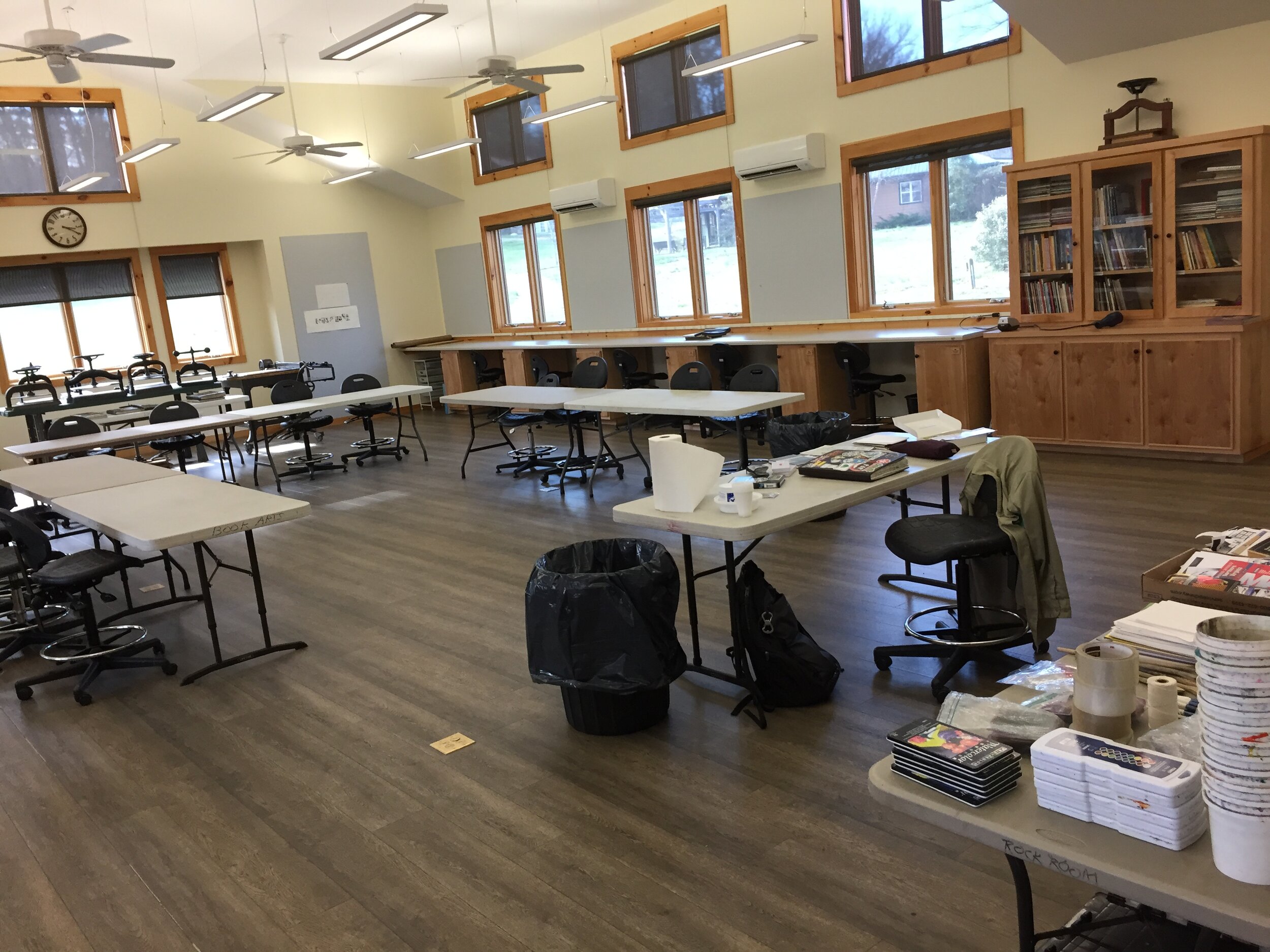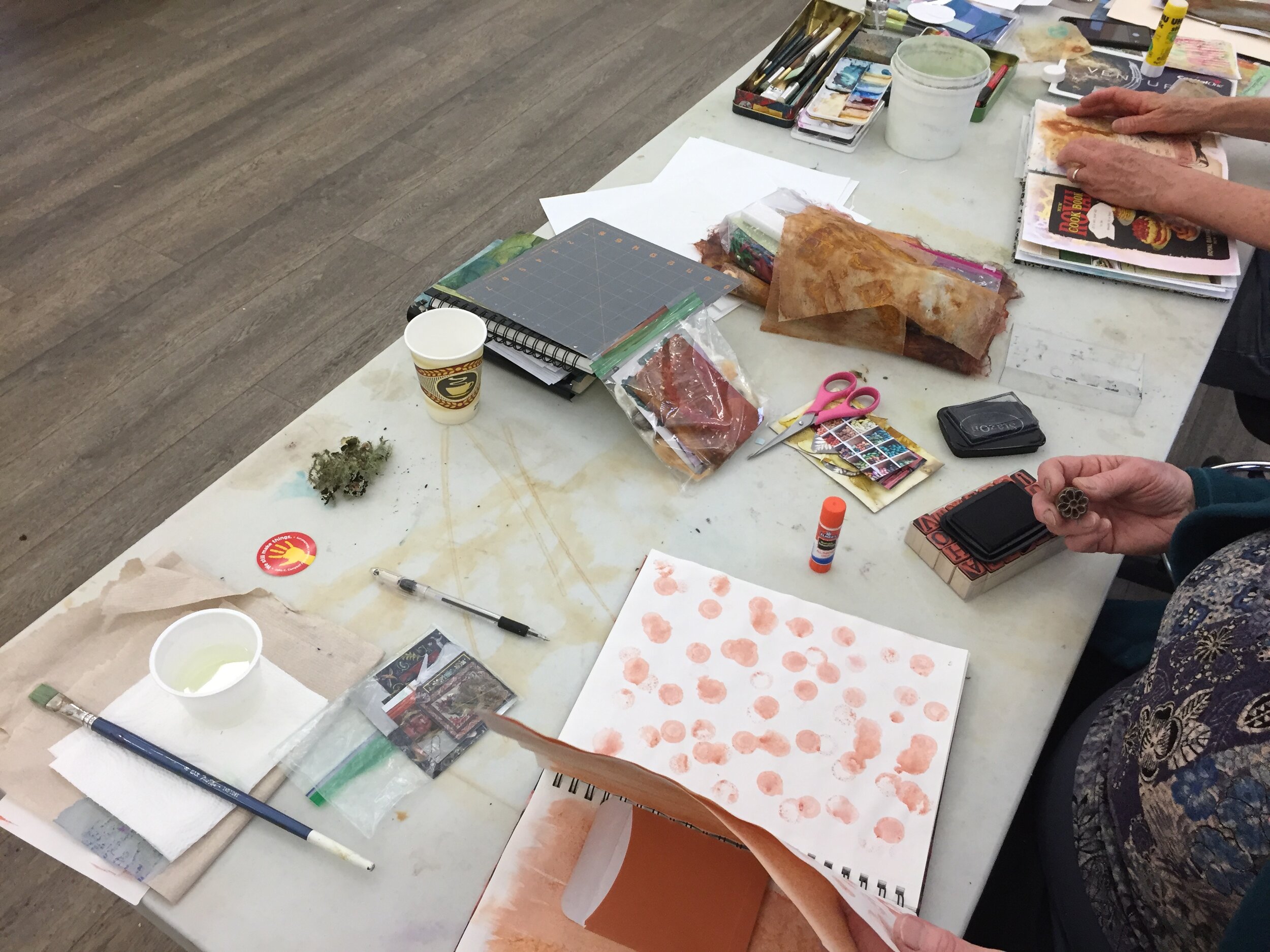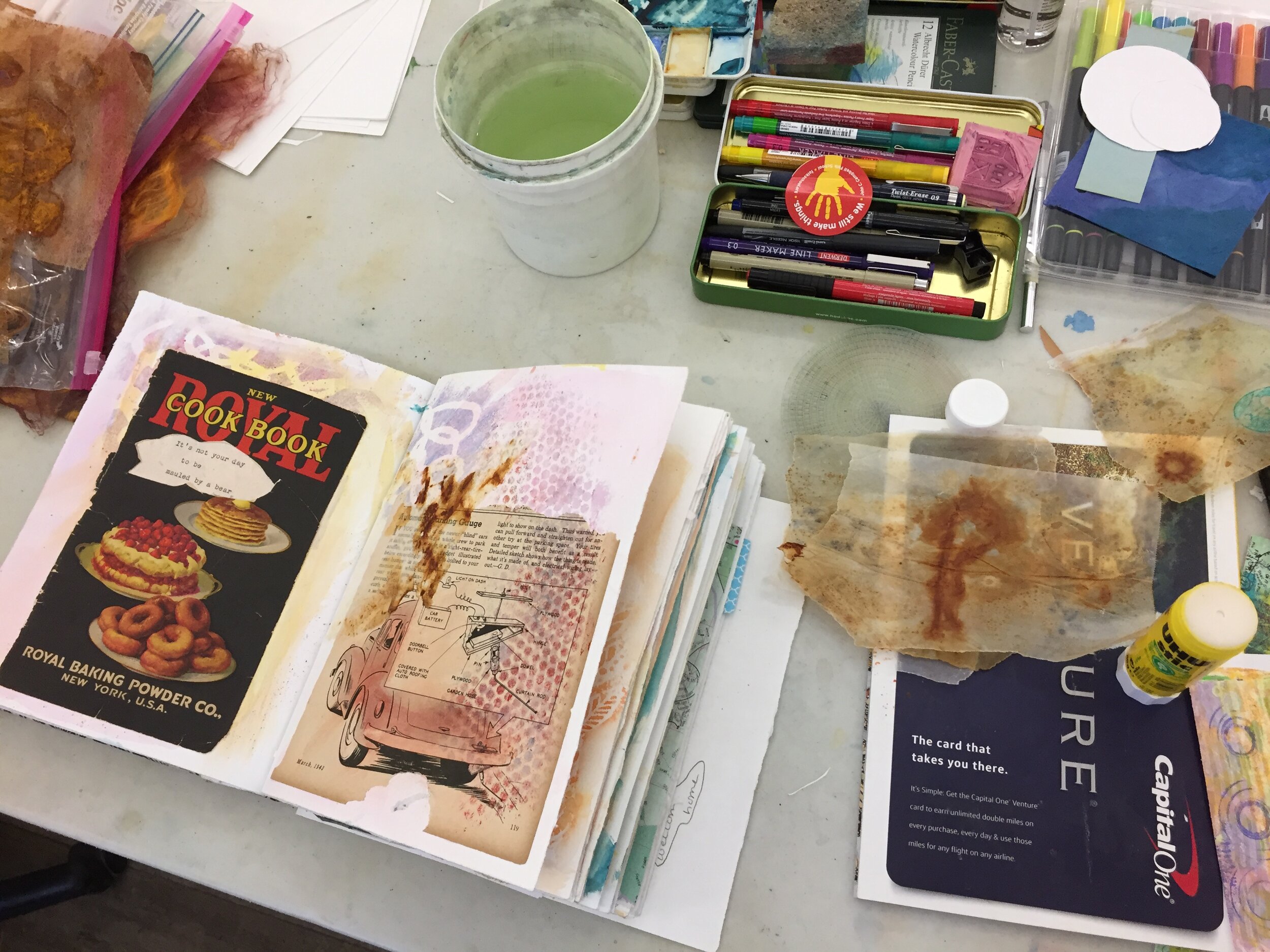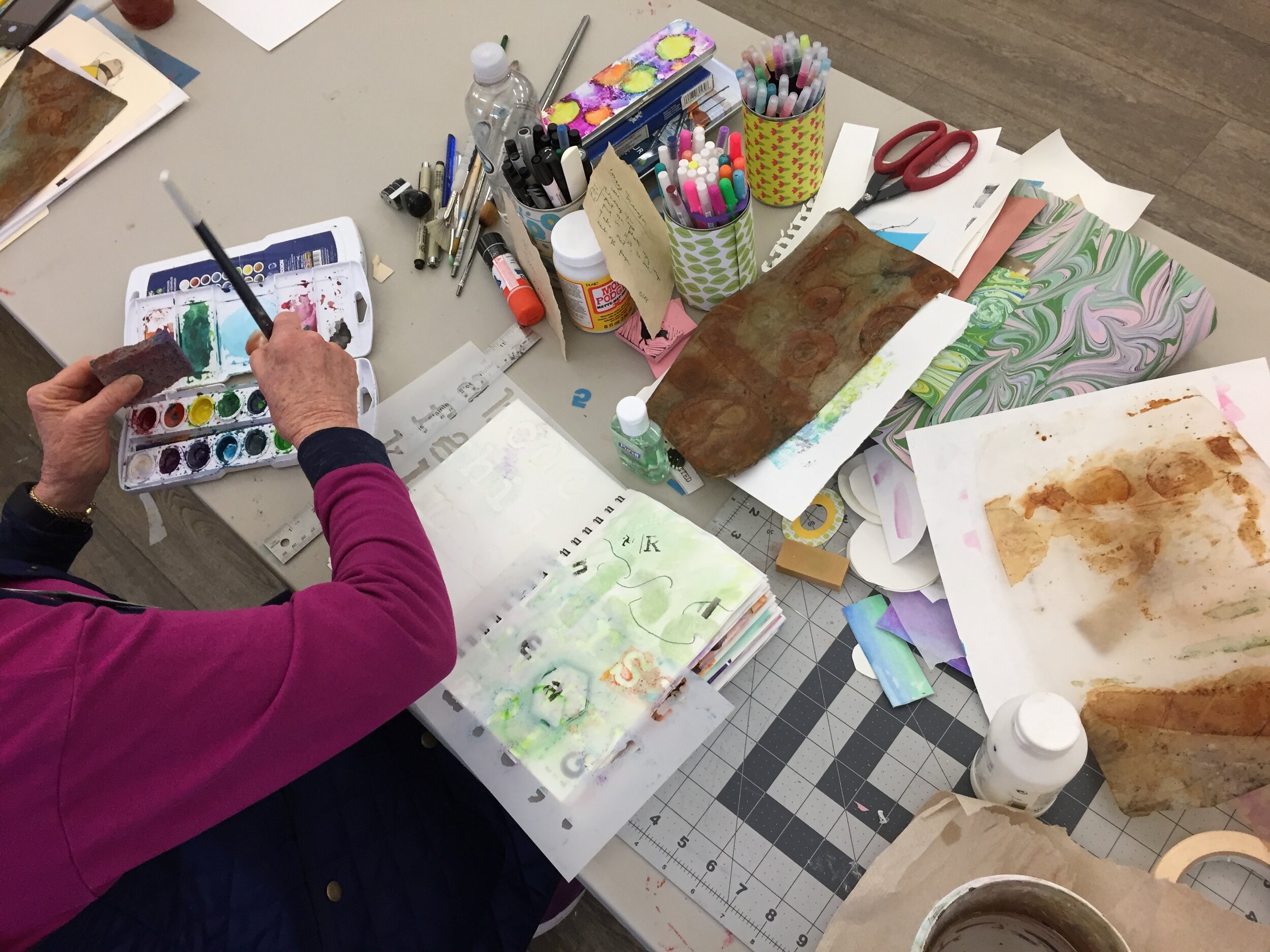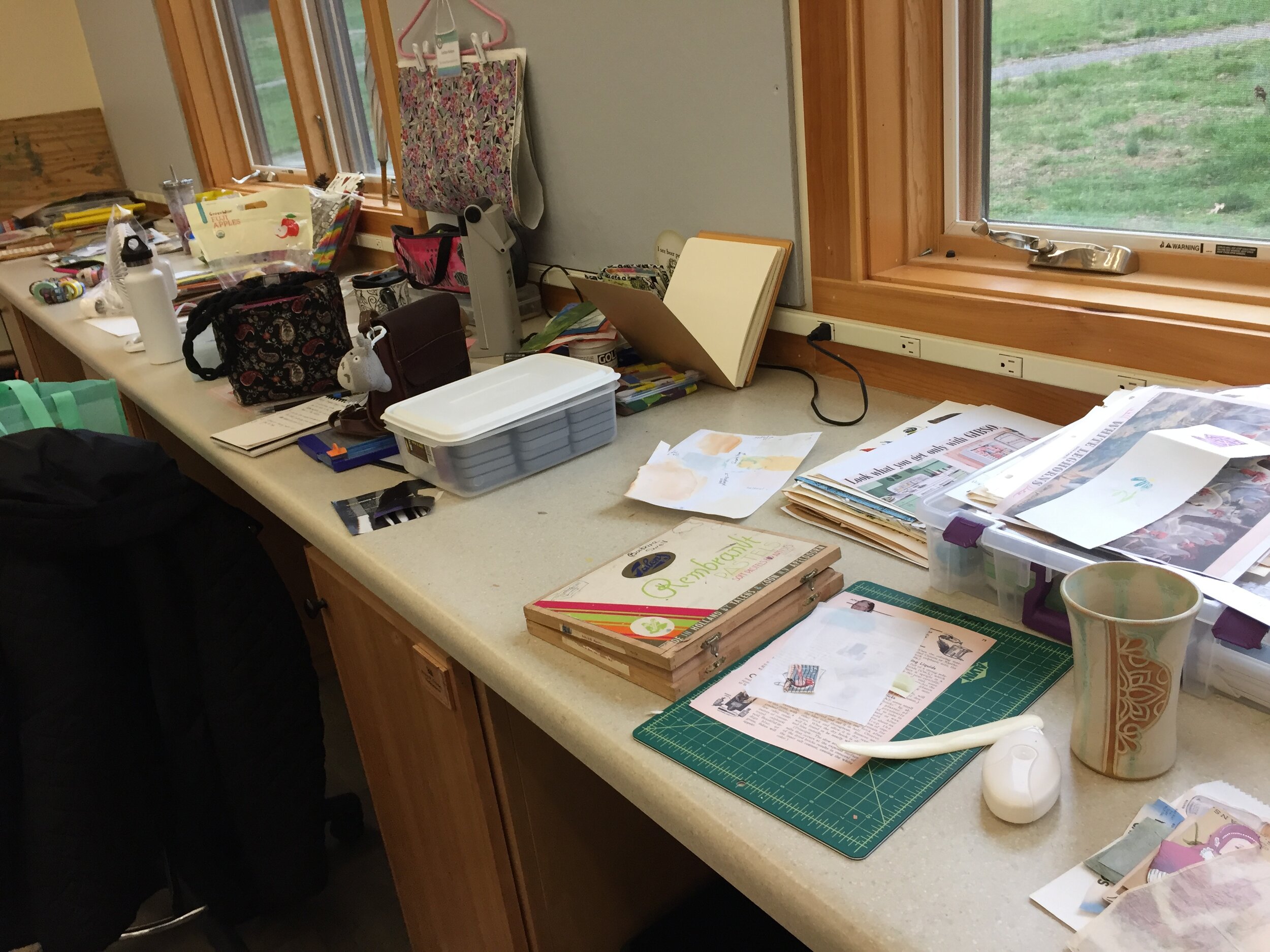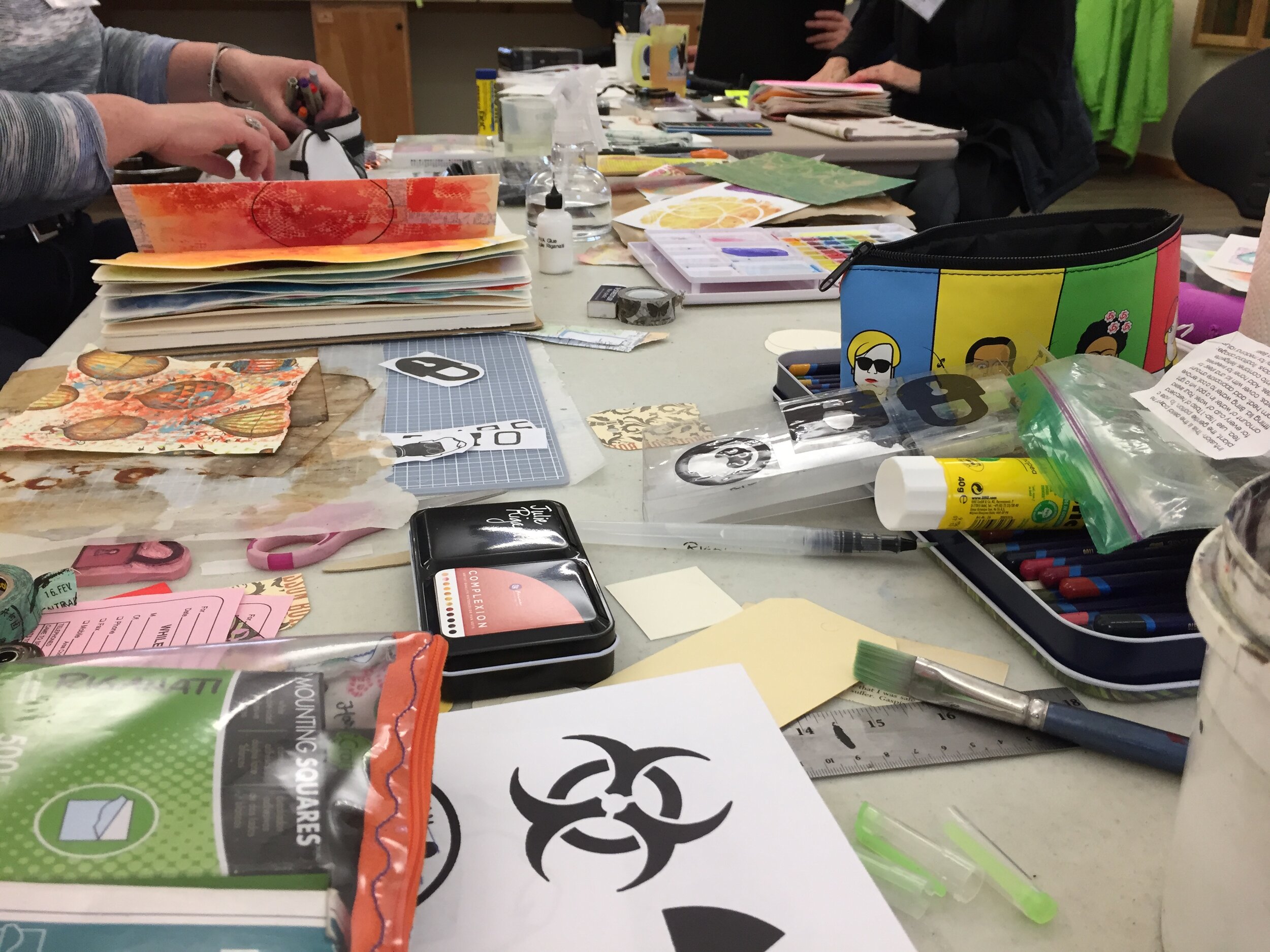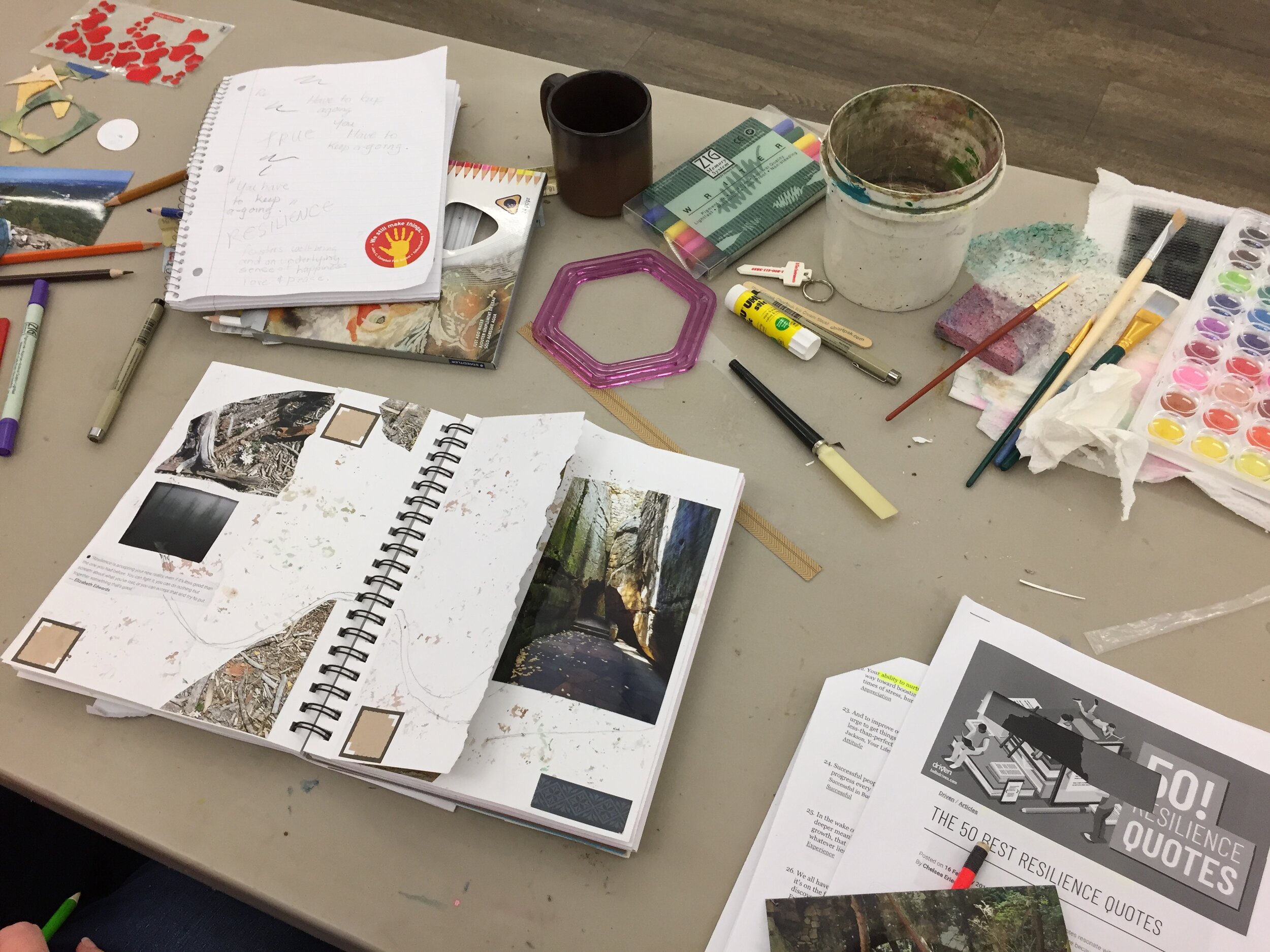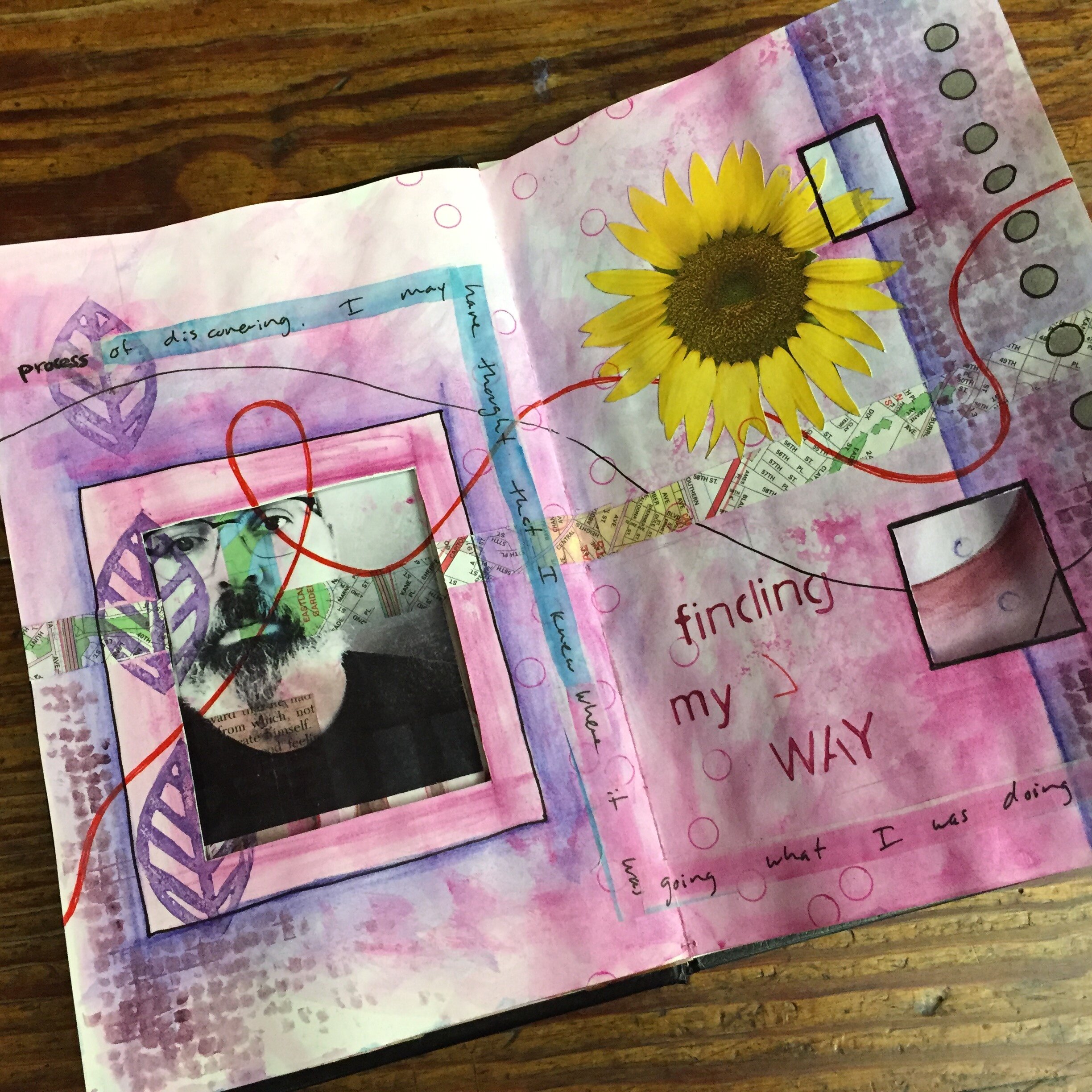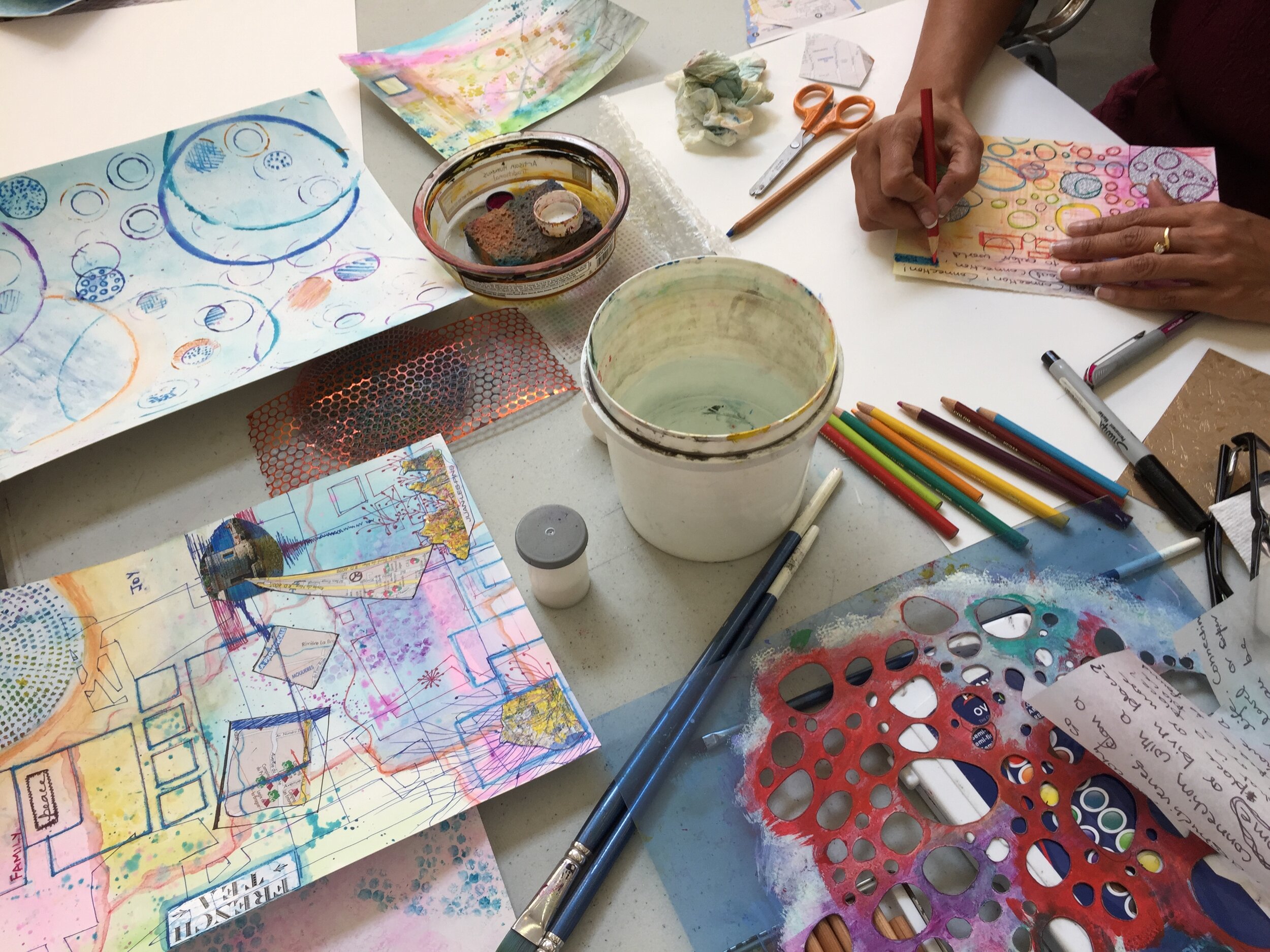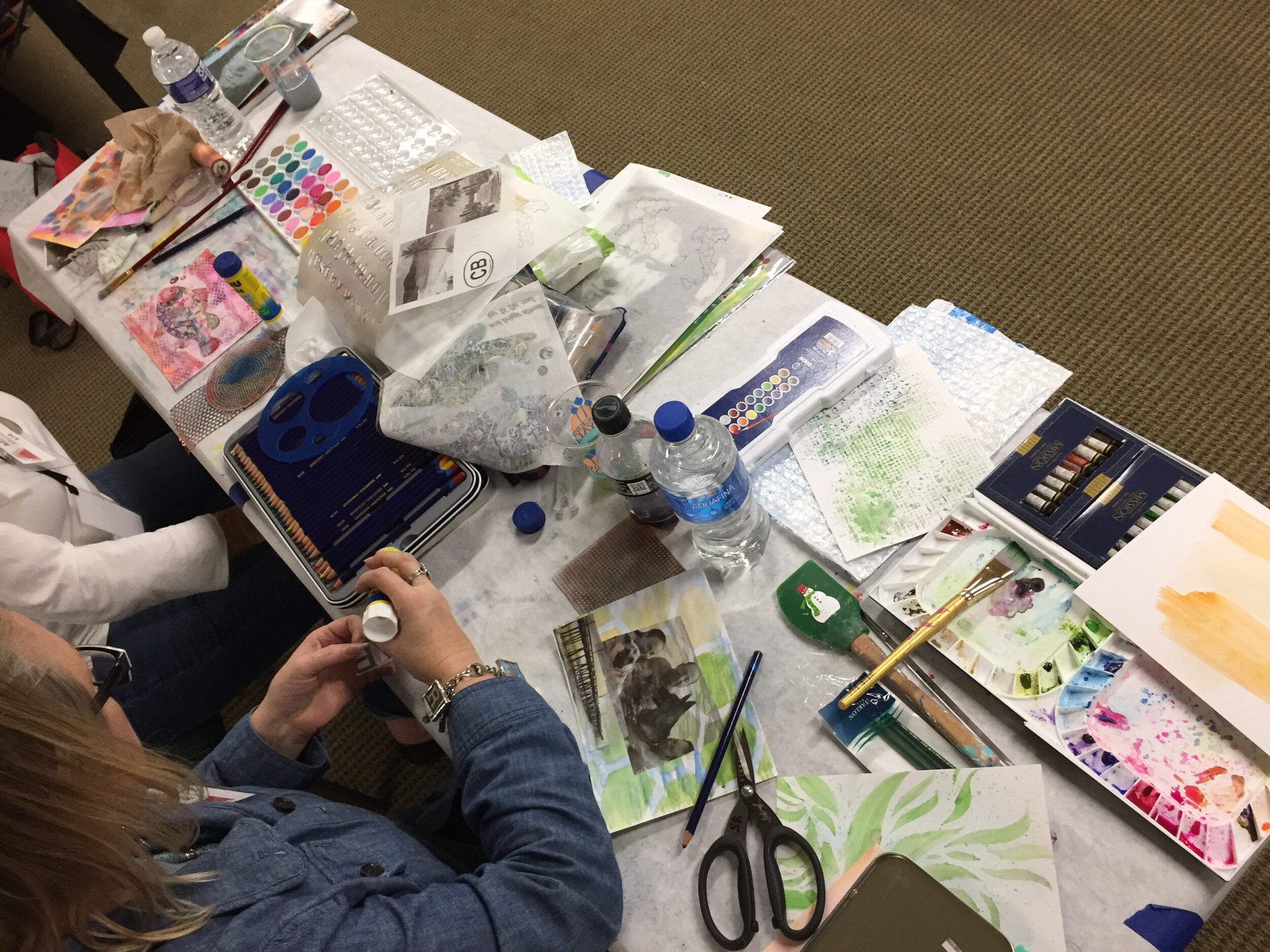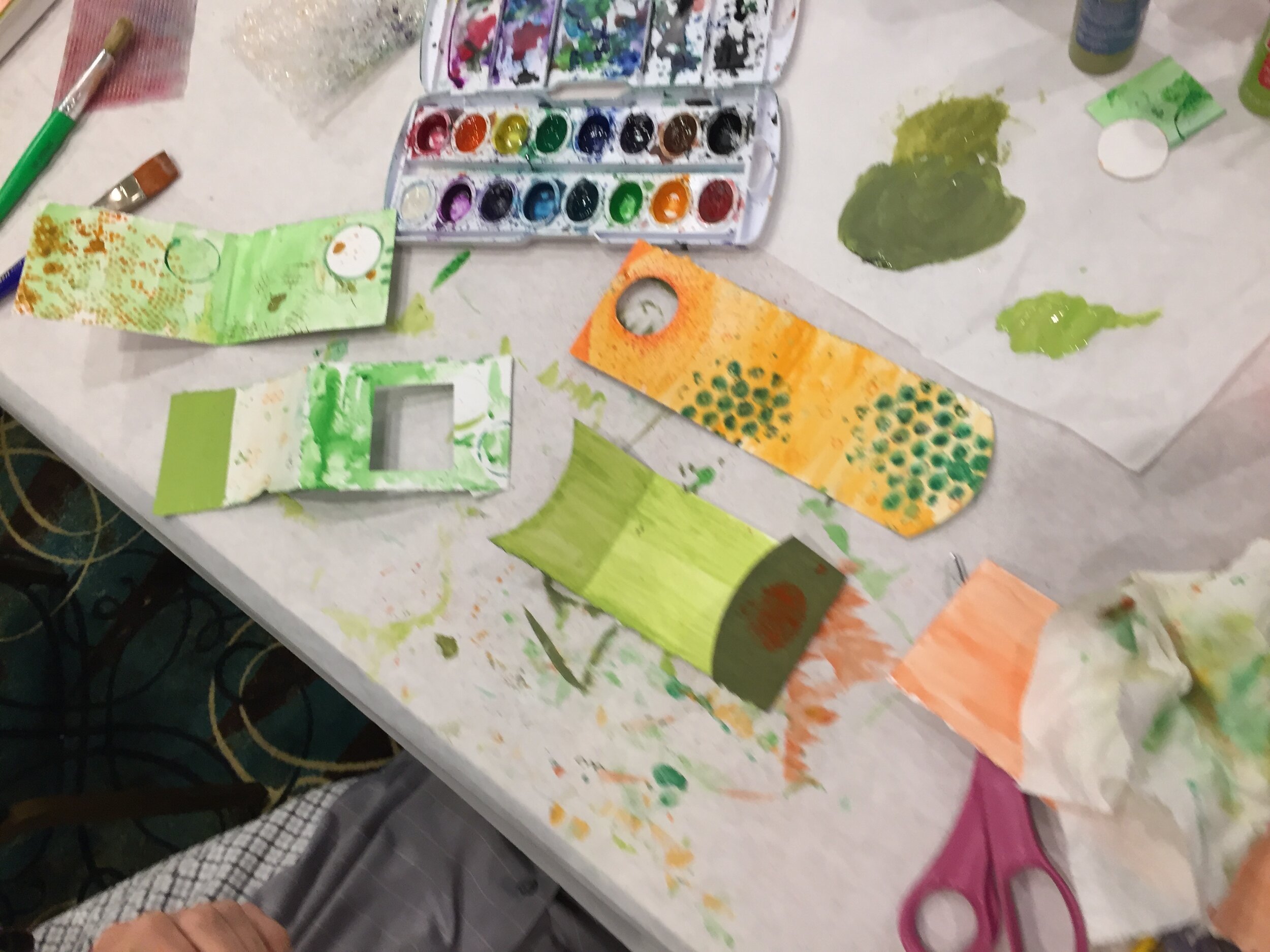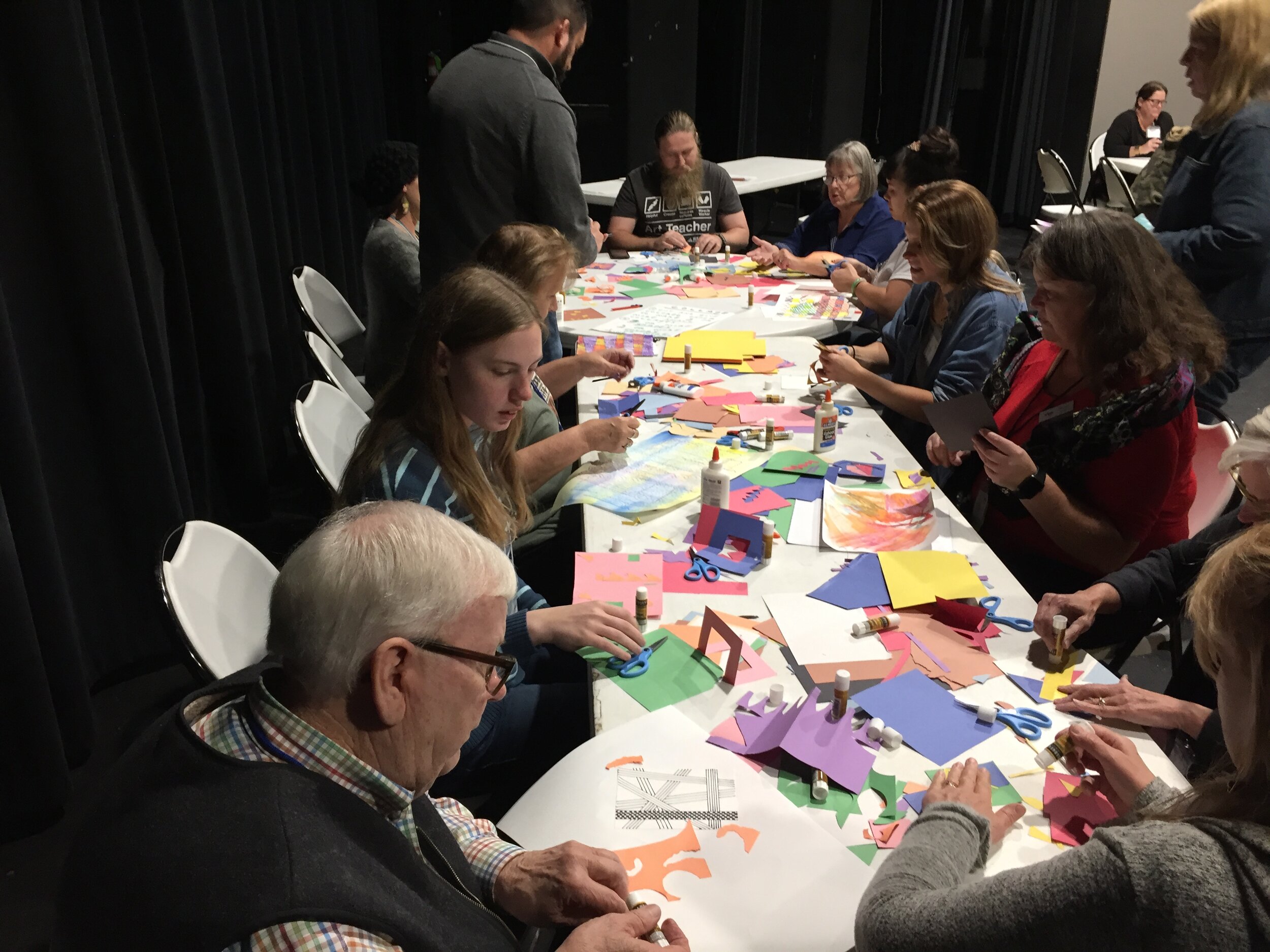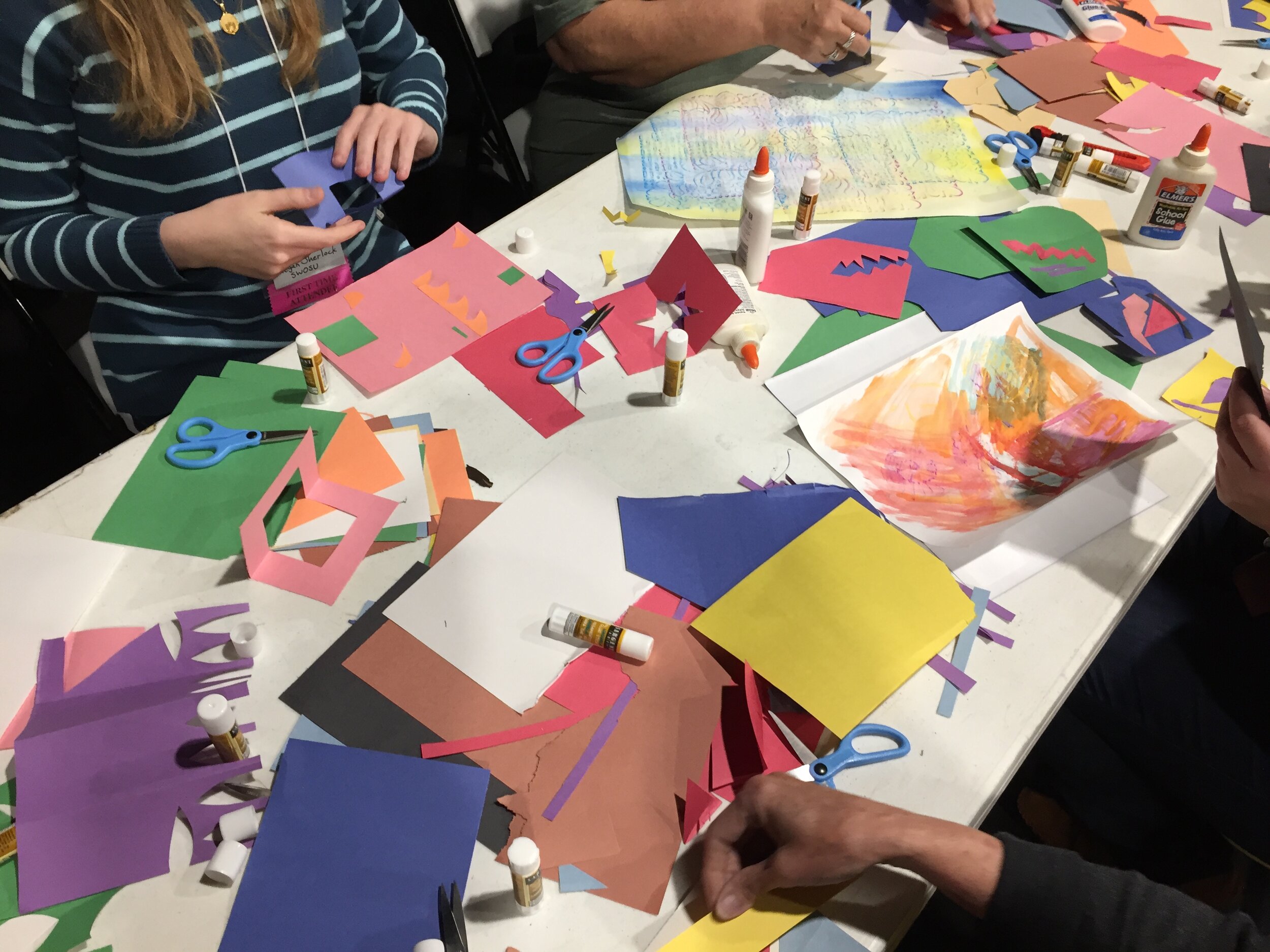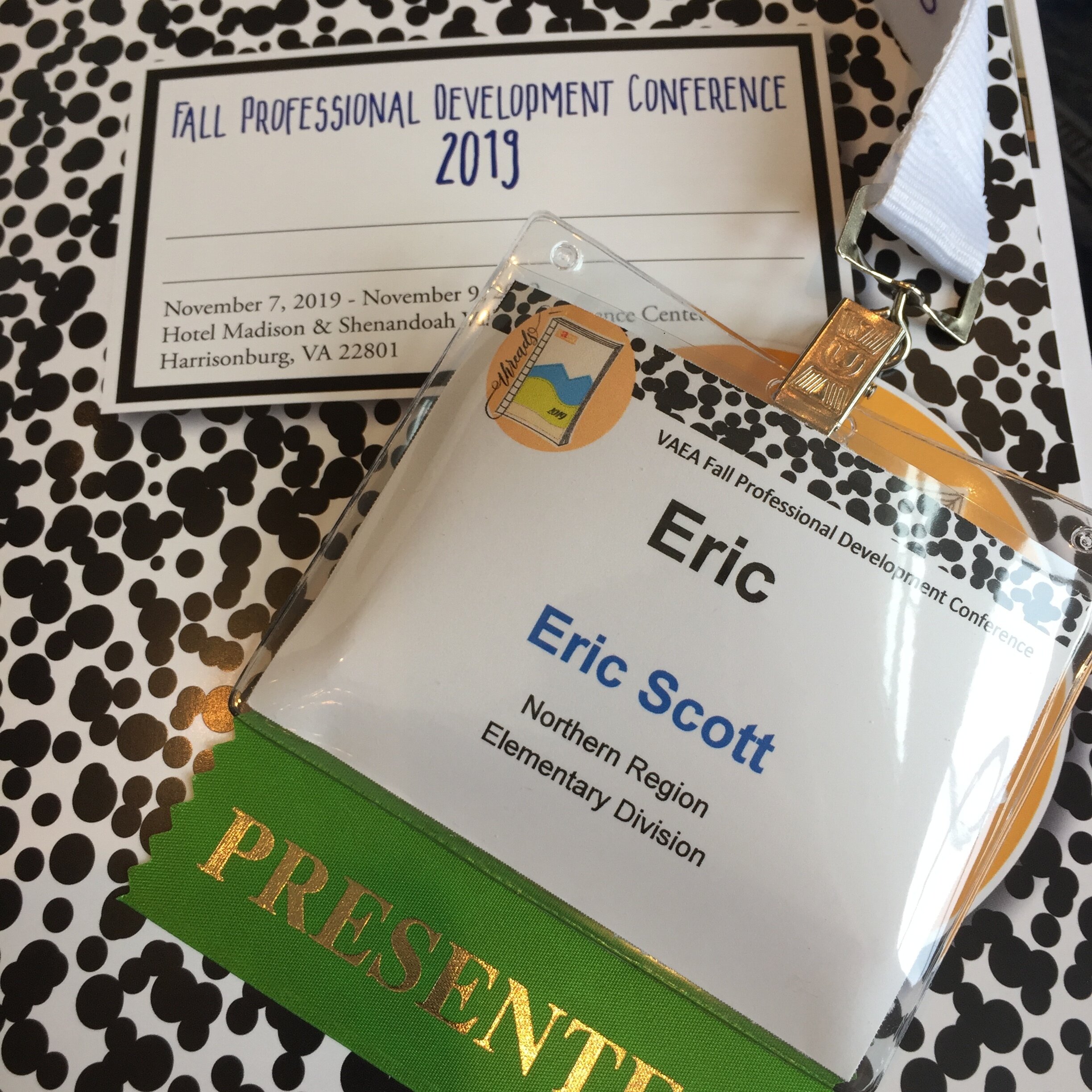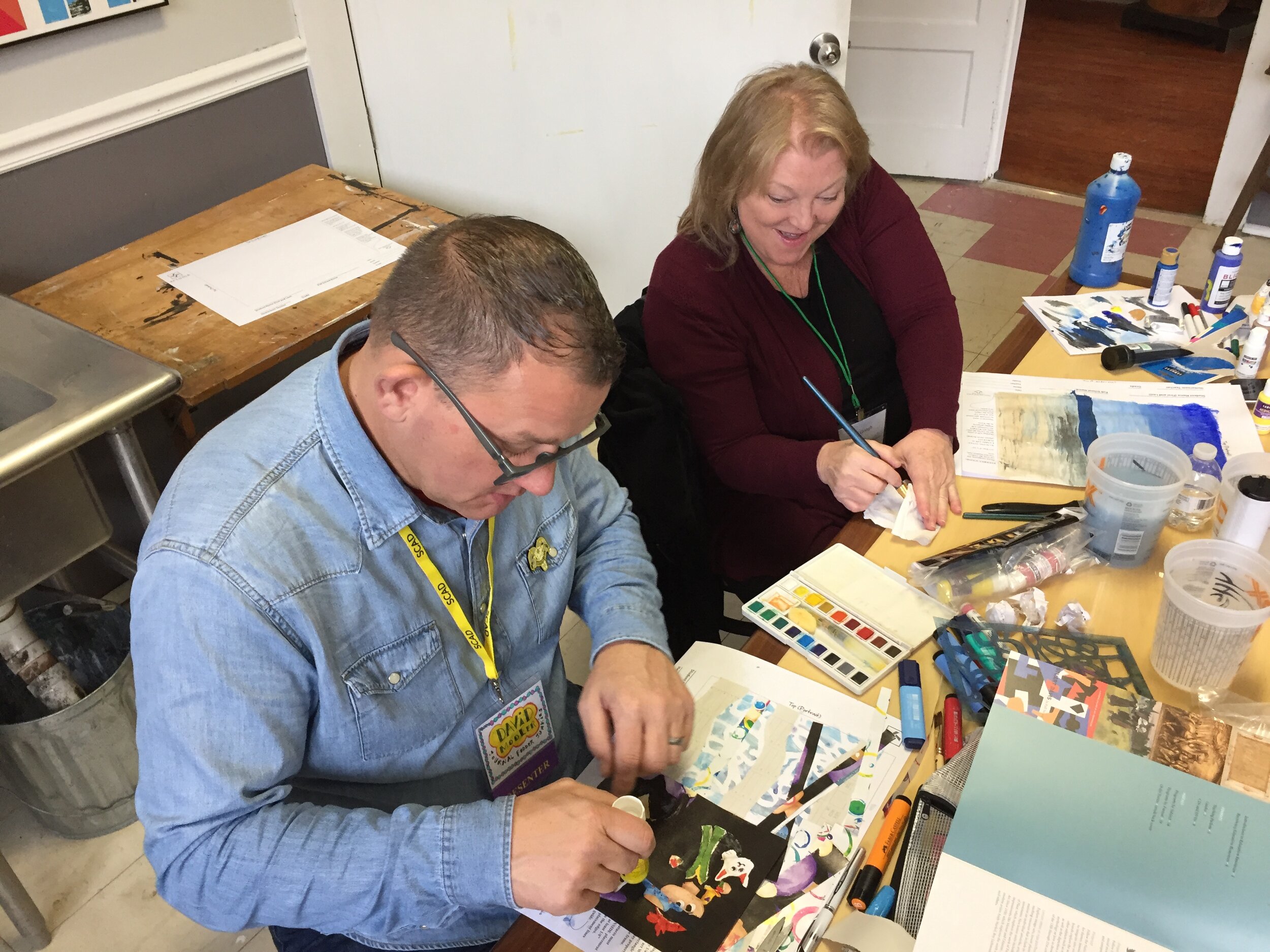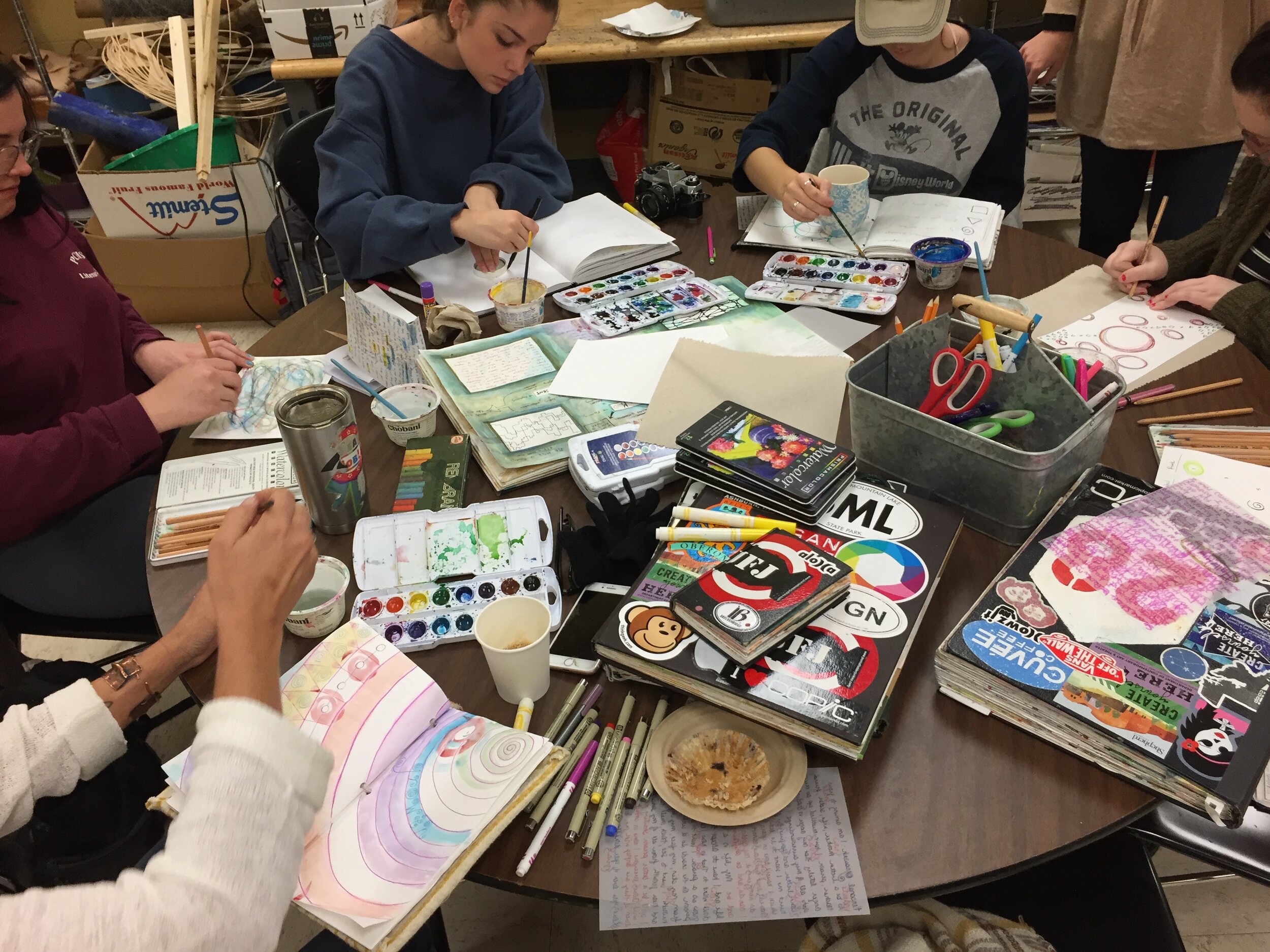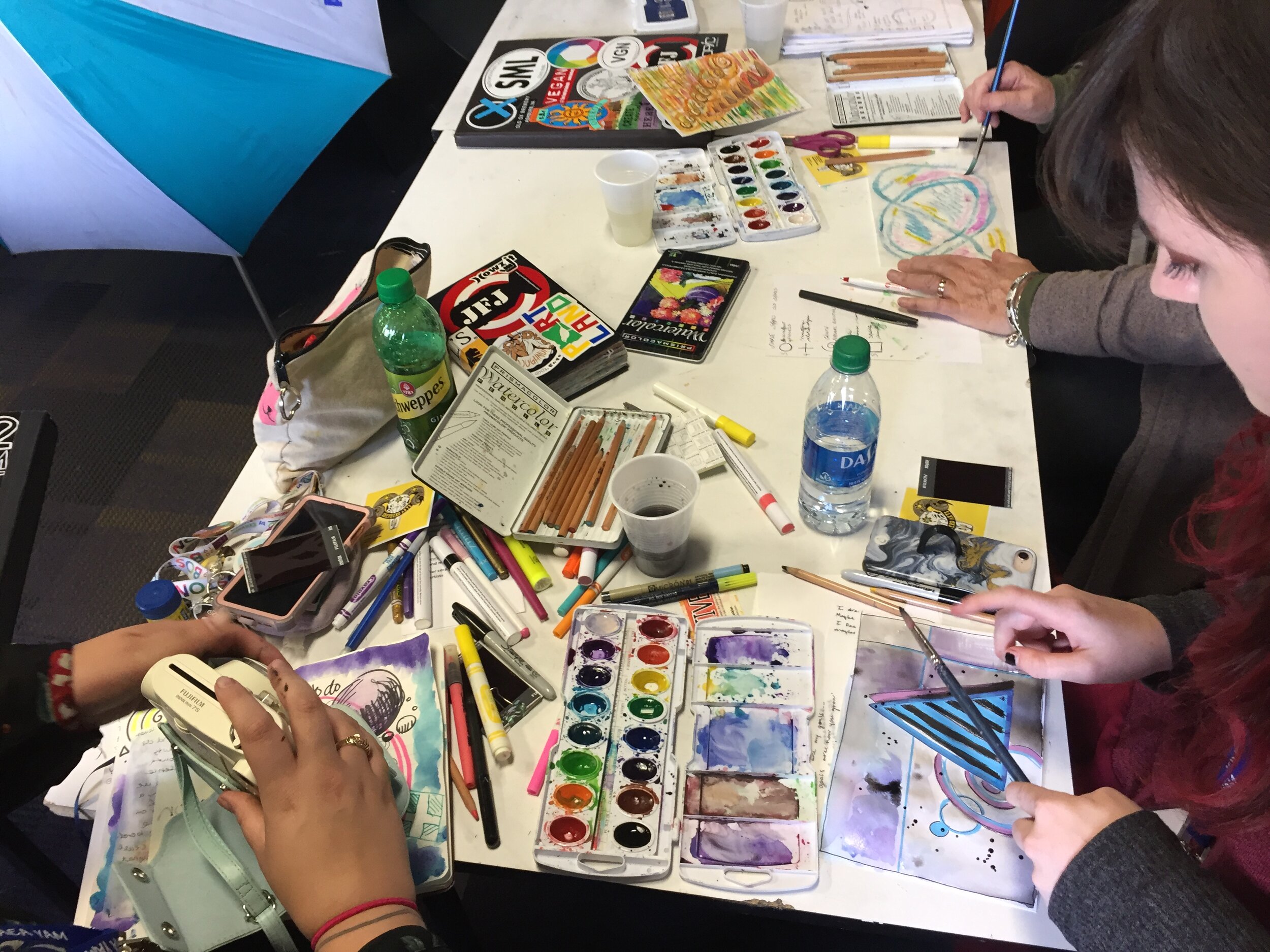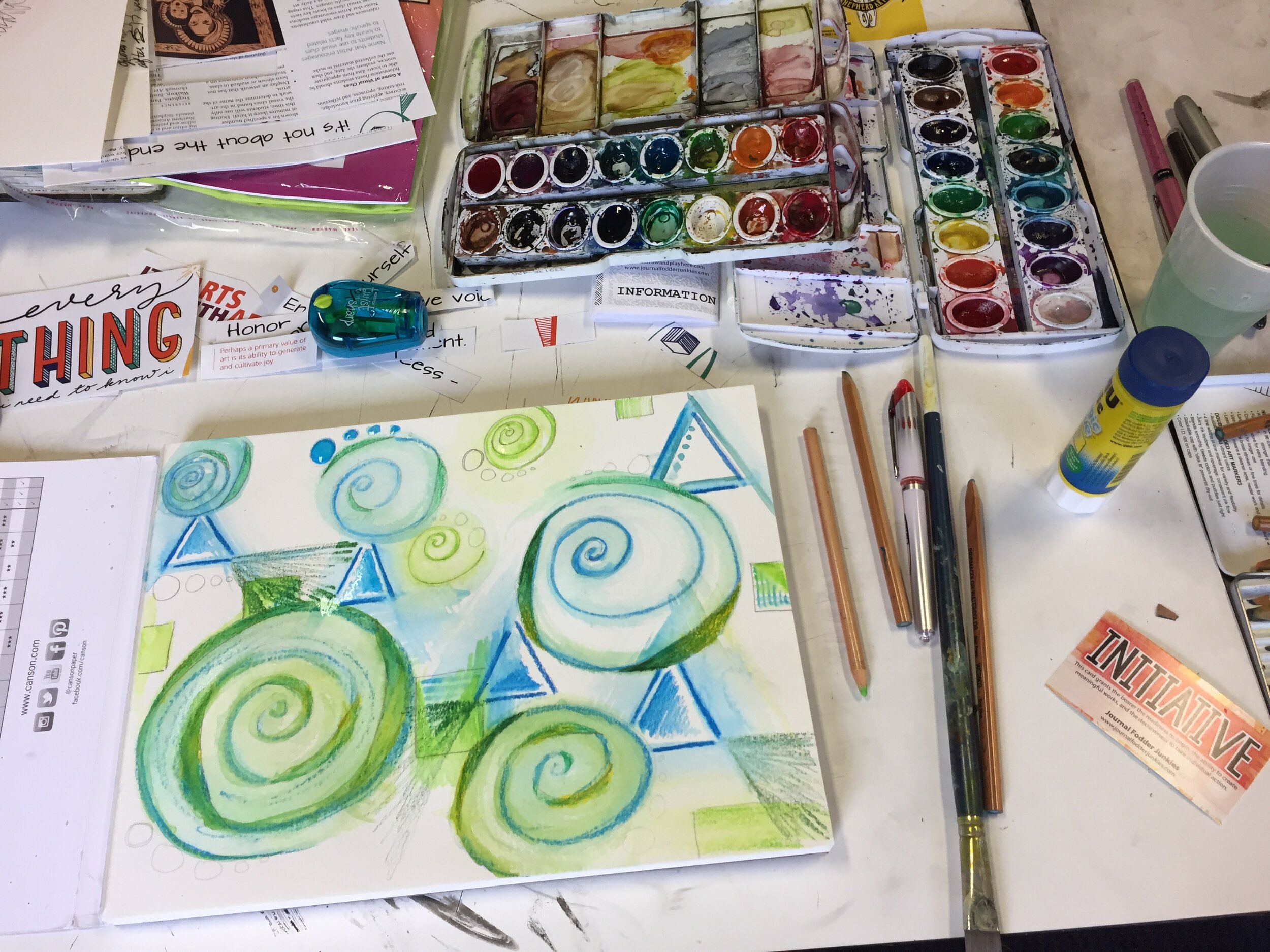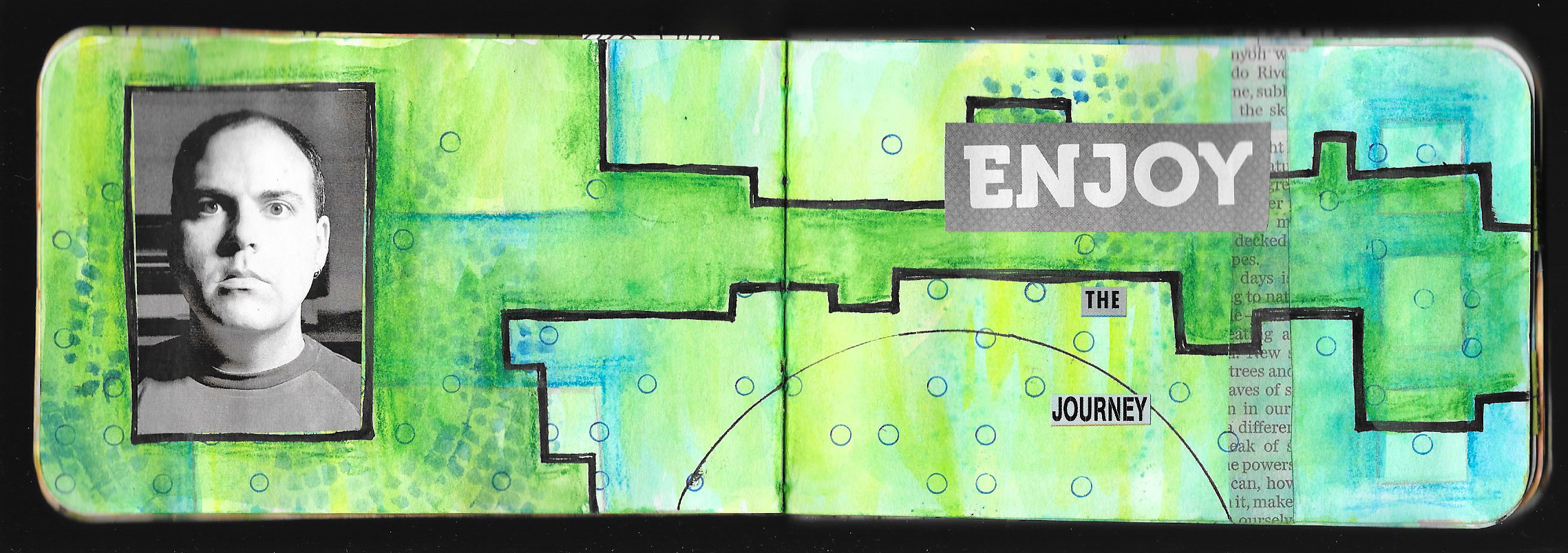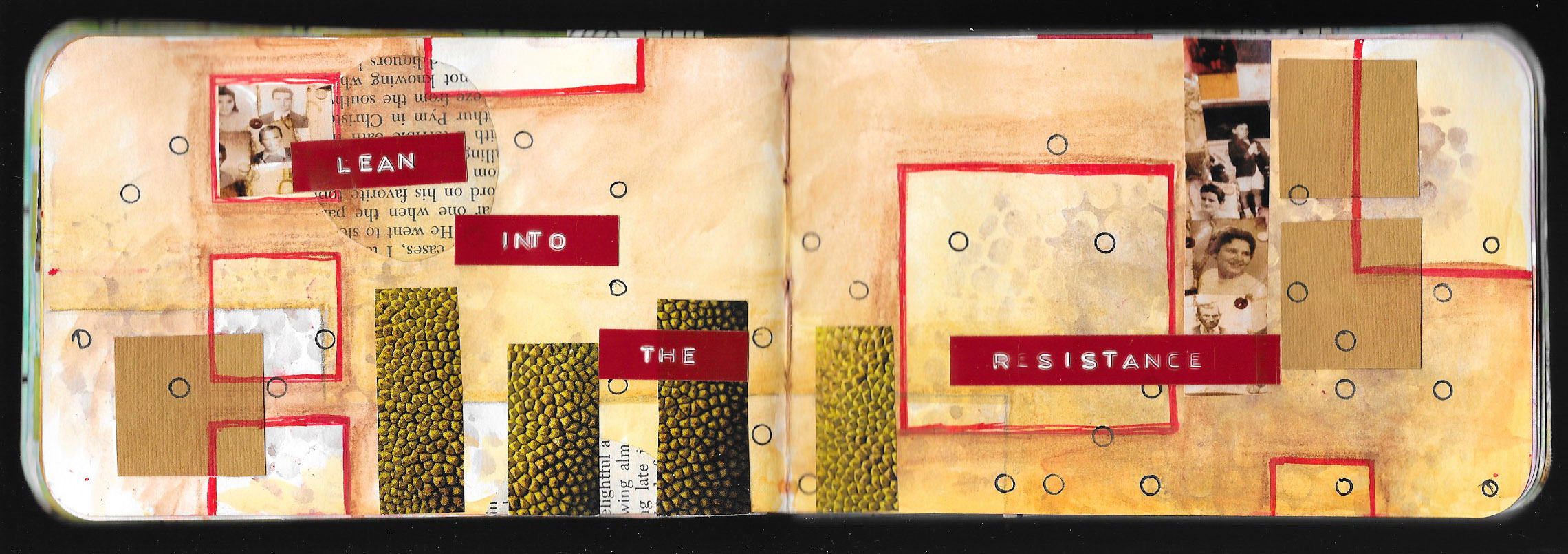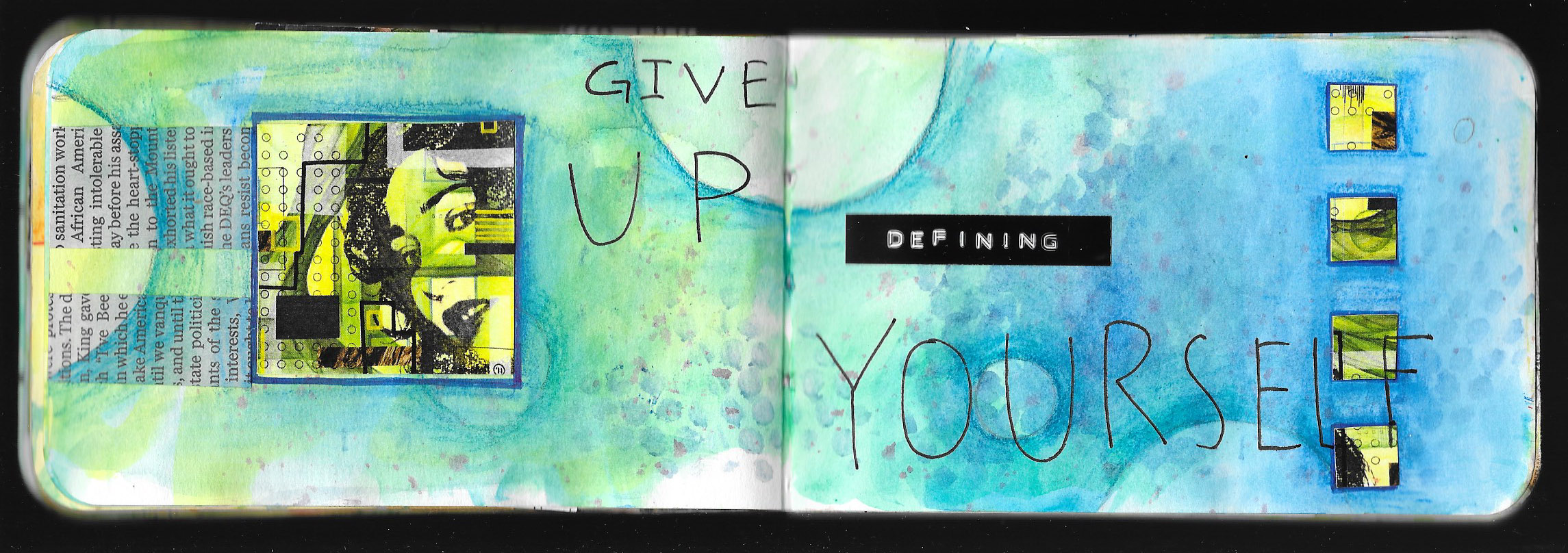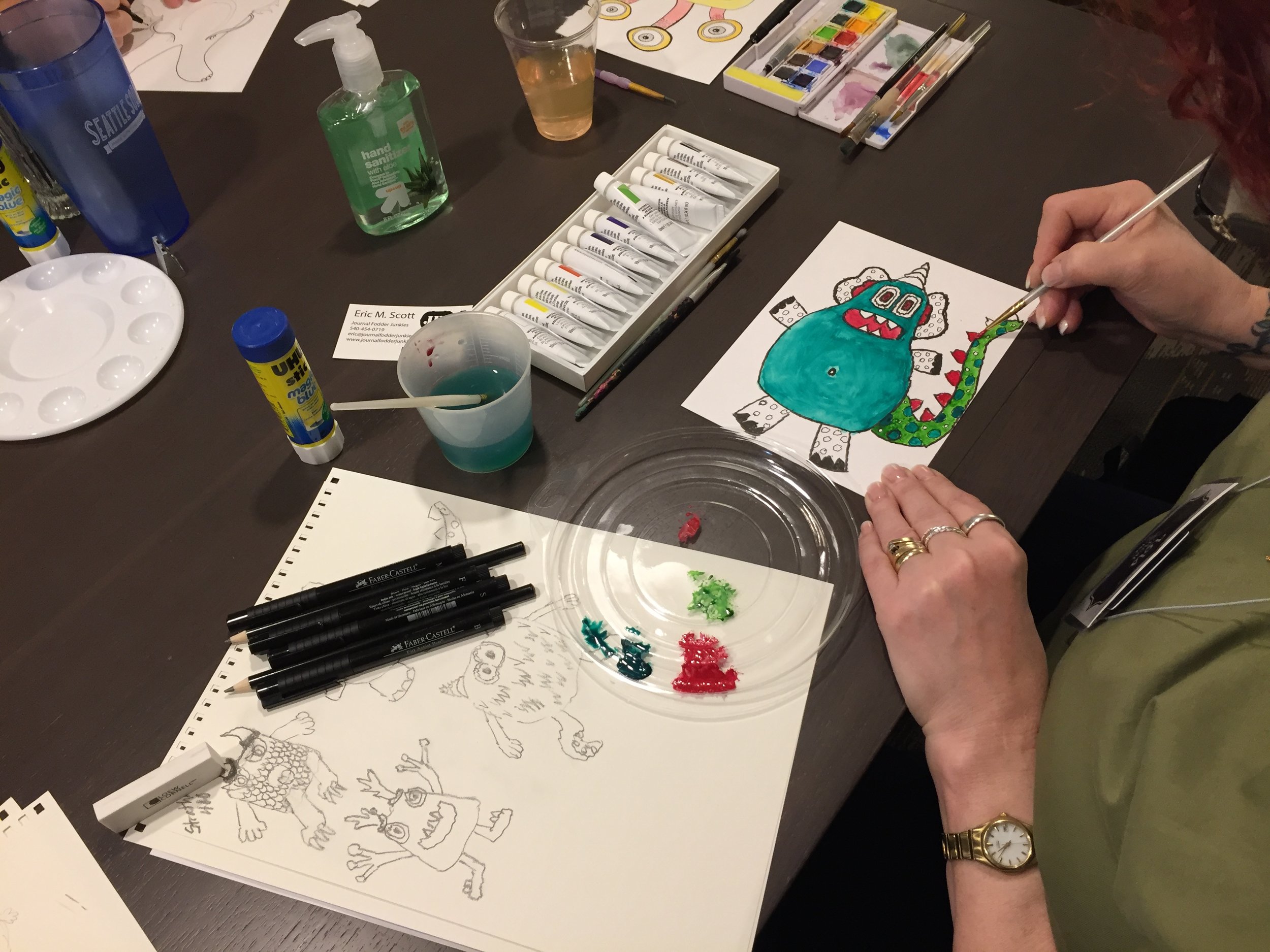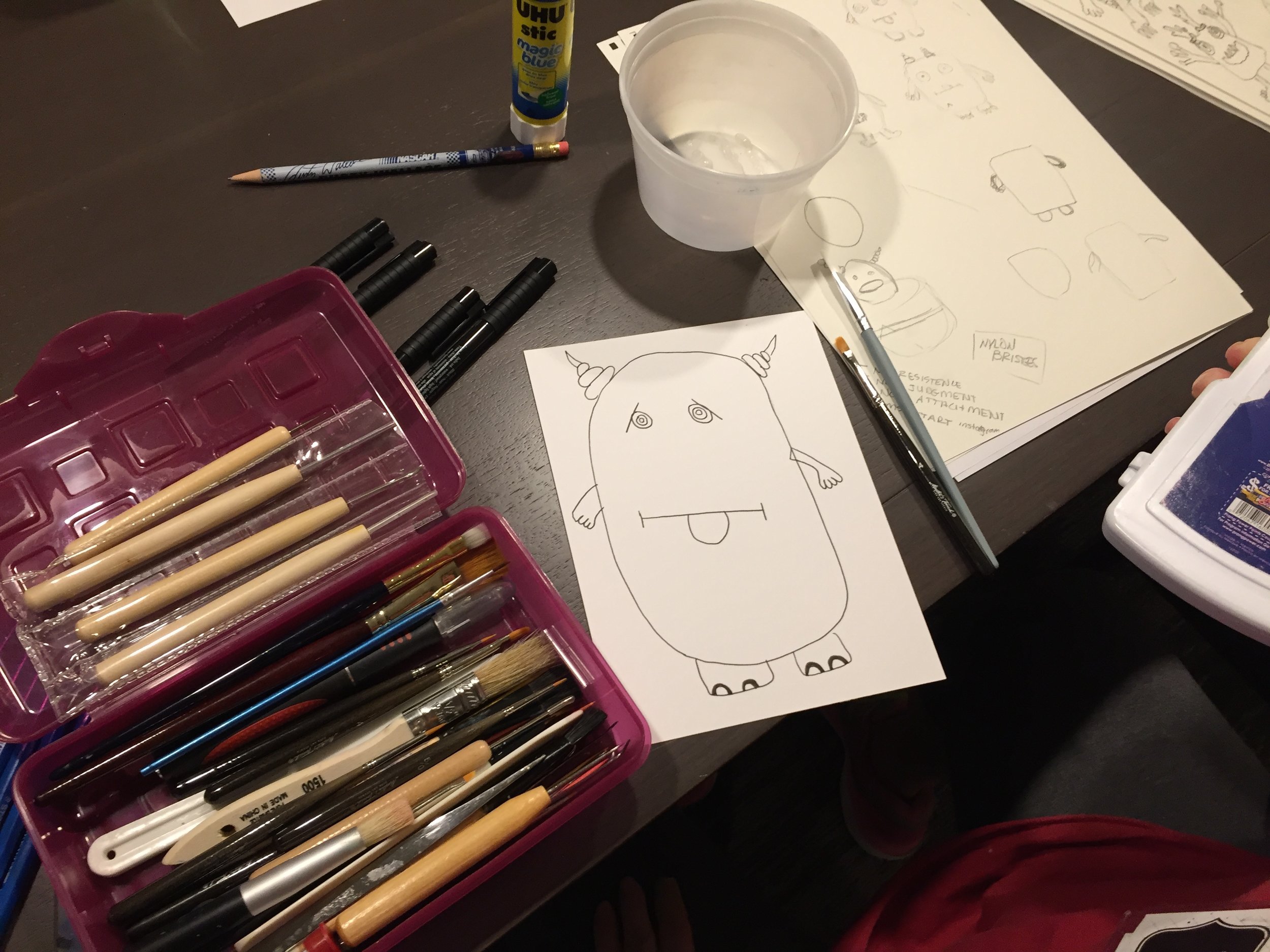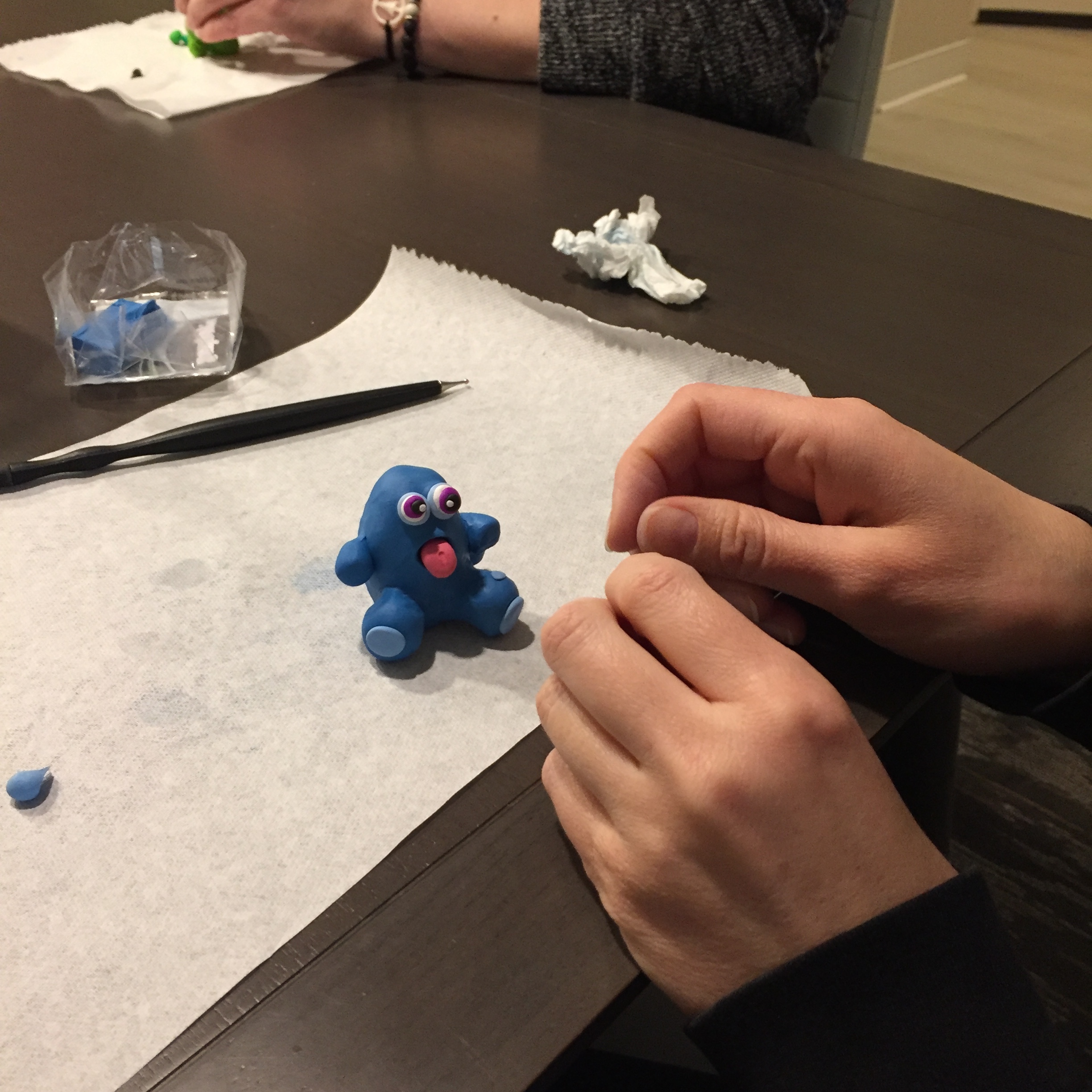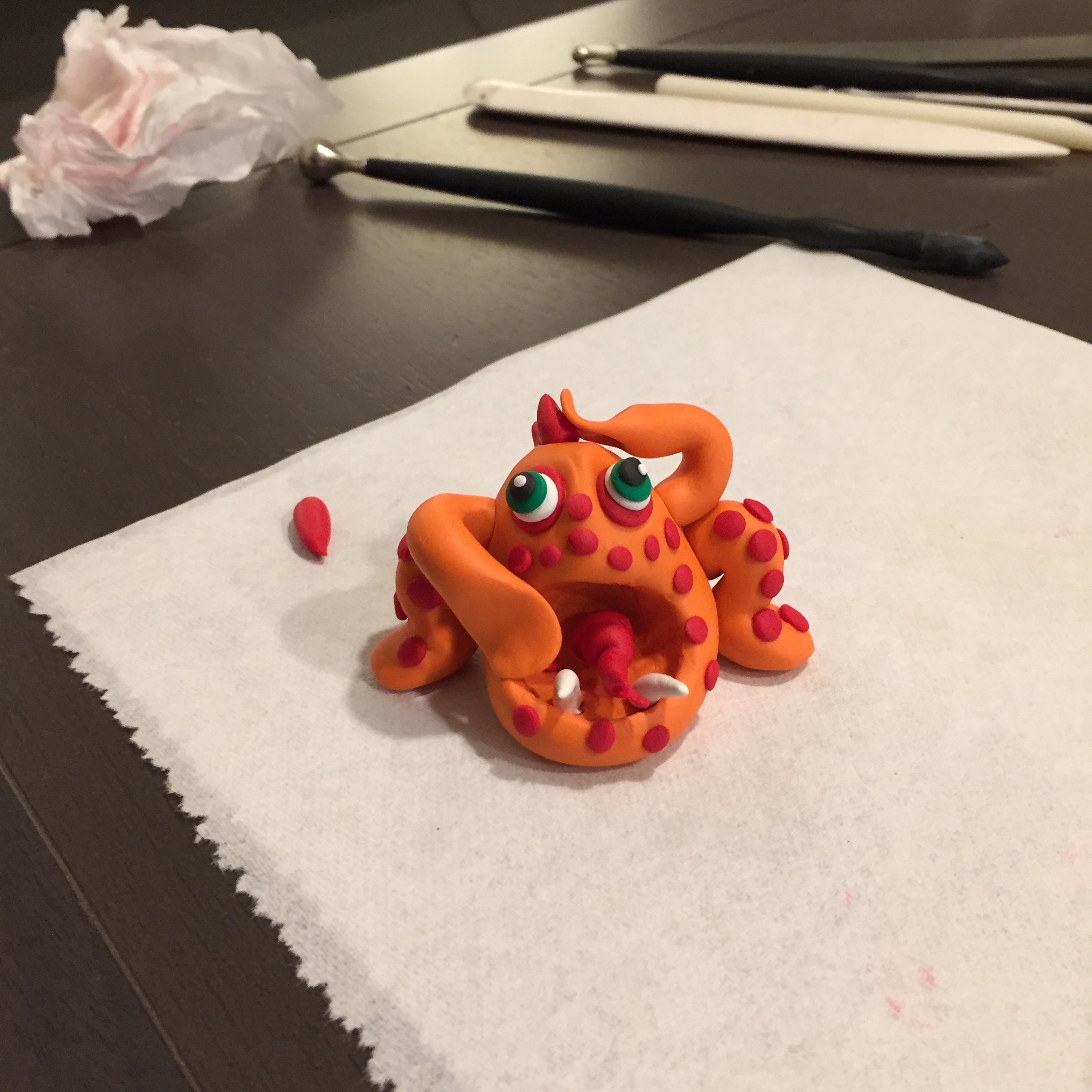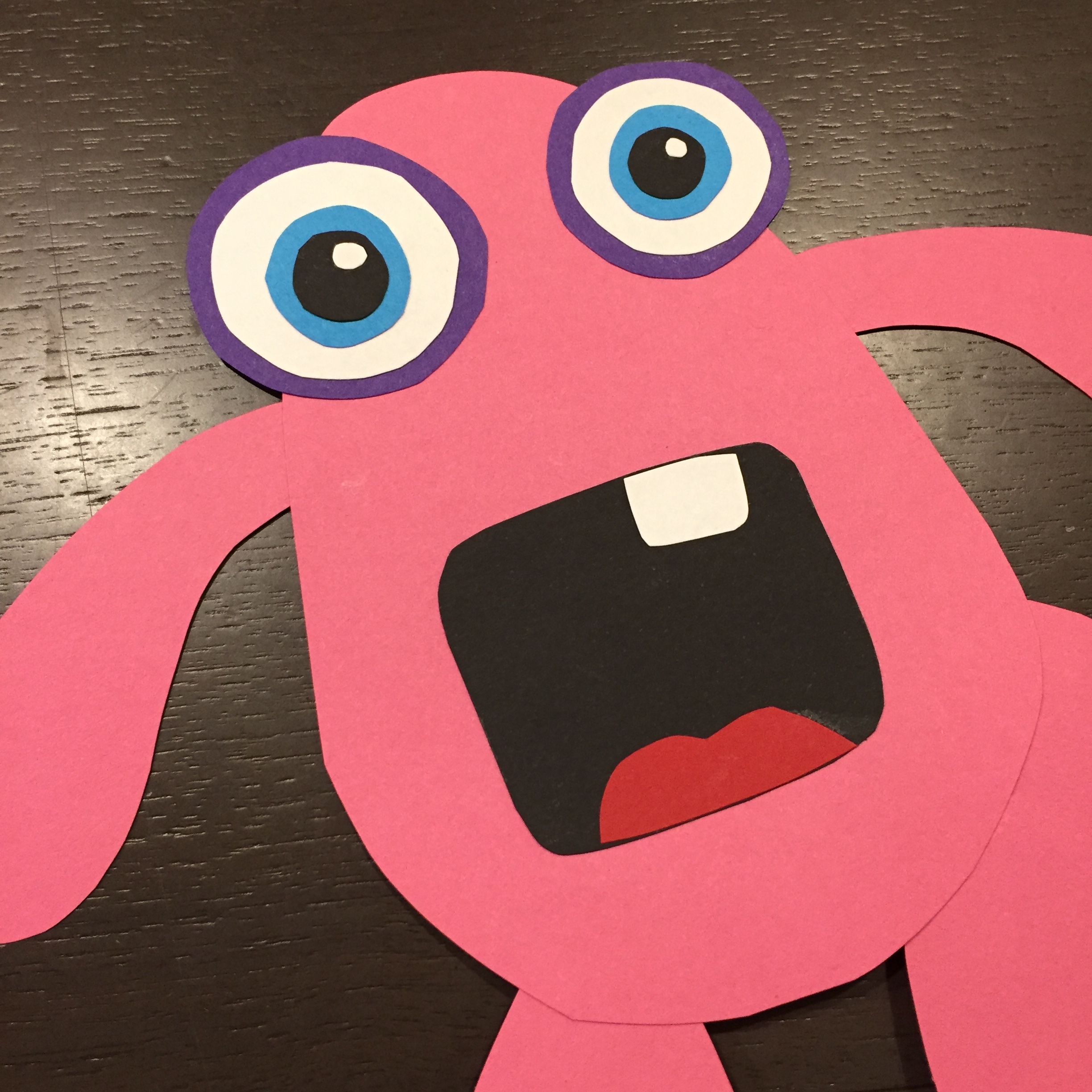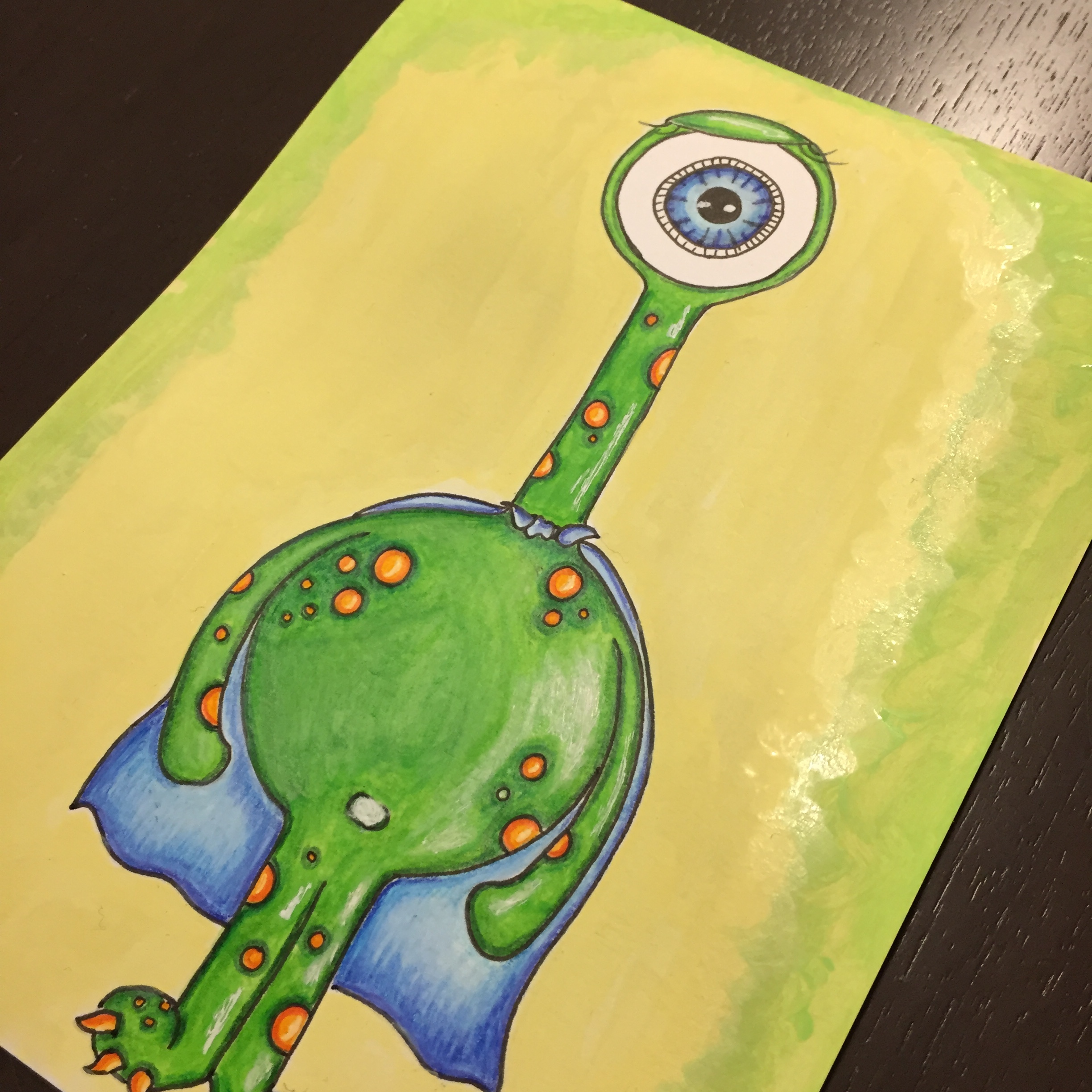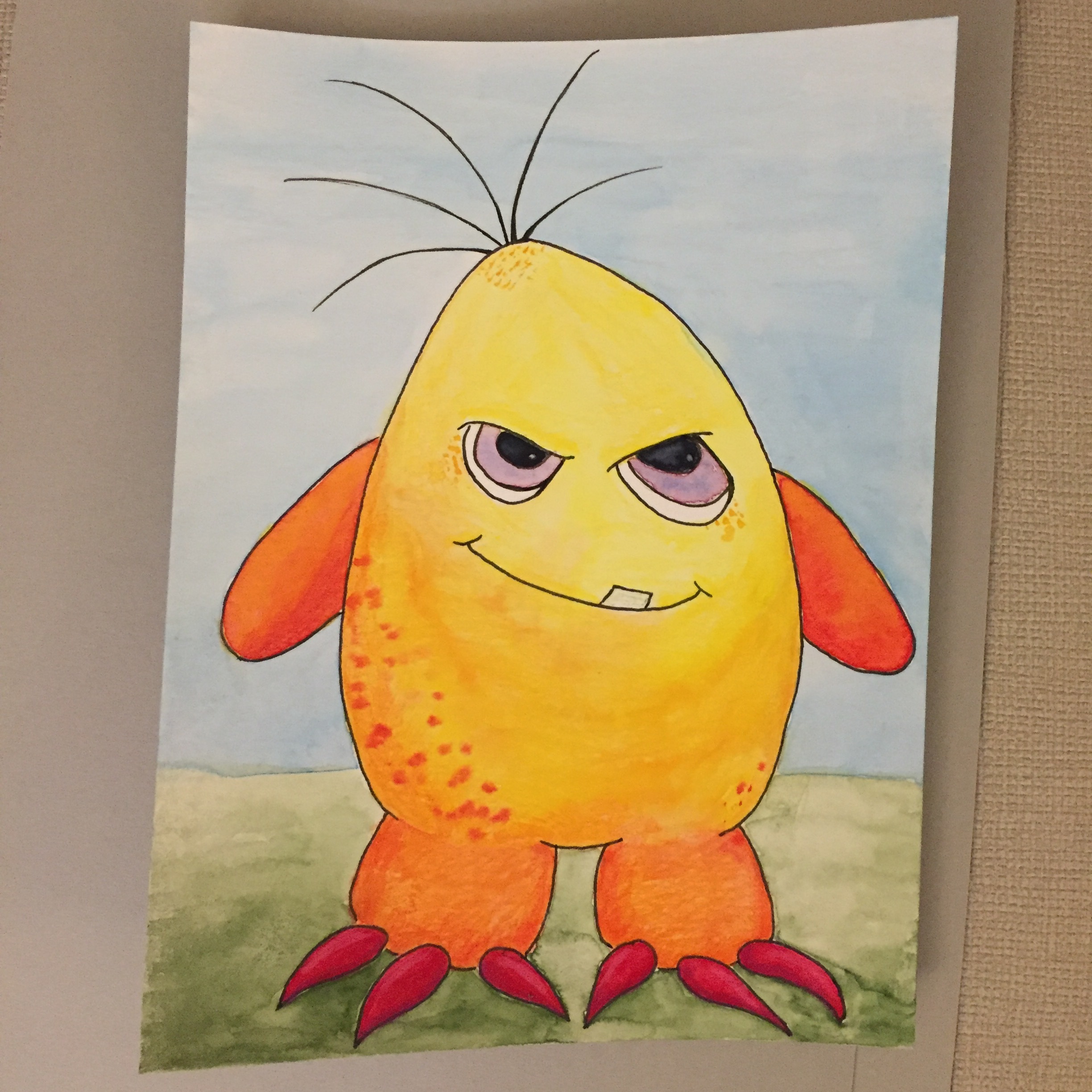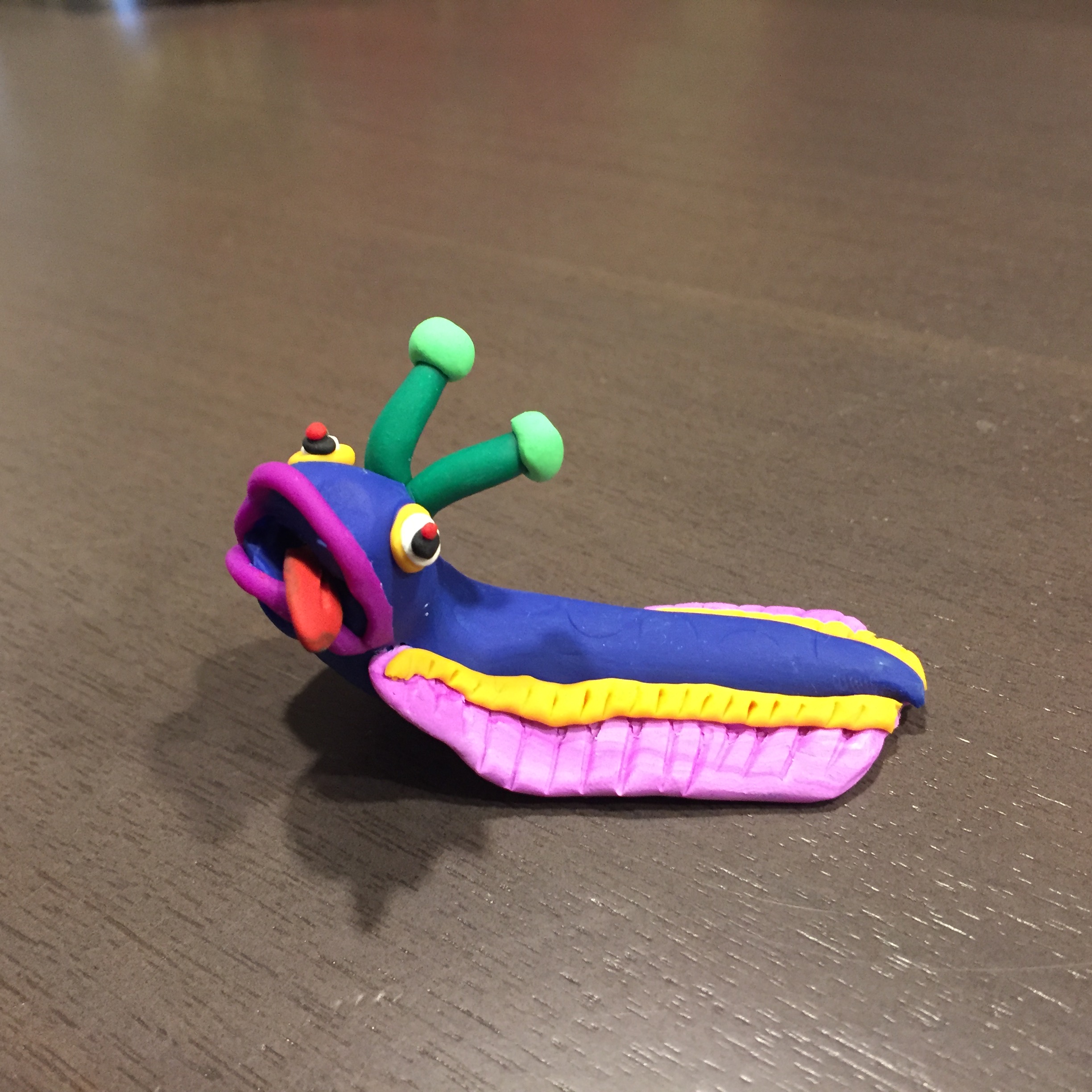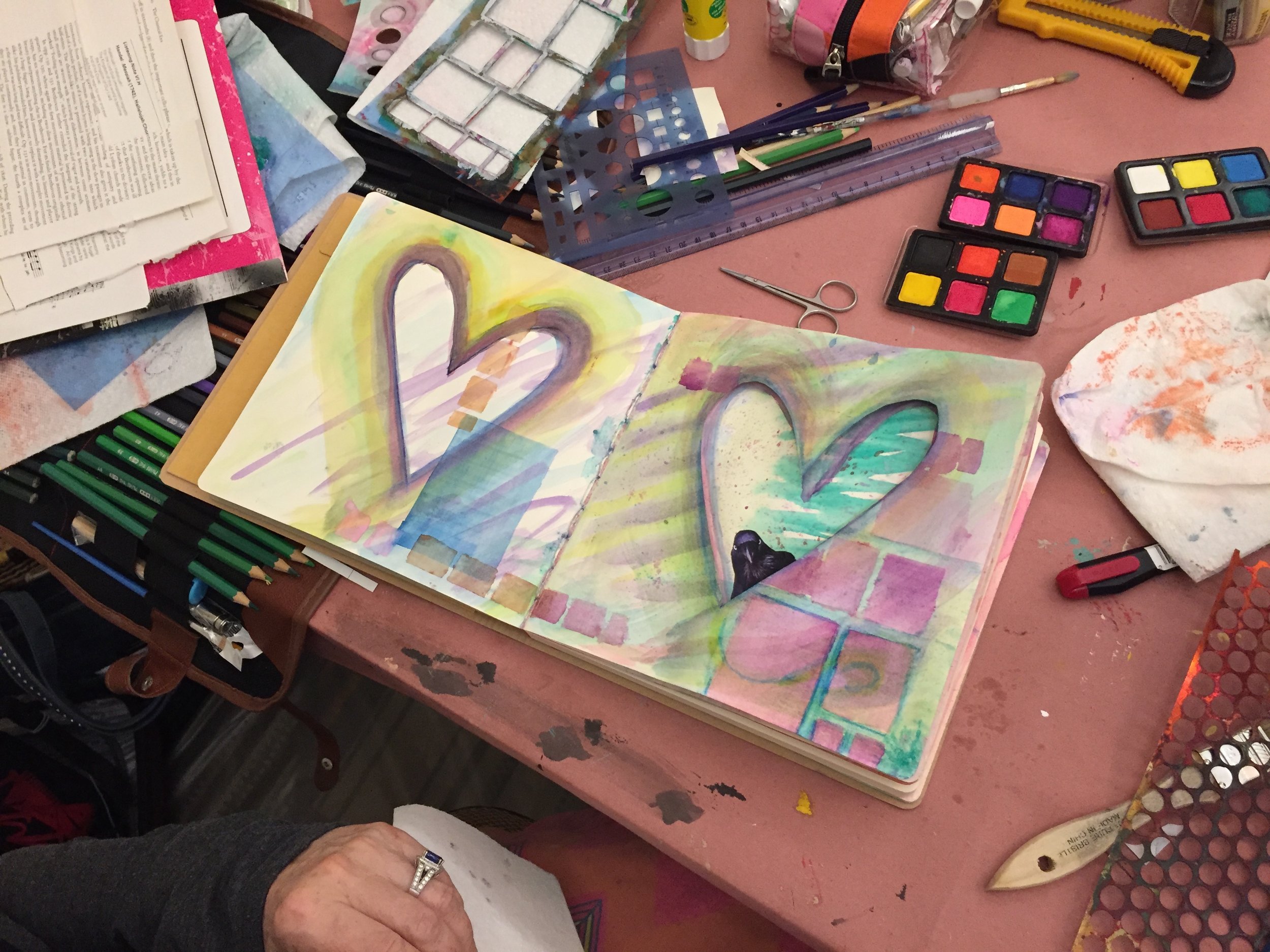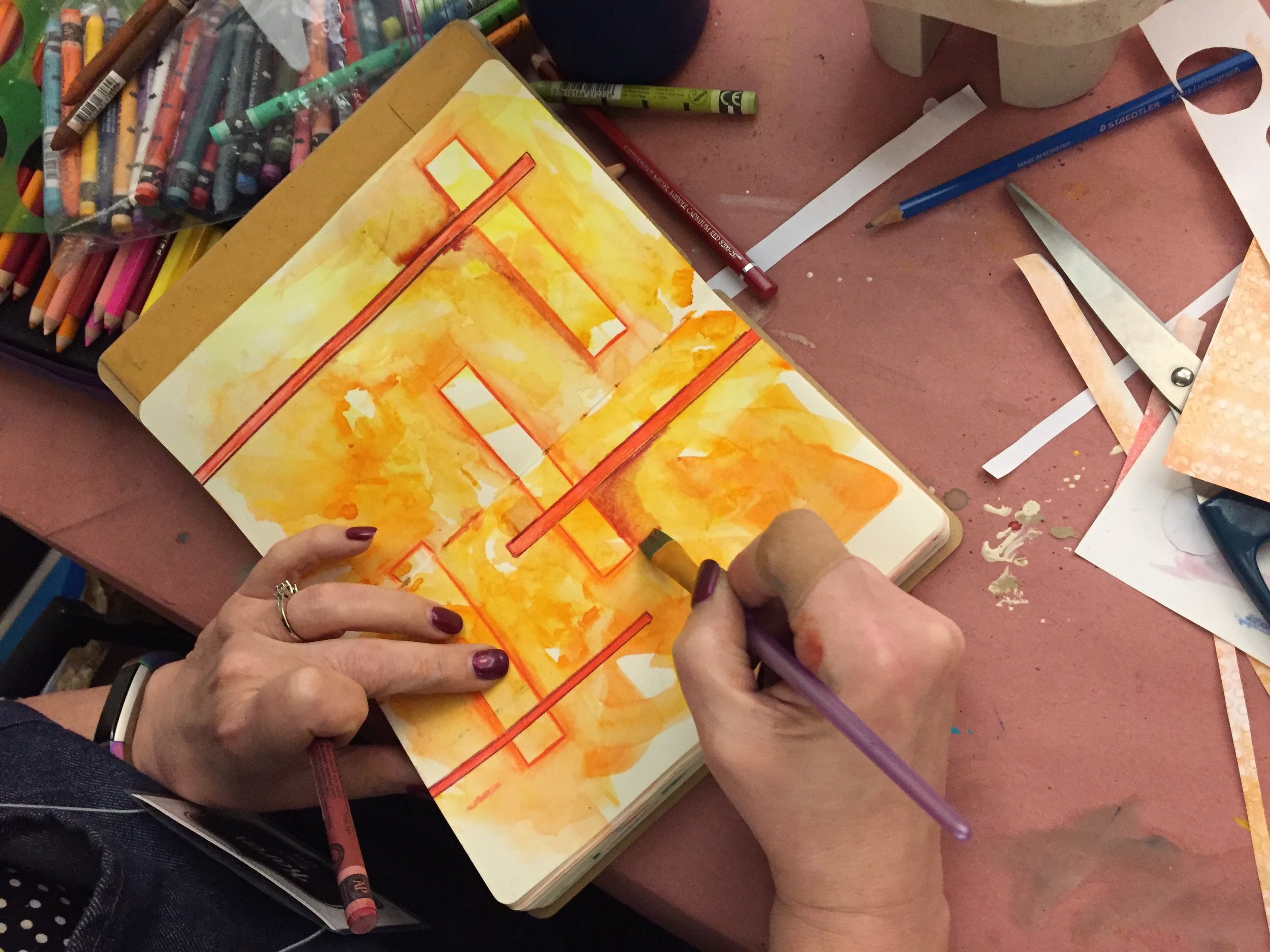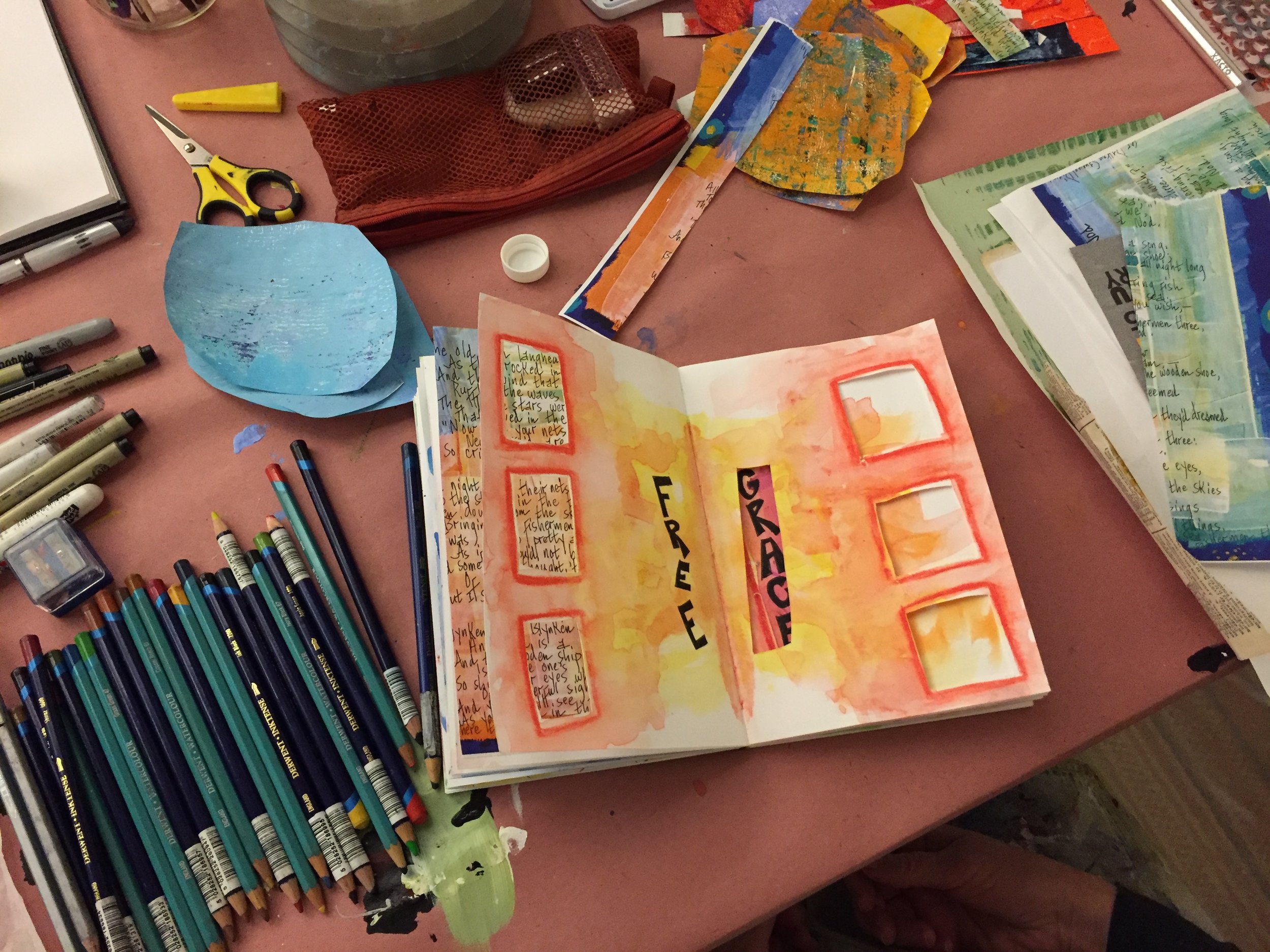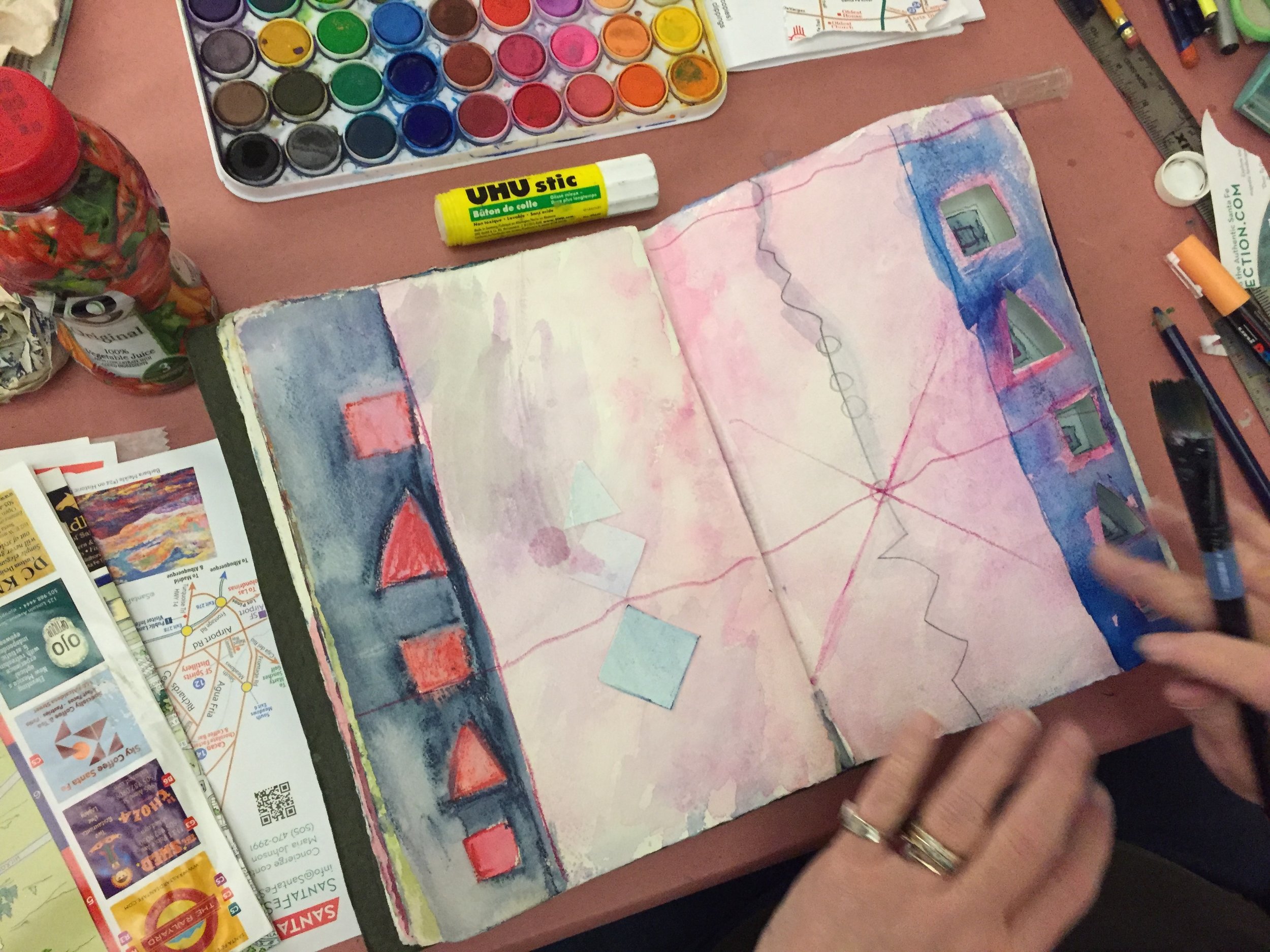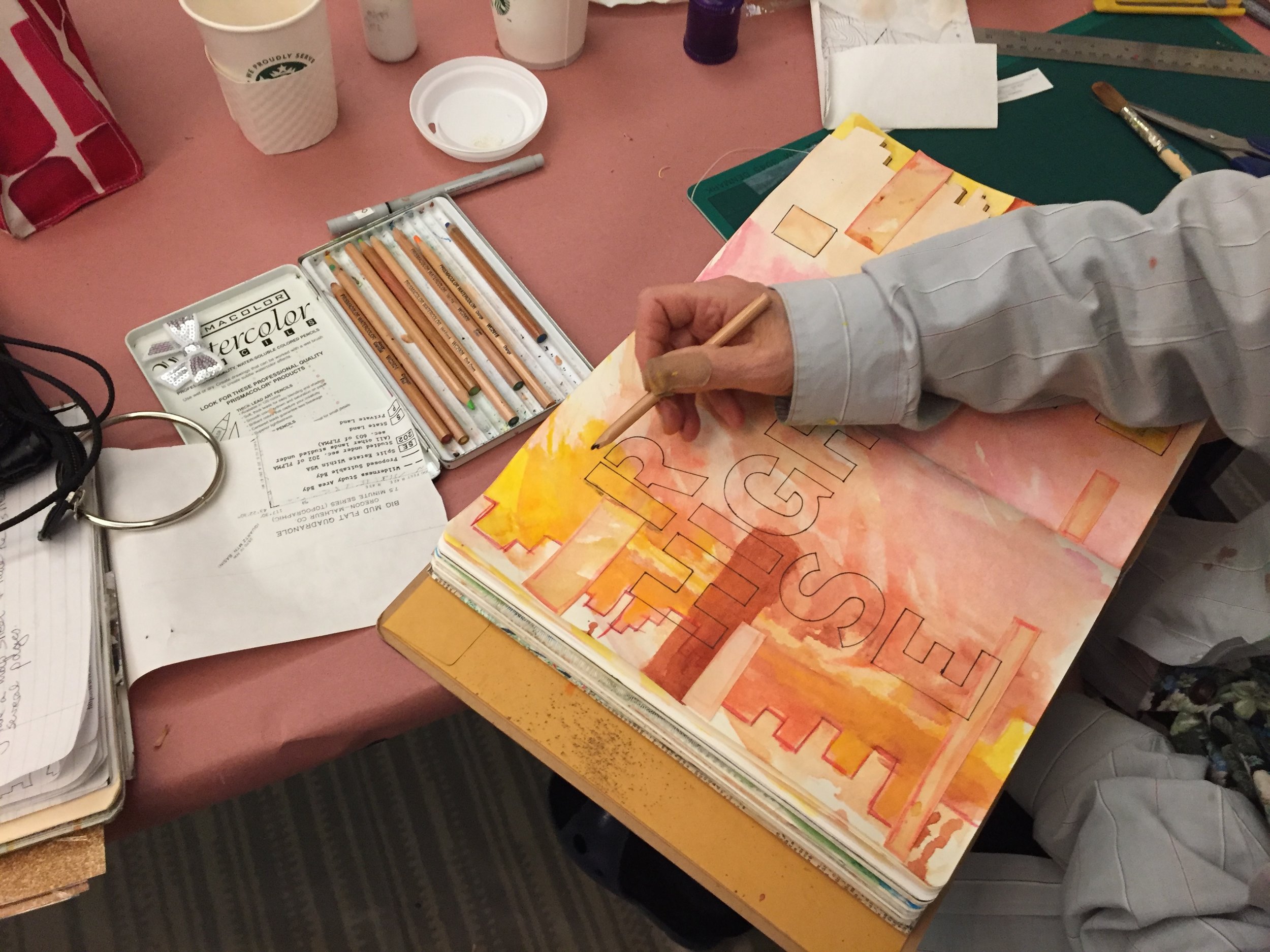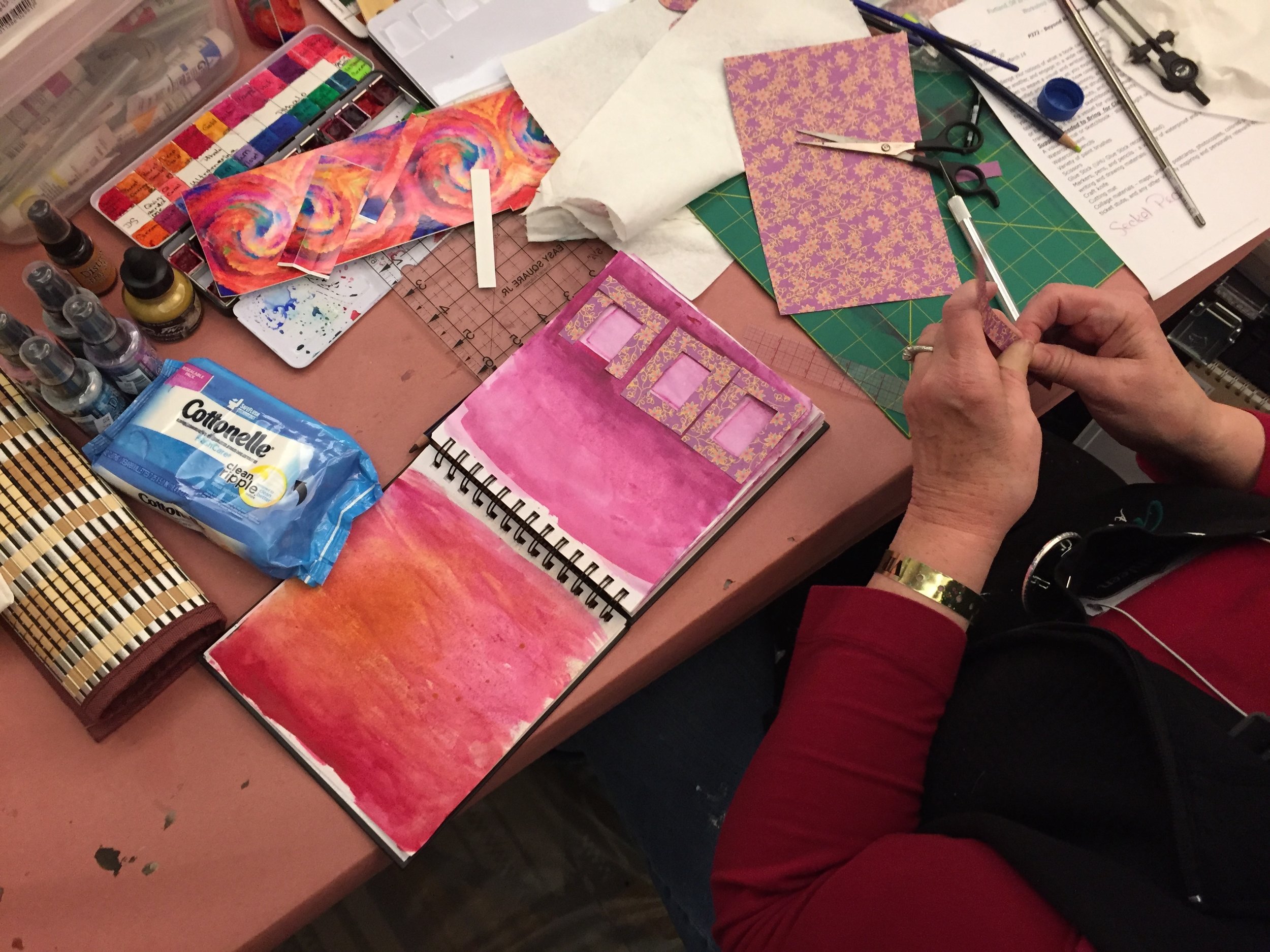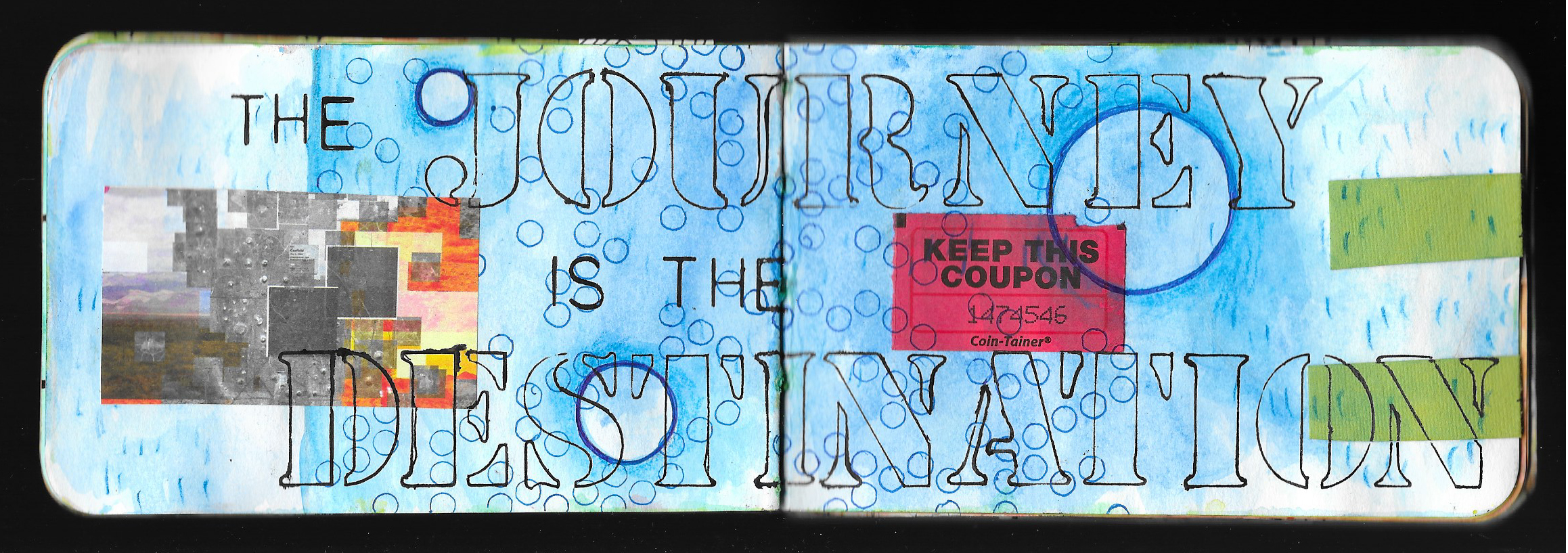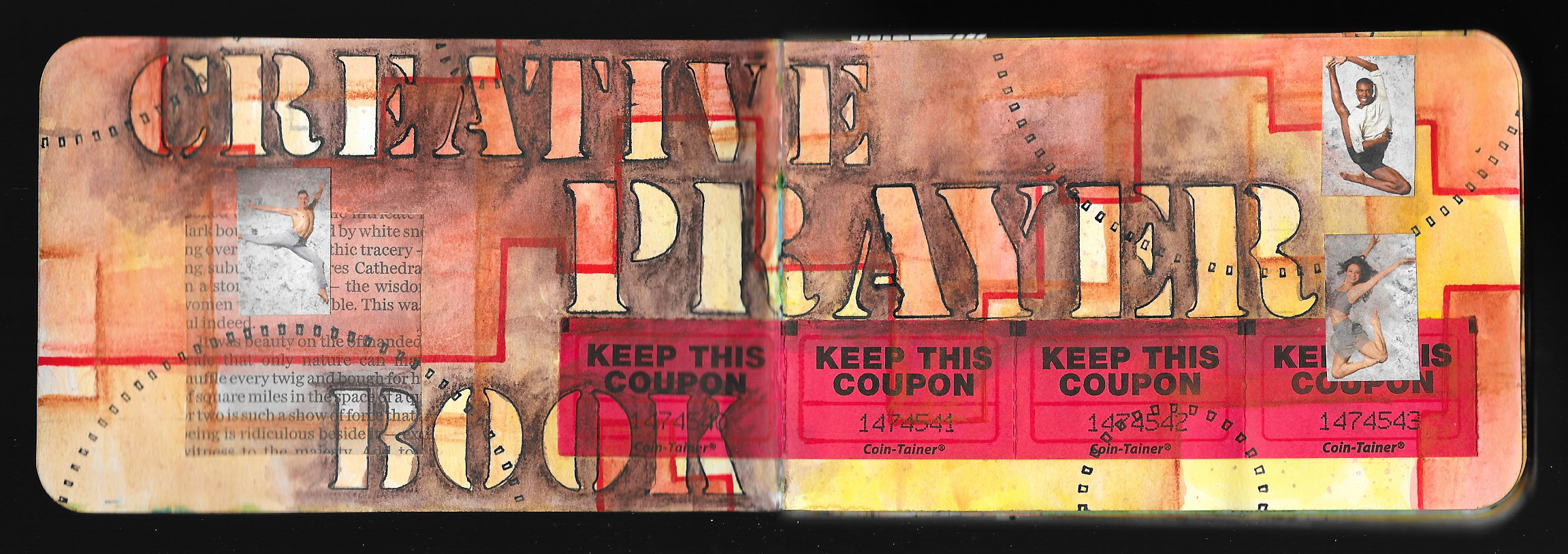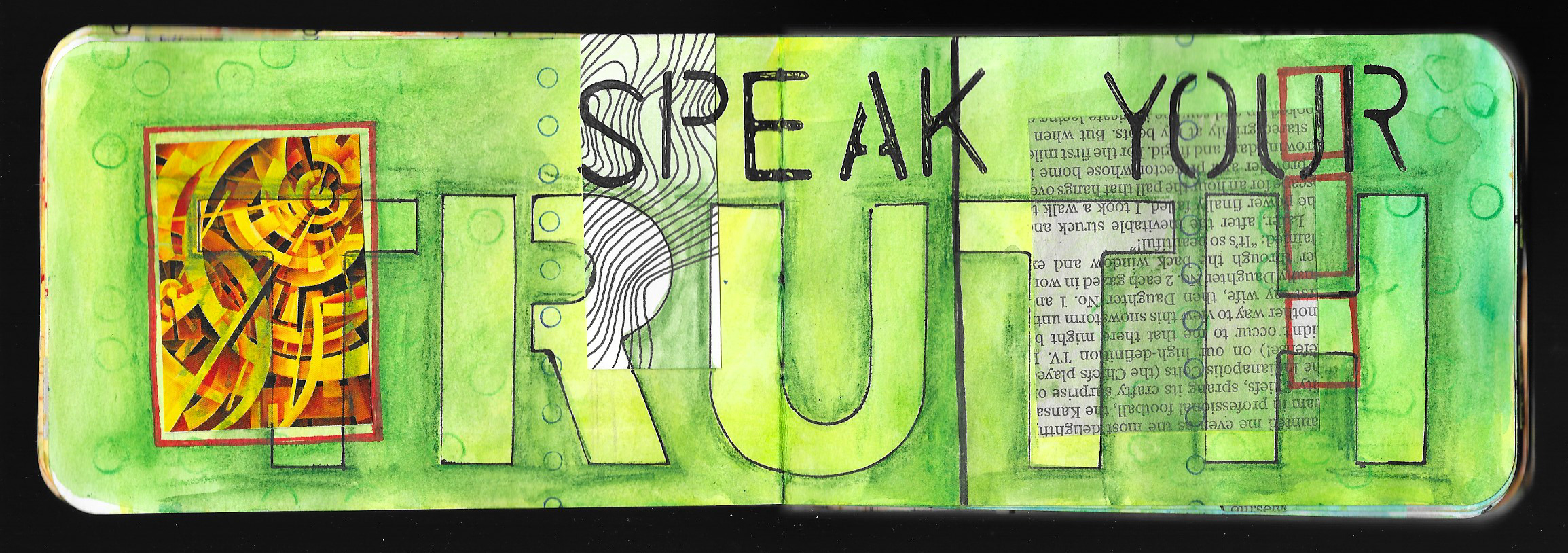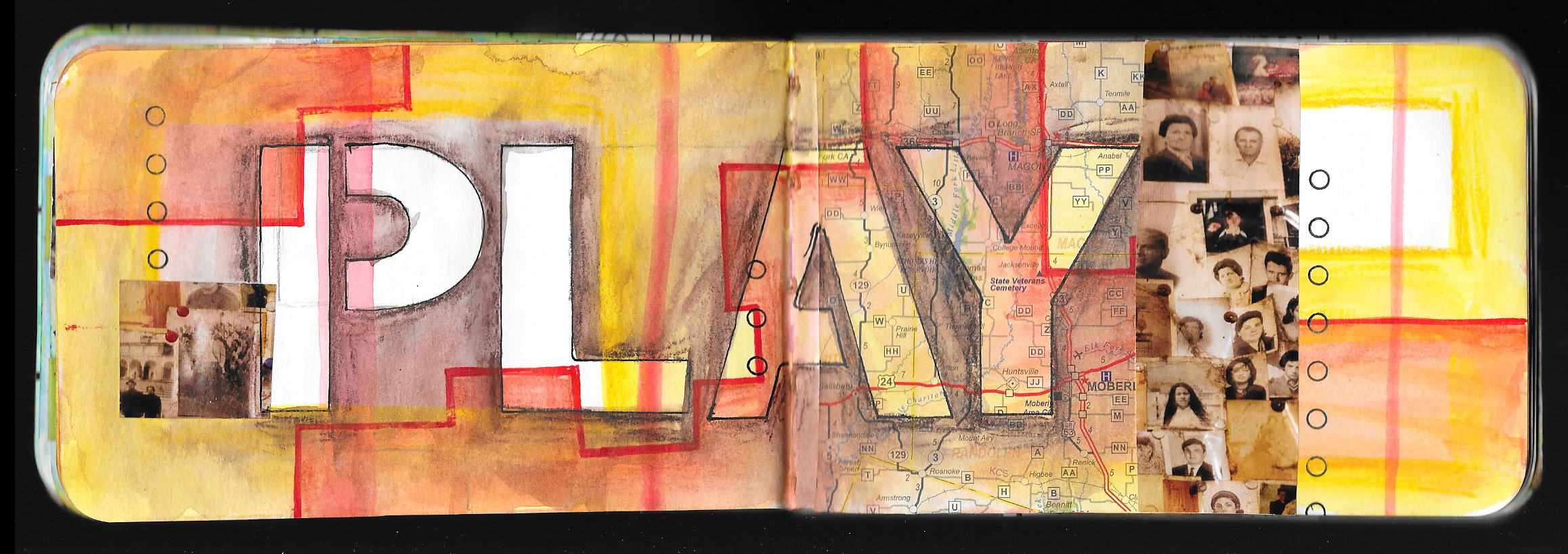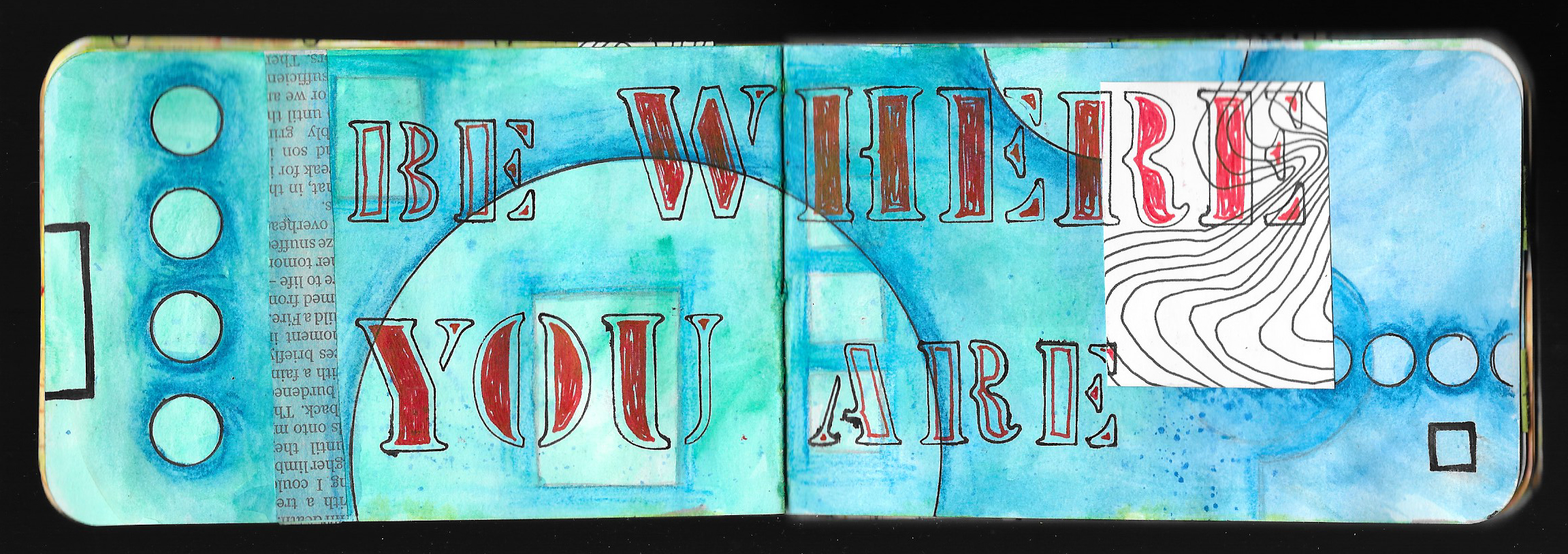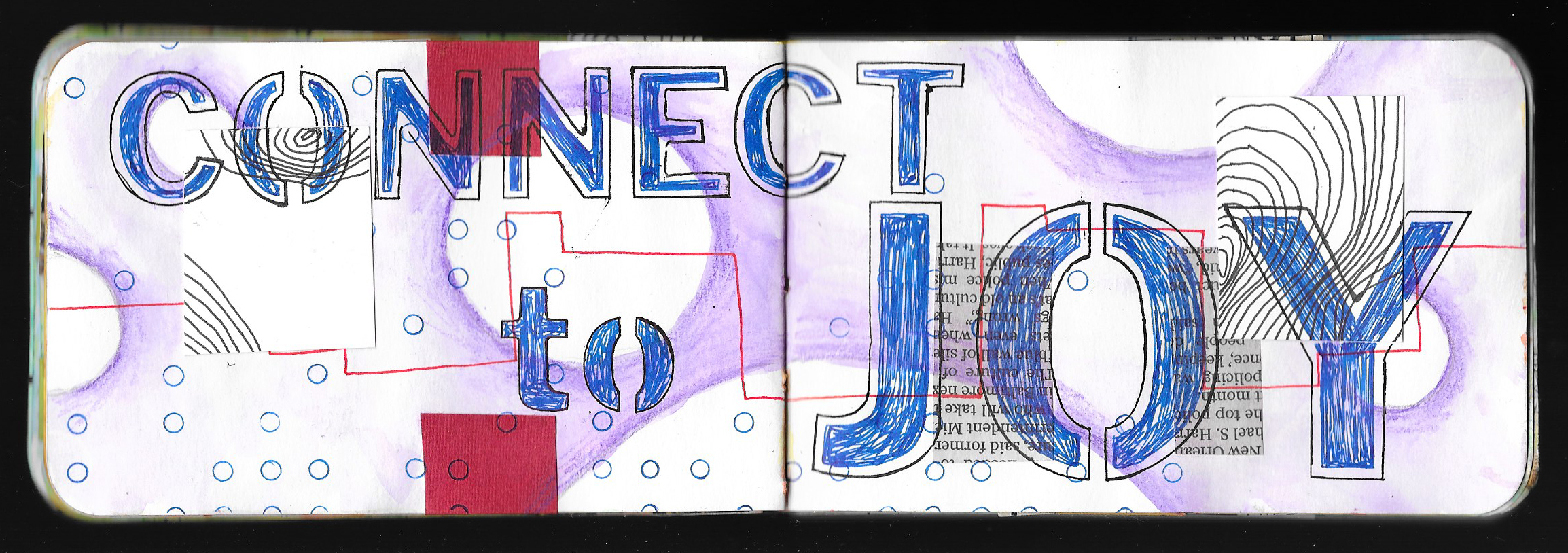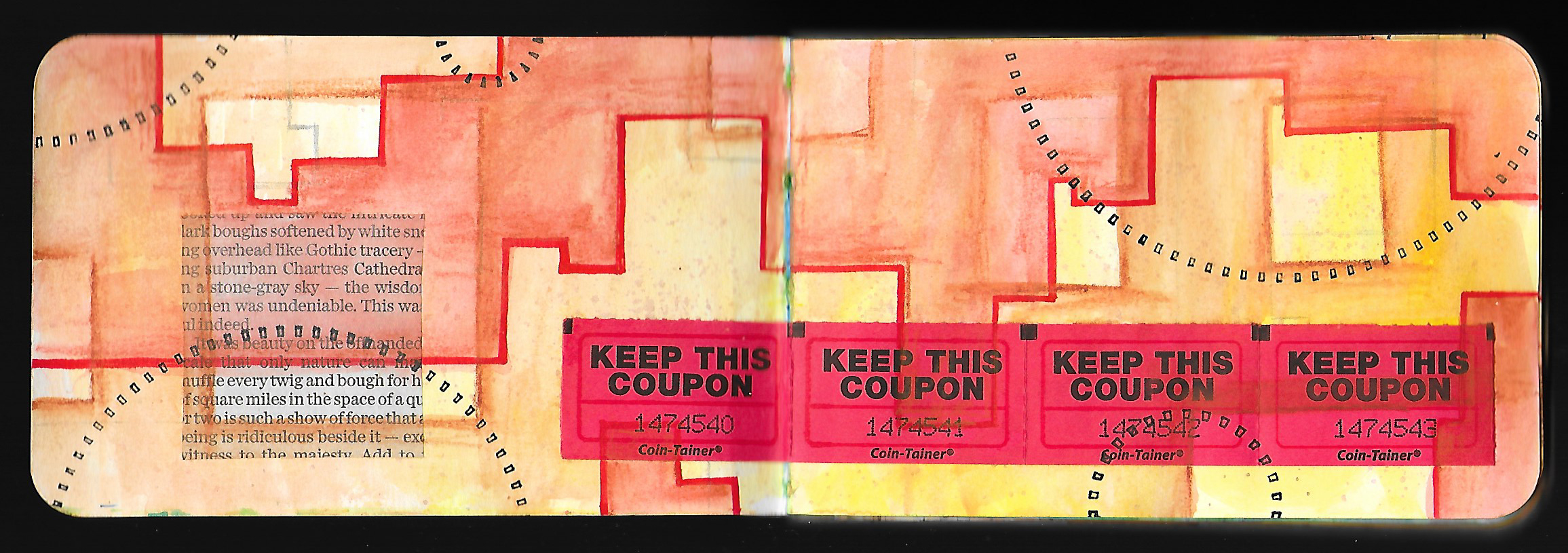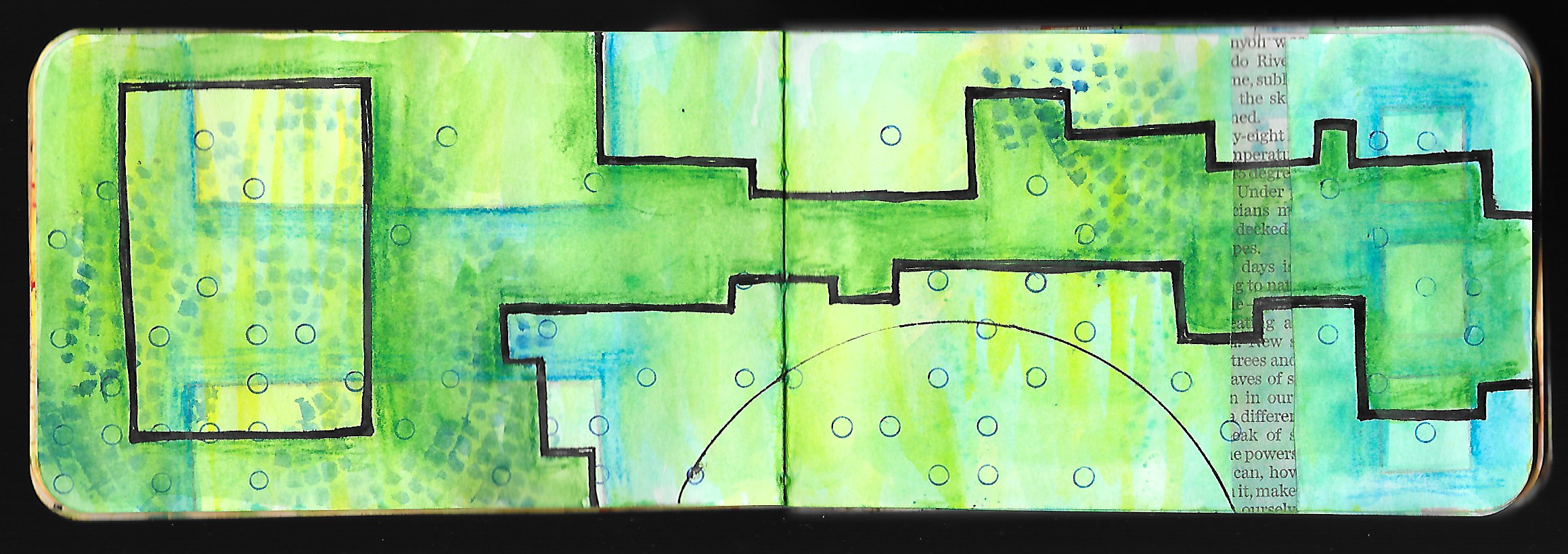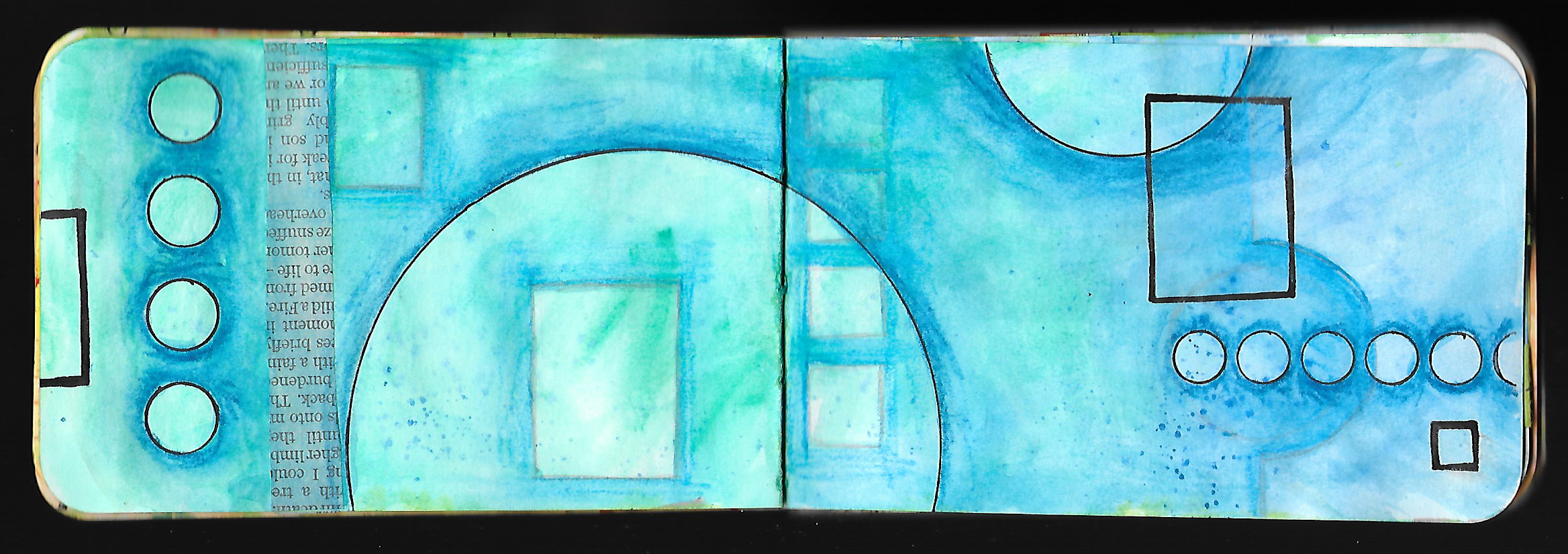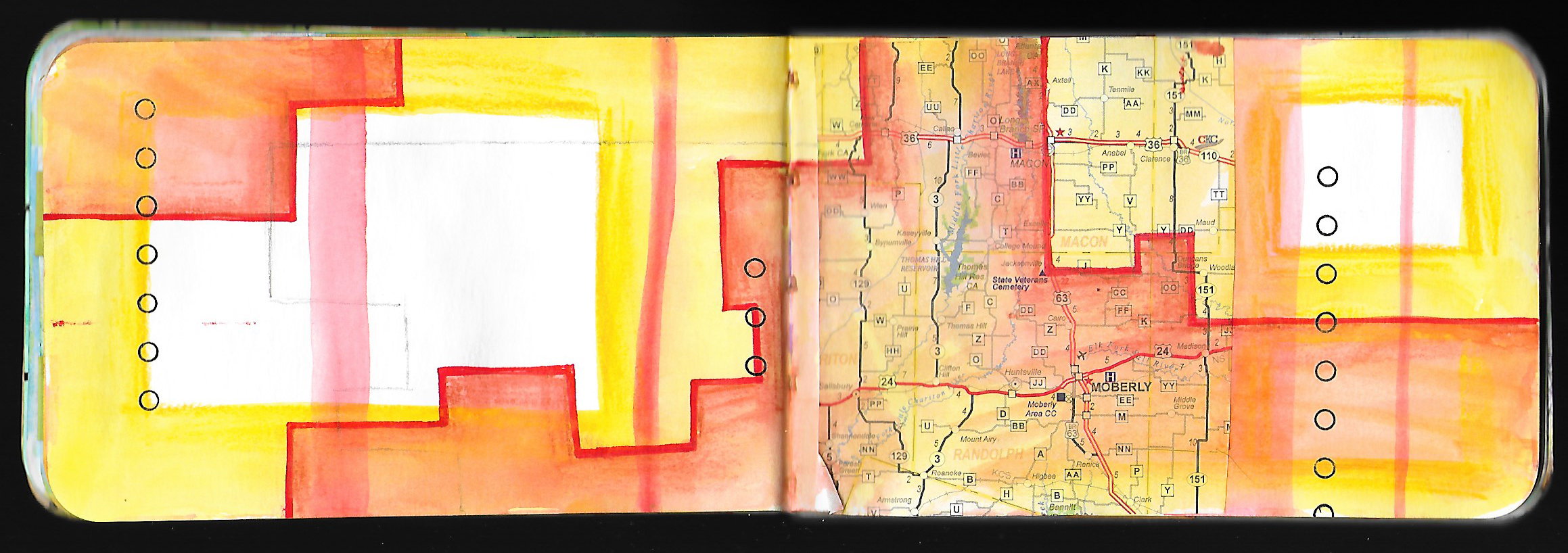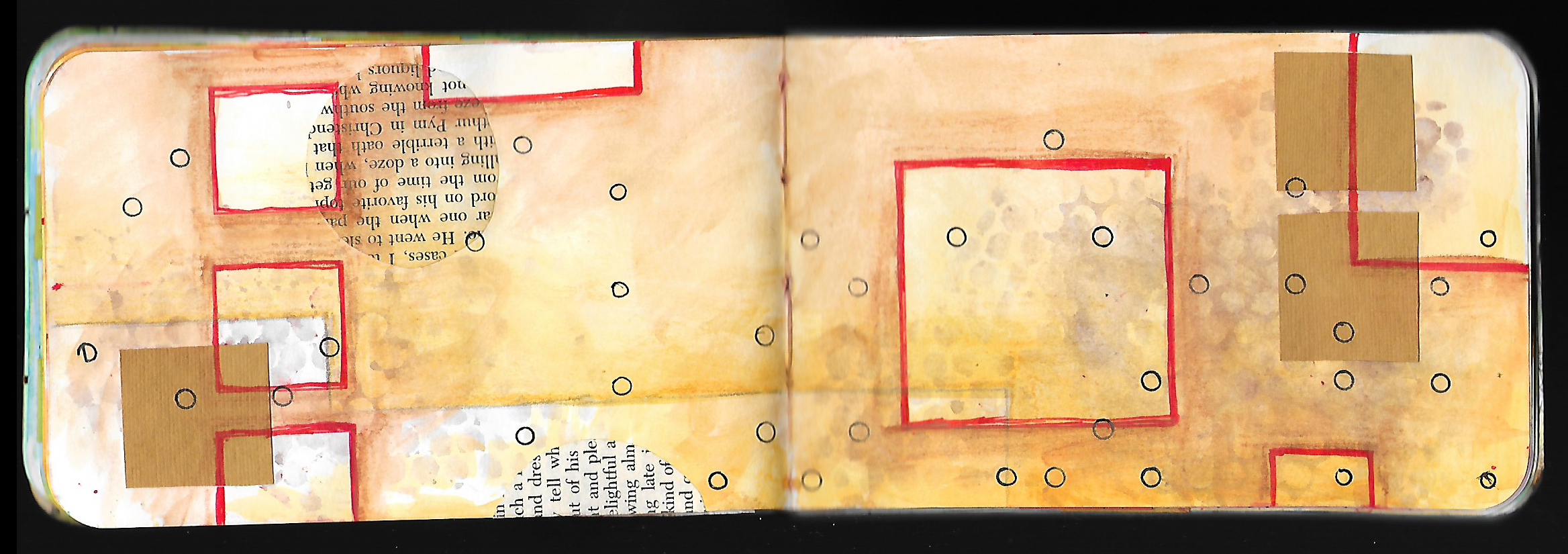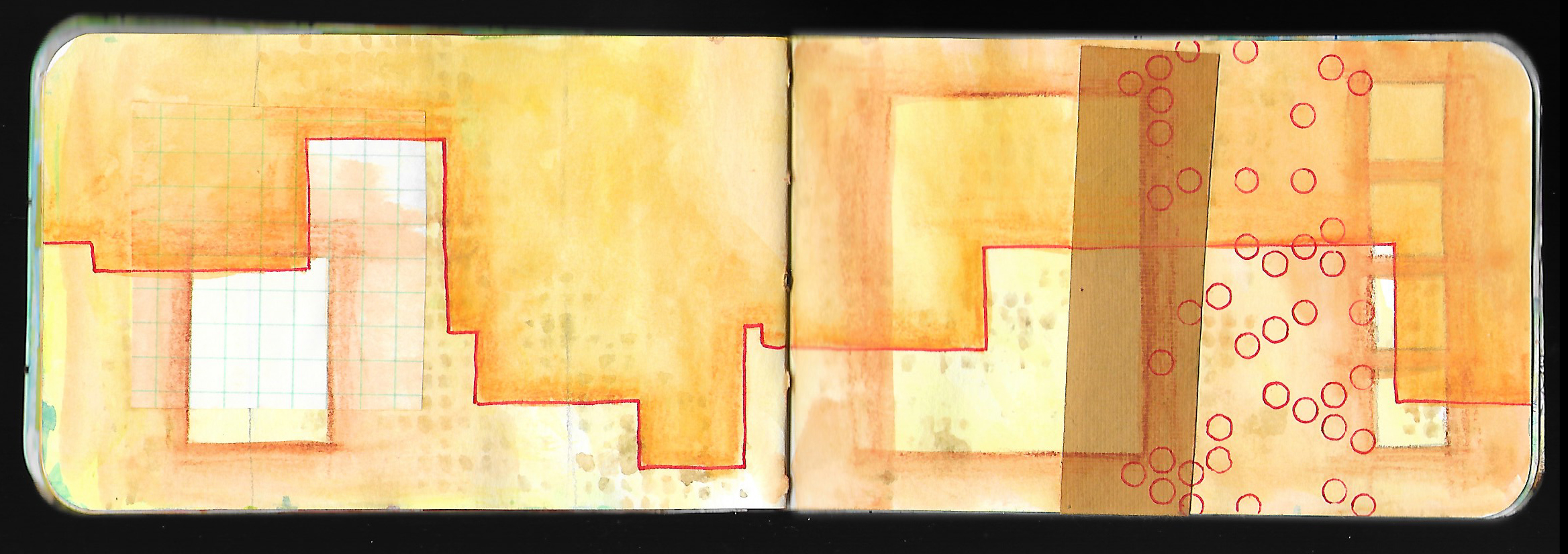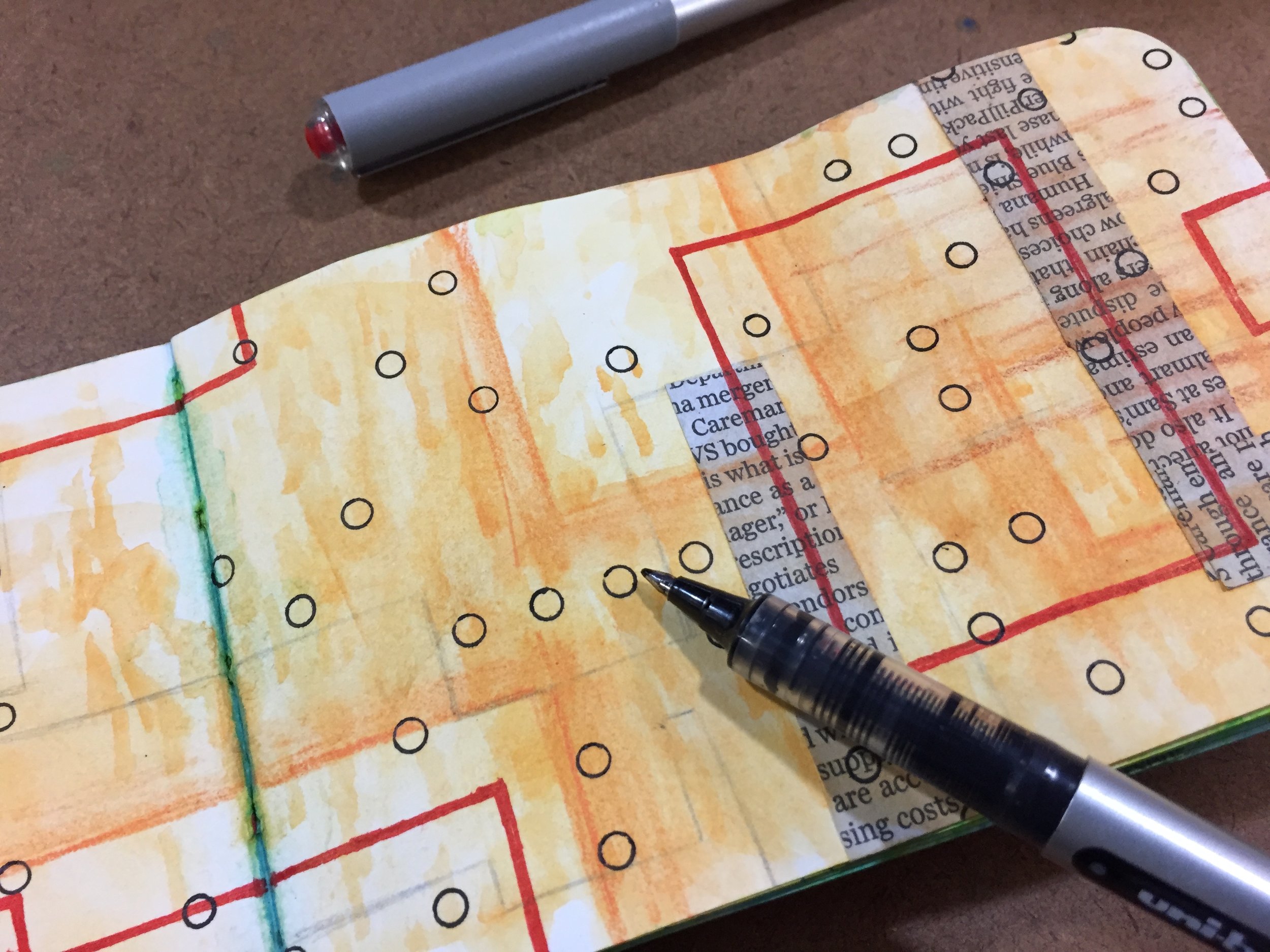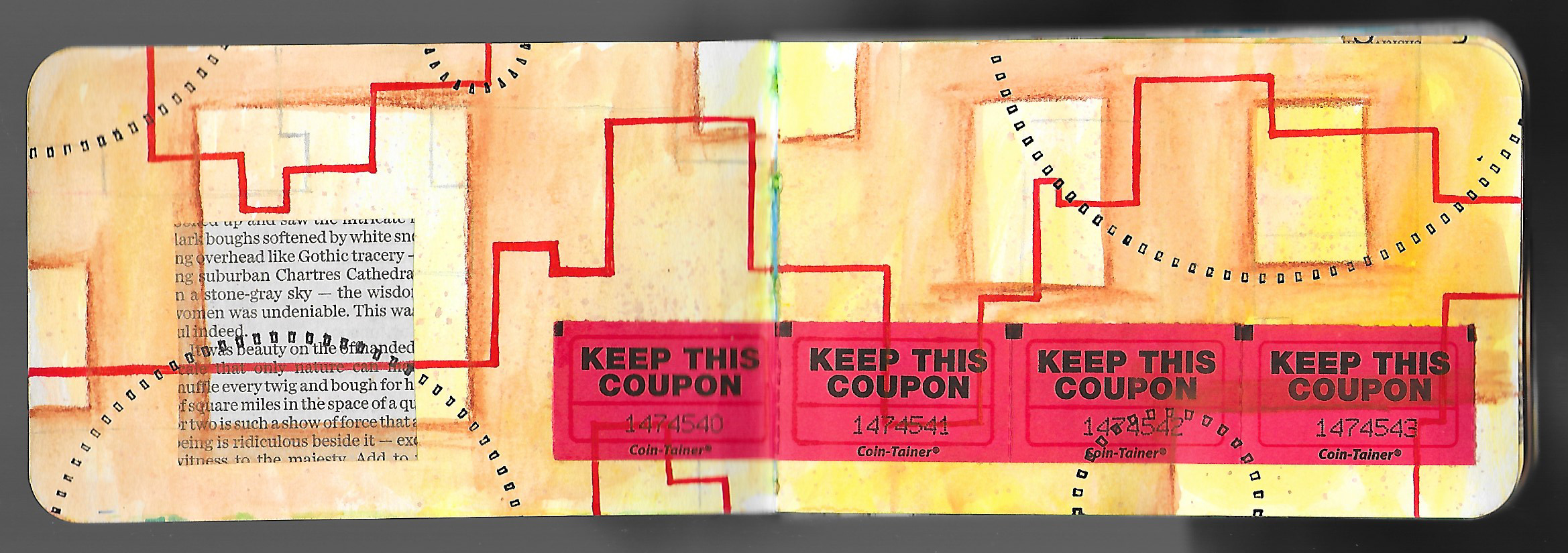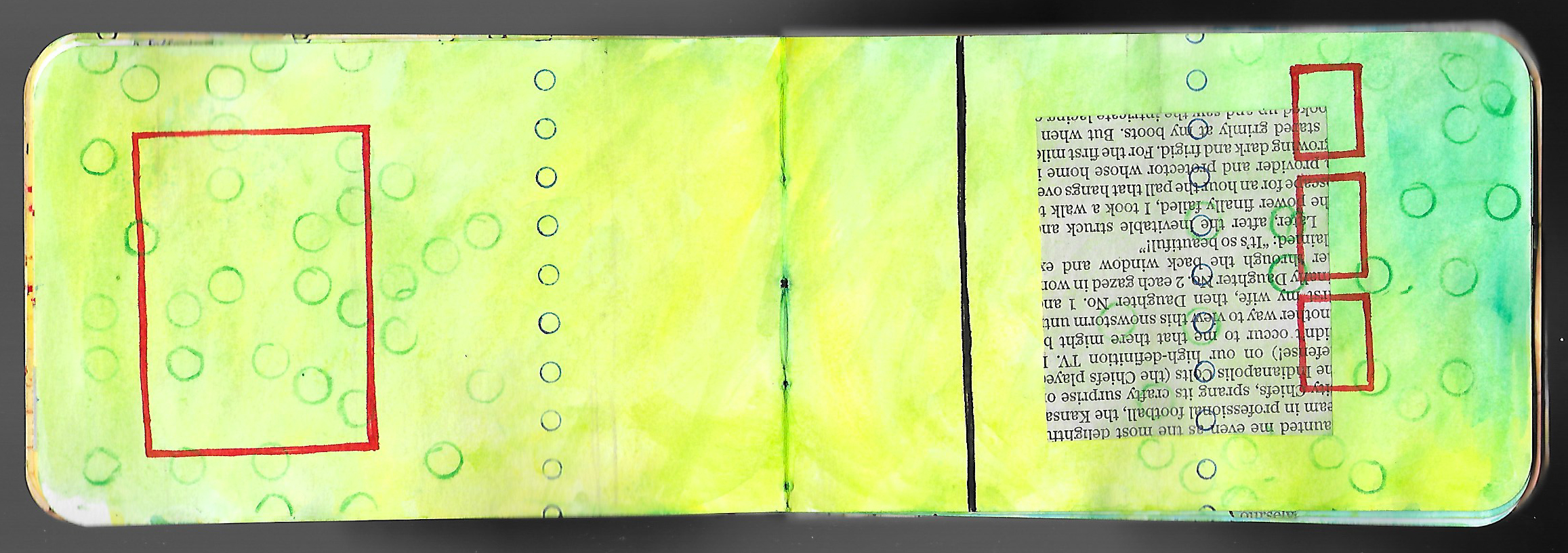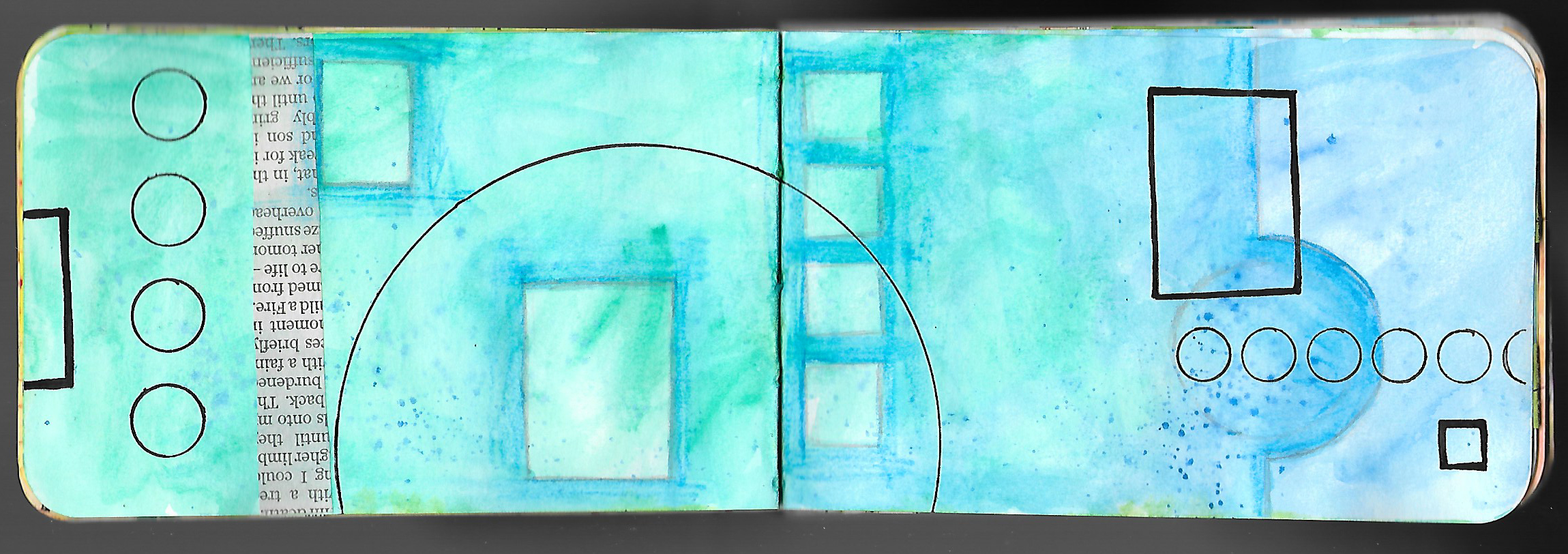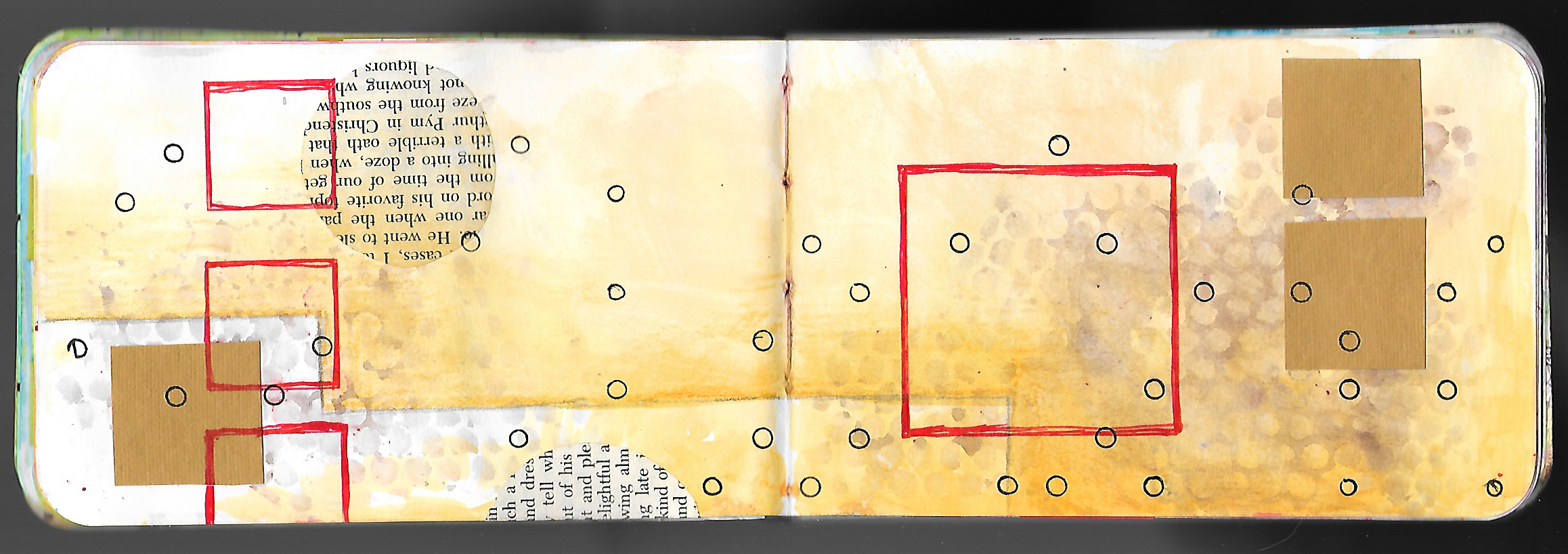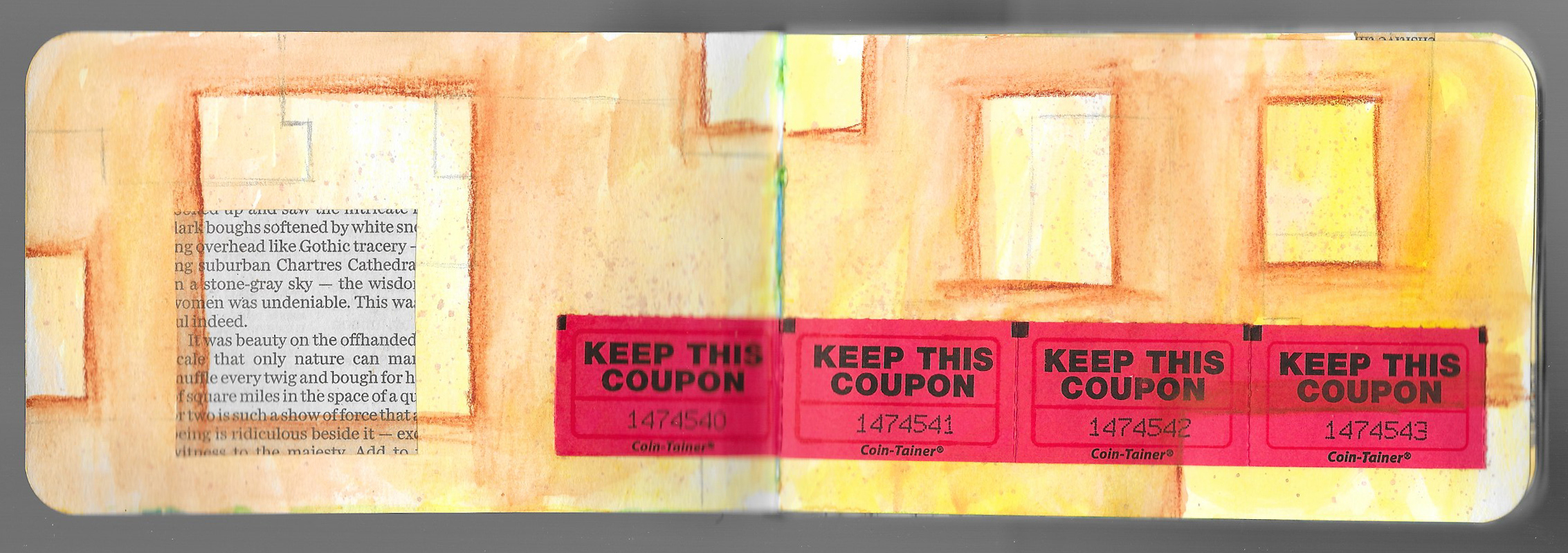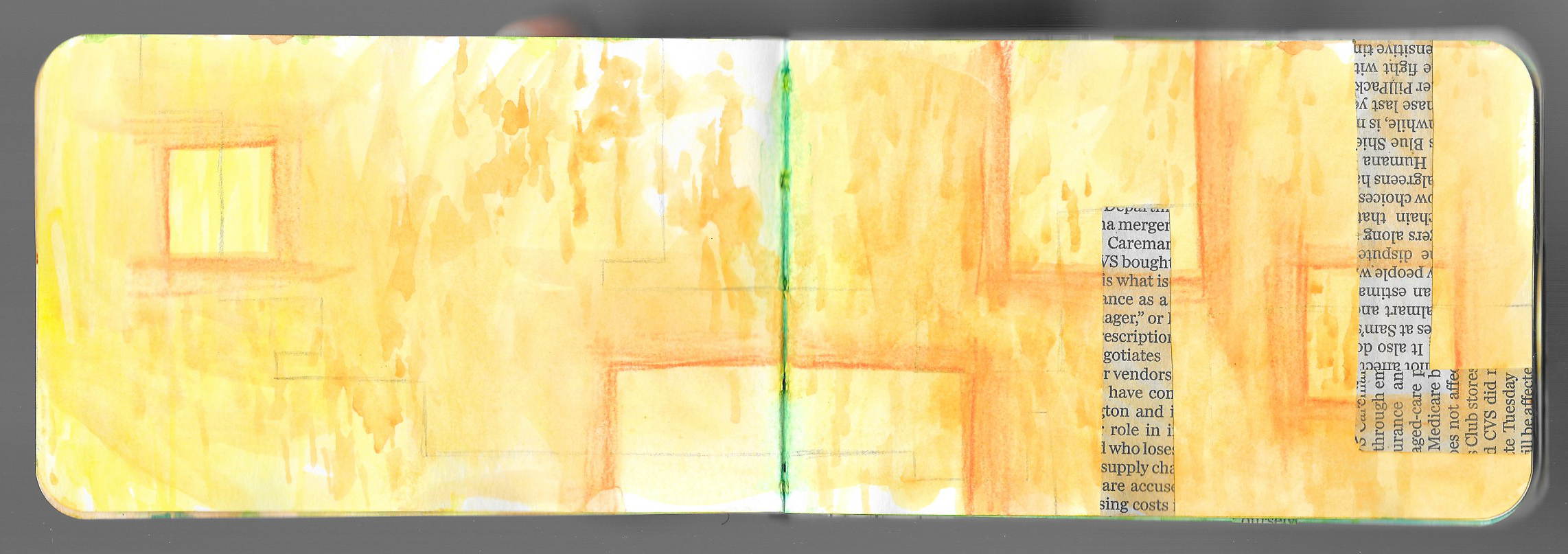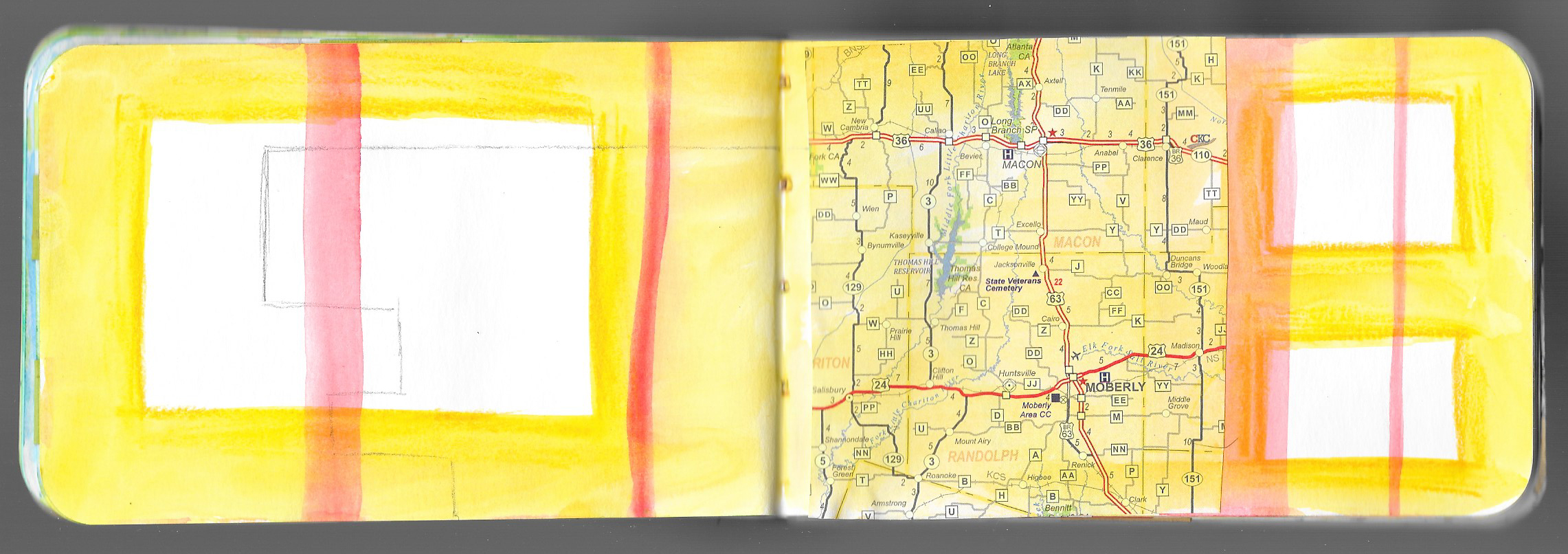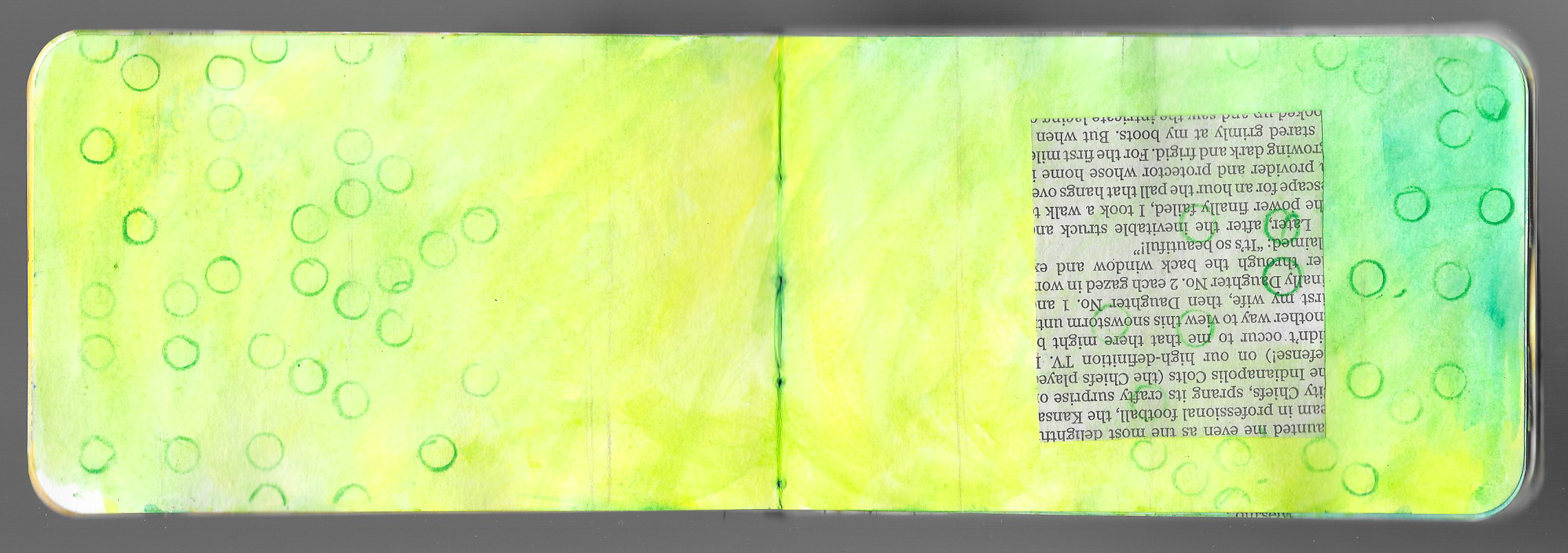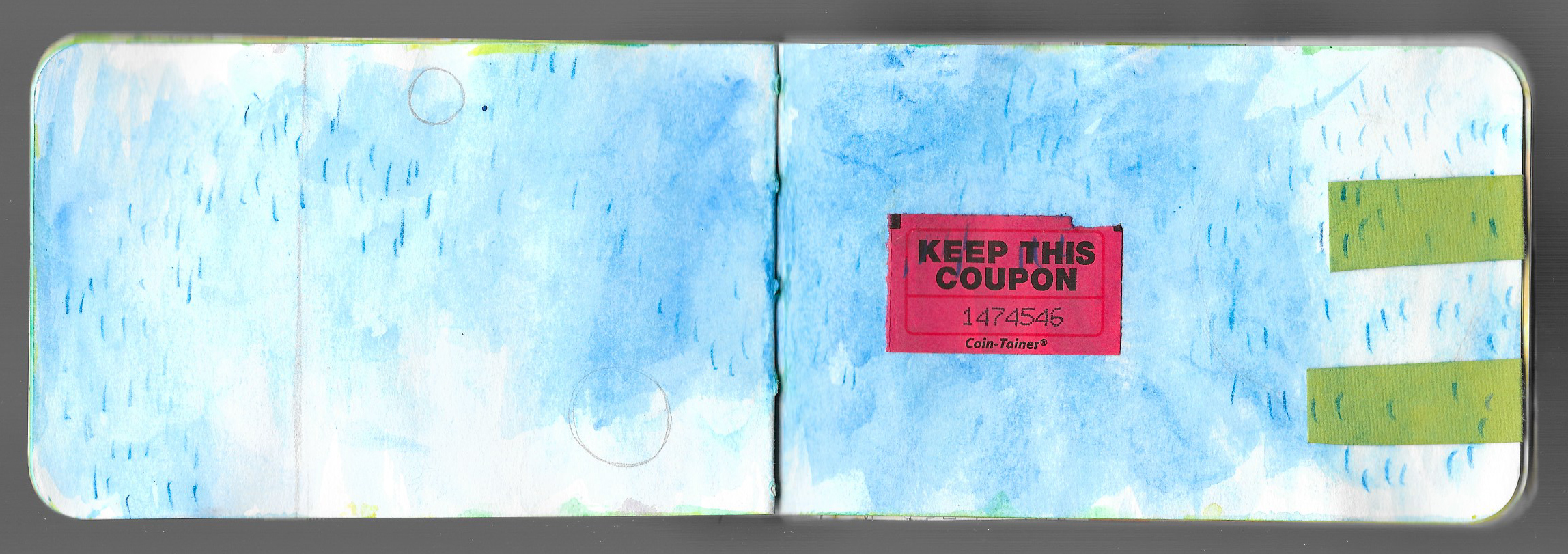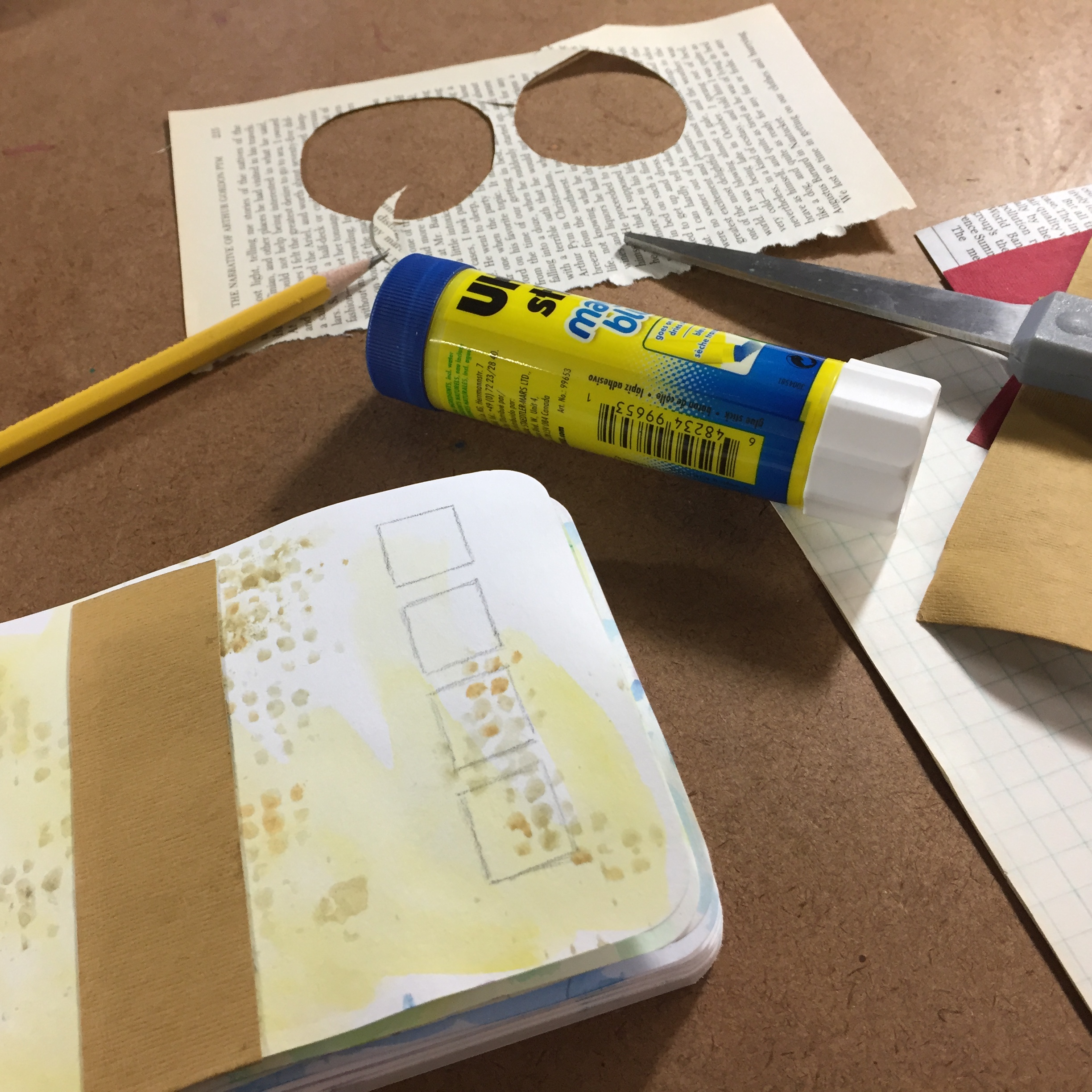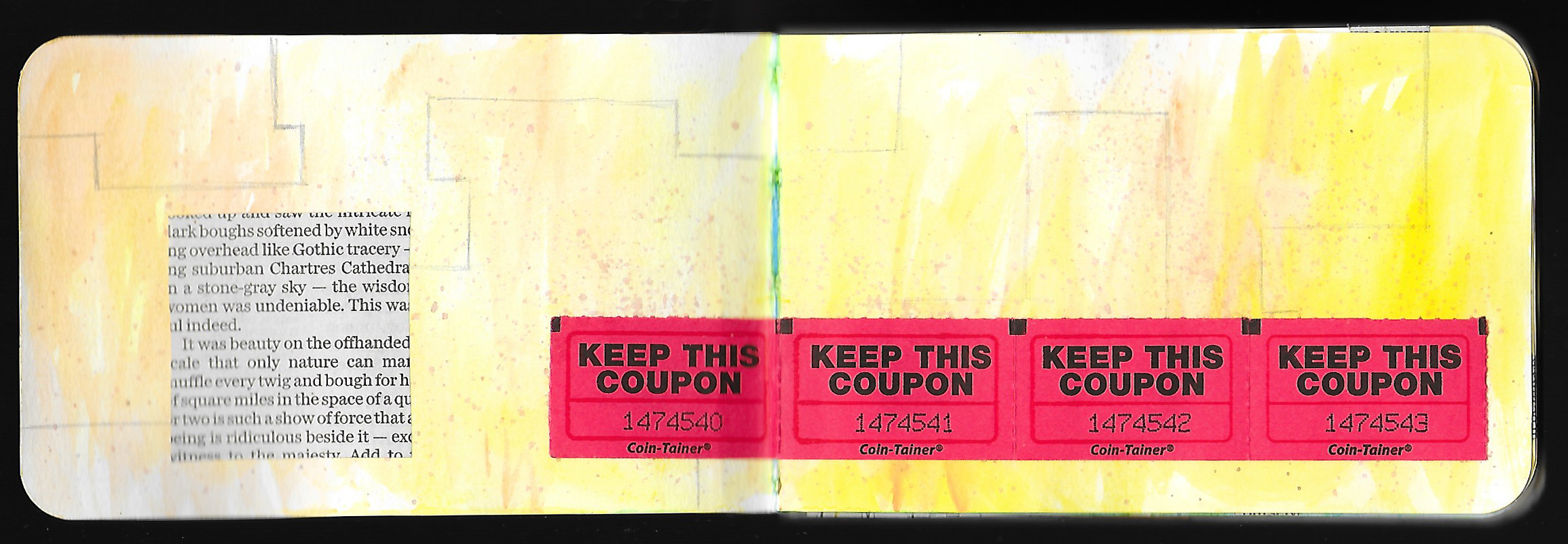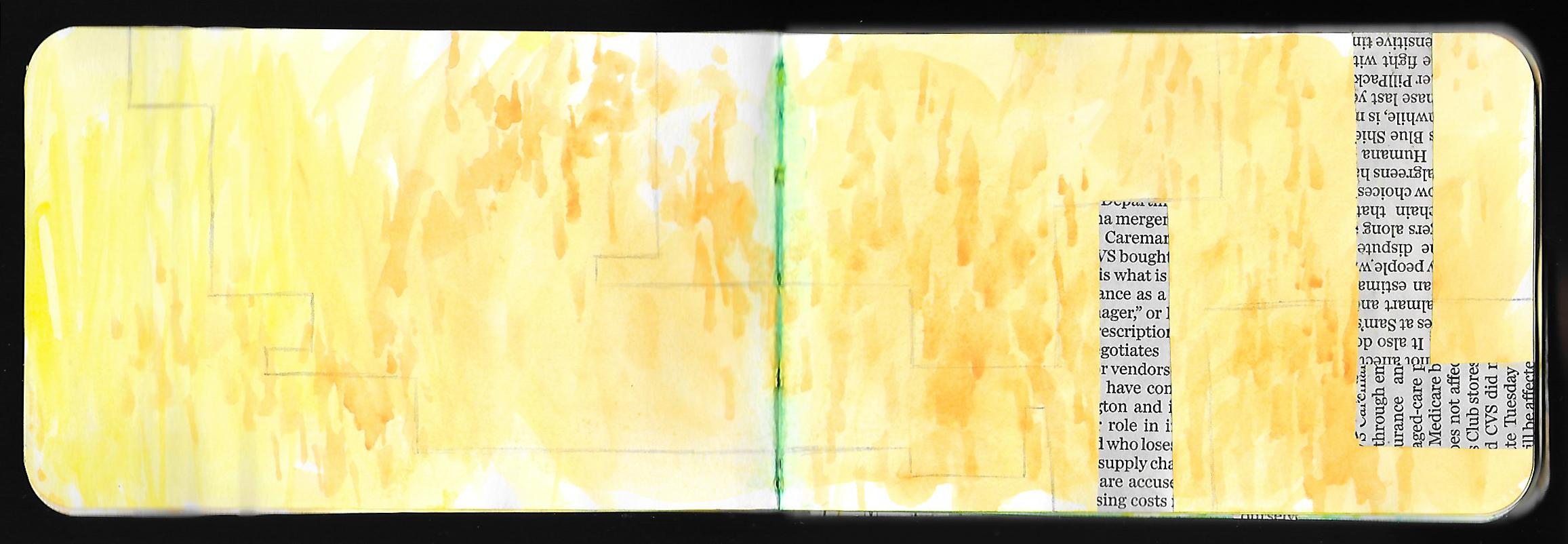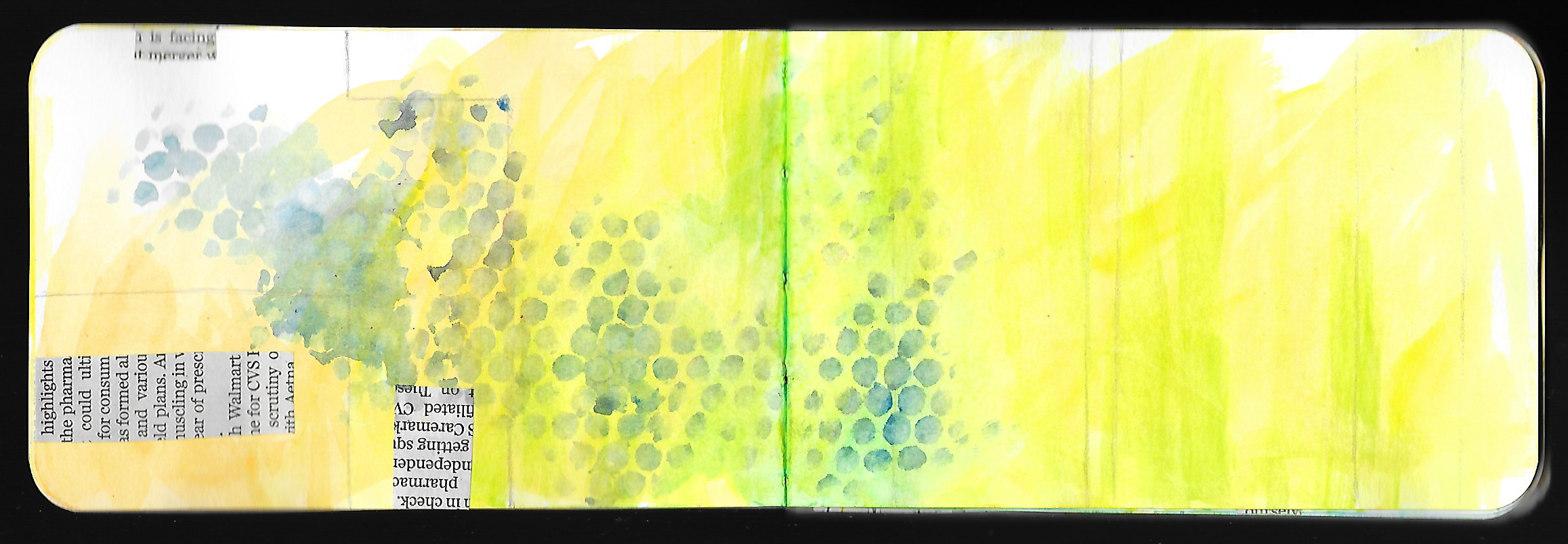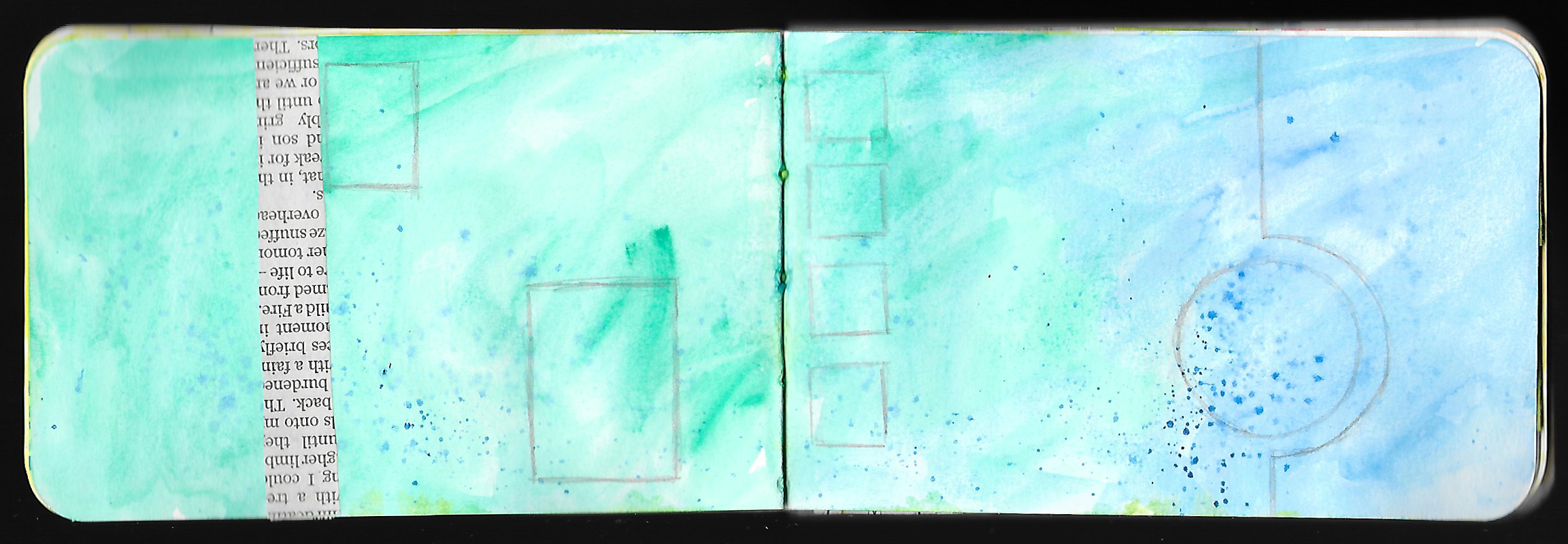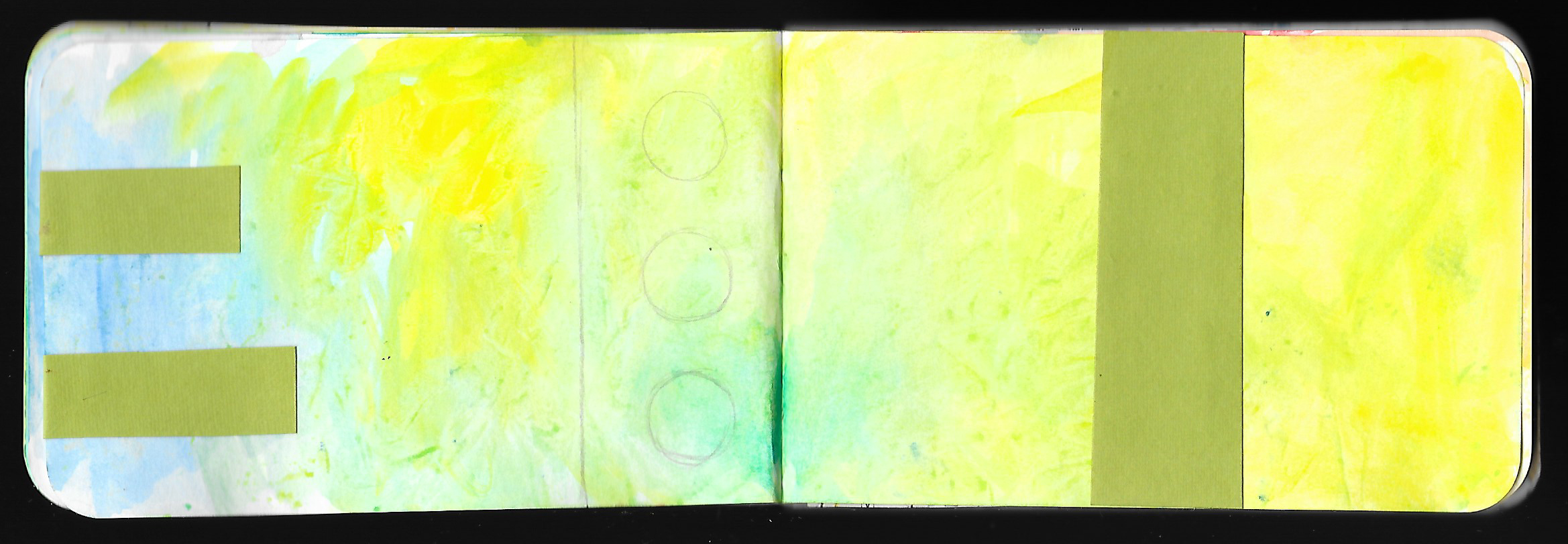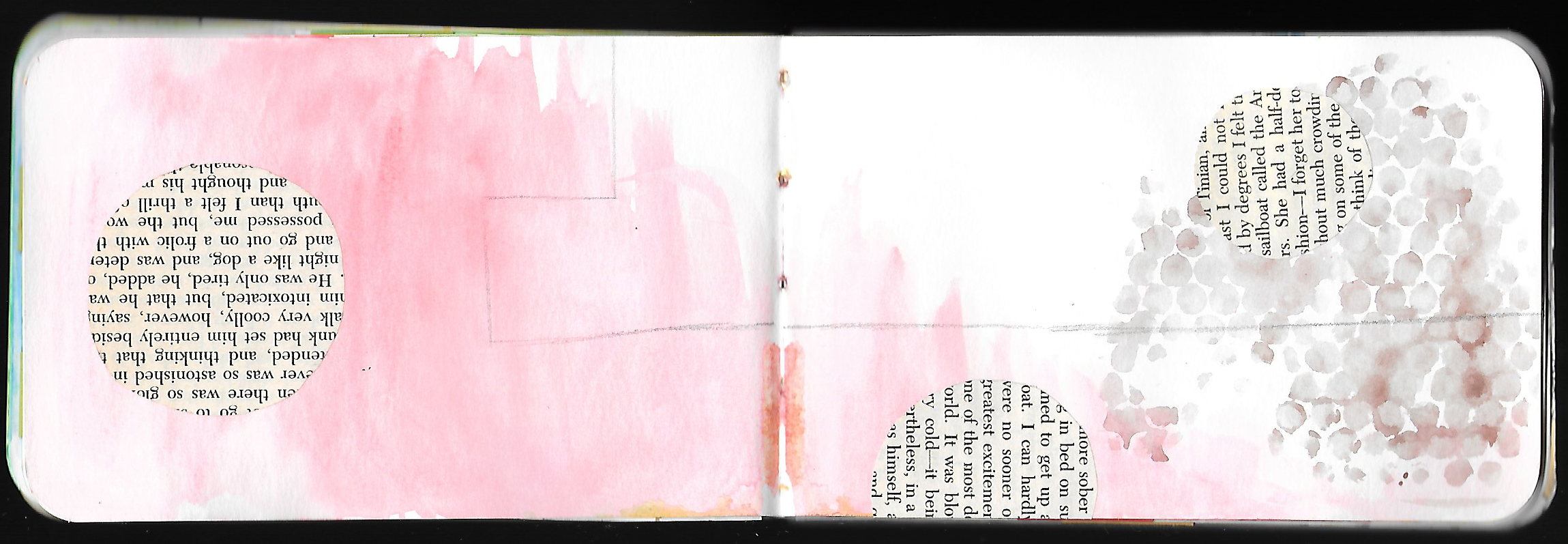I was very fortunate to spend last week teaching at the renowned John C. Campbell Folk School in the mountains of western North Carolina. I’ve known about Campbell for quite some time, and I probably heard about it fifteen years or so ago when I was teaching at the North Carolina Center for the Advancement of Teaching (NCCAT) and learned of it and other schools like it, such as Penland and Arrowmont. Ever since teaching at NCCAT, I had dreamed of teaching at places like this, and this past week, it came to be.
John C. Campbell is a special place. Secluded in western North Carolina, it’s a haven for craft and art enthusiasts, and it has a studio for nearly every discipline. At any given time throughout the year, a hundred or more students and instructors are working in blacksmithing, wood turning, quilting, jewelry making, and much, much more. I was fortunate to spend my week in the Paper and Book Arts studio and work with nine wonderful students.
We dove into the visual journaling in a class called Beyond Blank Pages. I designed this class to be a bit different than other journal classes I have taught, and we approach the journal in a slightly different way, though we use many of the tried and true techniques that I have used and taught for years. The main idea of this class was to rethink what a book can be and to weave a visual and written narrative among, between, and through the pages. We thought about creating connection and interactivity as we painted, collaged, and wrote. We cut and folded pages, created windows, tunnels, and doors that went through pages. We tore the edges of pages, and connected spaces with color, lines, words, and more.
Through it all I wanted the students to go in with no preconceived ideas and, as Lynda Berry suggests in her book Making Comics, to let their hands wander a bit and discover something new. So they painted and collaged and wrote and cut, as they allowed ideas to flow. Eventually they each struck on a theme, an idea, or a notion that would drive the work. It was amazing to see how each took a different path in their books as a result of letting go of their resistances, judgments, and attachments. Each one had a unique take. They didn’t finish or fill the book, but instead walked away with the beginnings of a special book and ideas of how to continue the journey.
It was an amazing week, full of power and discovery — filled with laughter and tears. I am filled with such gratitude, and I can’t thank, Jen, Thea, Dana, Eileen, Julie, Jo-Ellen, Vicki, Barbara, and Robin enough. I can’t wait to go back!


